Integrated Microwave Technologies TRICMTX7 Tri-Band ChannelMaster Transmitter TRICMTX7 User Manual M01 0029 00A CMTX7 rev1p03 MANUAL
Integrated Microwave Technologies, LLC. Tri-Band ChannelMaster Transmitter TRICMTX7 M01 0029 00A CMTX7 rev1p03 MANUAL
Manual
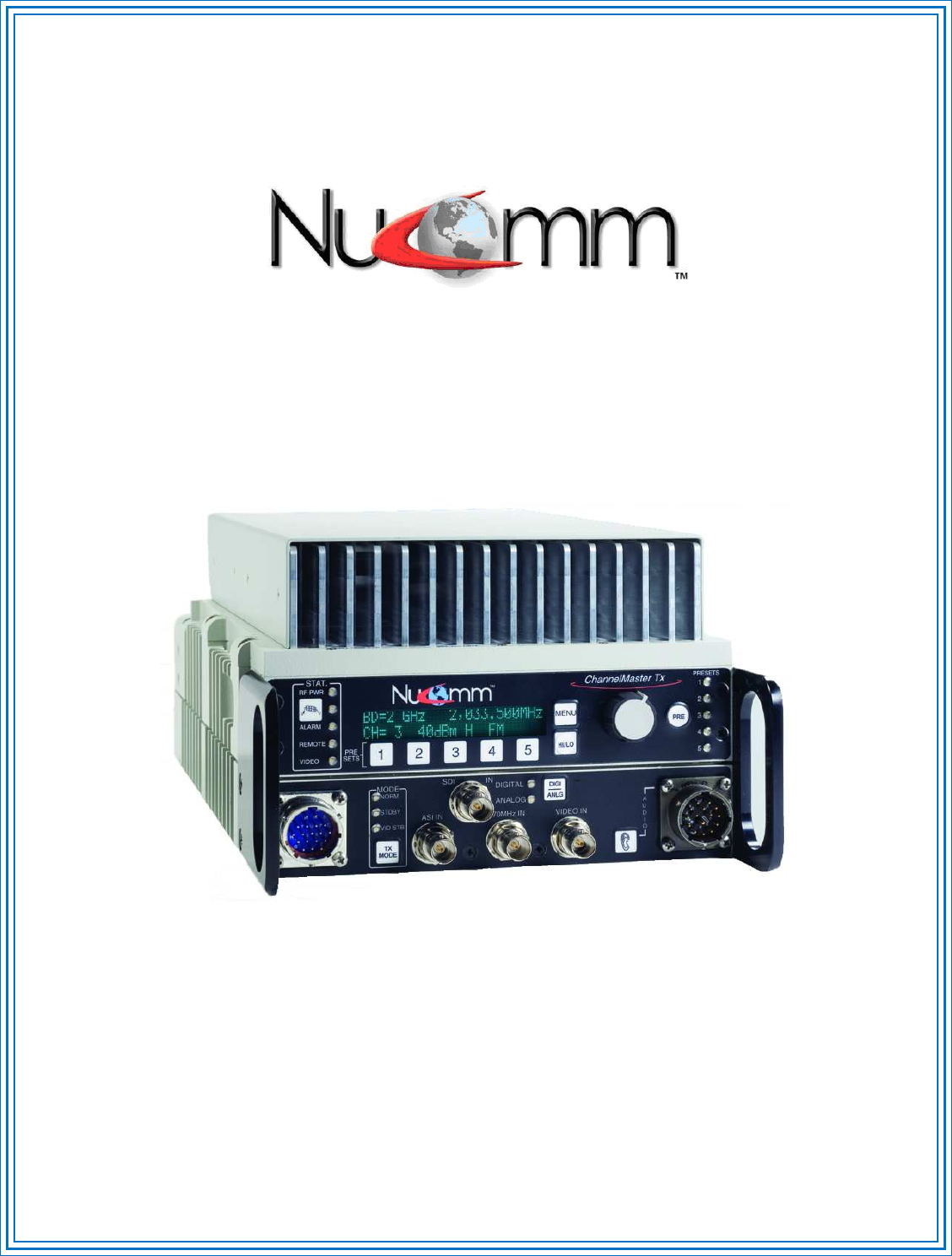
CHANNELMASTER TX7
Portable Microwave Transmitter
User Manual
NUCOMM PUBLICATION: M01-0029-00A, REV 1.03

Revision 1.03
ii ChannelMaster TX7 Transmitter
CAUTION!
RISK OF ELECTRICAL SHOCK. DO NOT REMOVE EQUIPMENT COVERS.
• Do not remove any equipment covers.
• Refer servicing to qualified technicians only.
• Disconnect all power before servicing.
• Read and perform all instructions carefully. Failure to follow suggested instruc-
tions and guidelines may void all warranties.
FCC STATEMENT
This equipment has been tested and found to comply with
Part 74.637 (a) (2) of the FCC Rules and Regulations.
Any unauthorized changes or modifications not expressly approved by
Nucomm, Inc. could void the user’s authority to operate the equipment, and
invalidate the equipment’s warranty.

Revision 1.03
iii
Proprietary Information and Disclaimer Notice
All information and graphic images contained within this manual are the sole property of Nu-
comm, Inc. and are issued in the strictest of confidence. This material may not be reproduced,
stored, copied, or converted in any form, nor shall it be disclosed to others or used for manufac-
turing or any other purpose without the written permission of an authorized Nucomm represen-
tative.
Nucomm, Inc. has made every effort to ensure the accuracy of this material at the time of printing.
However, as the specifications, equipment, and this manual are subject to change without notice,
Nucomm, Inc. assumes no responsibility or liability whatsoever for any errors or inaccuracies that
may appear in this manual, or for any decisions based on its use. This manual is supplied for
informational purposes only and should not be construed as a commitment by Nucomm, Inc.
Warranty
Equipment manufactured by Nucomm, Inc. is warranted to meet all published specifications and
to be free from defects in material and workmanship within a period of two years from date of
shipment from Nucomm. The company’s liability under this warranty is limited to:
• Servicing or adjusting equipment.
• Replacement of defective parts.
Any equipment returned to the factory shall have the freight paid for by the buyer.
Equipment showing damage by misuse, abnormal conditions of operation, or attempts to repair
by other than authorized service personnel shall be excluded from this warranty. Nucomm, Inc.
shall in no event be responsible for incidental injury or property damage. Since Nucomm, Inc.
has no control over conditions of use, no warranty is made or implied as to suitability for the
customer’s intended use, beyond such performance specifications as are made part of the pur-
chase order. There are no warranties expressed or implied, except as stated herein. This limi-
tation on warranties shall not be modified by verbal representations.
Shipping Damage
Equipment shipped FOB Nucomm, Inc.; shall become the property of buyer upon delivery and
receipt from carrier. Any damage in shipment should be handled by the buyer directly with the
carrier. Immediately request the carrier’s inspection upon evidence of damage in shipment.
Field Service
Nucomm products are designed with easy access to components to facilitate service. However,
some Nucomm modules cannot be service in the field. To prevent voiding of the Nucomm
warranty, please contact Nucomm before servicing or making any repairs. The user is cautioned
to read all module descriptions in this manual. Warnings are included in the circuit descriptions
and on certain modules themselves.
Replacement Modules
Troubleshooting to the component level is often not cost-effective and frequently impossible.
Often the practical method of effecting repairs is to substitute known good spare modules for
suspect units. Replacement modules for Nucomm’s standard product line are usually available.

Revision 1.03
iv ChannelMaster TX7 Transmitter
Technical Support Information
Technical Support personnel are available to extend technical assistance to customers while
installing, operating, or troubleshooting Nucomm equipment. Please have your model number and
serial number available.
Telephone
During Nucomm business hours, 8:30am - 5:30pm EST (-5 Hours, GMT), call:
US ......................................................908-852-3700
International........................................001-1-908-852-3700
After hours, call:
US or International..............................888-531-3892
Email Email address.................................................service@nucomm.com
Internet
Web address ..................................................www.nucomm.com
Equipment Returns
If equipment cannot be successfully restored through telephone consultation, return to the factory
may be required. Loaner items may be available until the repaired items are returned.
For out-of-warranty equipment only: Nucomm evaluates all returned units, and then confers with
the client on corrective action. If no fault is found, or no corrective action is authorized, a
diagnostic fee may be charged.
Prior to returning a Nucomm product to the factory, please obtain a return material authorization
(RMA) number and shipping instructions from Nucomm.
When returning equipment to Nucomm, it is very helpful to enclose a note containing the
following:
• RMA number.
• Serial number.
• A detailed description of the problem.
• Name of an engineer or technician we may contact regarding problems encountered.
• A “ship to” and “bill to” address.
Ship all returns to:
Nucomm, Inc
Attn: RMA# (your RMA number)
101 Bilby Rd
Hackettstown, NJ 07840, USA
(908) 852-3700
For International returns:
In addition to the instructions above, when shipping internationally Nucomm recommends the use
of a courier such as Federal Express, UPS, etc, and that the goods be shipped DOOR-TO-DOOR
PRE-PAID. This will reduce Customs costs, handling charges and delays. Enclose all the
information above, plus a statement that the equipment was manufactured in the United States
(the latter is needed to expedite customs processing).

Revision 1.03
v
TABLE OF CONTENTS
1.
PRODUCT DESCRIPTION...................................................................................................................1-1
1.1
Introduction.........................................................................................................................................1-1
1.2
Model Numbering Scheme................................................................................................................1-2
2.
FEATURES............................................................................................................................................2-1
2.1
Feature Overview...............................................................................................................................2-1
2.2
System Functional Block Diagram ....................................................................................................2-3
2.3
System Chassis Features..................................................................................................................2-4
2.4
User Interface Overview ....................................................................................................................2-4
2.5
Standby Mode ....................................................................................................................................2-4
2.6
Video Signal Encoding.......................................................................................................................2-4
2.7
Audio Sub Carriers.............................................................................................................................2-4
2.8
Multi-Mode Modulator ........................................................................................................................2-4
2.9
Multi-band Microwave Output............................................................................................................2-5
2.10
Signal Strength Indicators..................................................................................................................2-5
2.11
Video Presence Detector...................................................................................................................2-5
2.12
Remote Control Feature ....................................................................................................................2-5
2.13
Power Supply .....................................................................................................................................2-5
2.14
Internal Self-Test................................................................................................................................2-5
2.15
Other Standard Features...................................................................................................................2-5
2.16
Options ...............................................................................................................................................2-6
2.17
Accessories ........................................................................................................................................2-6
2.18
Flexibility.............................................................................................................................................2-6
3.
SPECIFICATIONS AND FREQUENCY PLANS ..................................................................................3-1
3.1
Frequency Plans (USA) .....................................................................................................................3-6
4.
INSTALLATION .....................................................................................................................................4-1
4.1
Unpacking and Inspection .................................................................................................................4-1
4.2
Pre-Installation Checkout...................................................................................................................4-1
4.3
Mechanical Installation.......................................................................................................................4-1
4.4
Electrical Installation ..........................................................................................................................4-3
4.5
Power Connection..............................................................................................................................4-3
4.6
ASI, SDI, Composite & 70MHz Ports................................................................................................4-3
4.7
RF OUTPUT.......................................................................................................................................4-4
4.8
Serial Port...........................................................................................................................................4-4
4.9
POWER SWITCH and FUSES..........................................................................................................4-4
4.10
Models with Multi-Pin “MS” Style Audio Connectors .......................................................................4-4
4.11
Models With XLR Audio Connectors.................................................................................................4-4
4.12
Firewire...............................................................................................................................................4-4
5.
OPERATION..........................................................................................................................................5-1
5.1
Power Up Displays.............................................................................................................................5-1
5.1.1
Changing Characters .................................................................................................................5-2
5.2
Front Panel Buttons ...........................................................................................................................5-2
5.2.1
Changing Operating Frequency.................................................................................................5-3
5.3
Using Presets.....................................................................................................................................5-3
5.4
Status Indicators & Test Gen.............................................................................................................5-6
5.5
Main Menu Selections........................................................................................................................5-7
5.6
Input Menu Selections .......................................................................................................................5-7
5.7
Modulation Menu Selections..............................................................................................................5-8
5.7.1
FM ...............................................................................................................................................5-8
5.7.2
COFDM.......................................................................................................................................5-9
5.7.3
VSB...........................................................................................................................................5-12
5.8
Encoder Menu Selections................................................................................................................5-12

Revision 1.03
vi ChannelMaster TX7 Transmitter
5.8.1
AUDIO.......................................................................................................................................5-12
5.8.2
VIDEO.......................................................................................................................................5-13
5.8.3
SERVICE ..................................................................................................................................5-13
5.9
System Menu Selections .................................................................................................................5-13
5.9.1
OPTIONS..................................................................................................................................5-14
5.9.2
REMOTE...................................................................................................................................5-14
5.9.3
VERSION..................................................................................................................................5-14
5.9.4
RESTORE ................................................................................................................................5-15
5.9.5
FREQUENCY...........................................................................................................................5-15
5.9.6
FACTORY.................................................................................................................................5-15
5.9.7
BAS...........................................................................................................................................5-15
5.10
Monitoring Menu Selections ............................................................................................................5-15
5.10.1
MONITOR.................................................................................................................................5-15
5.10.2
ALARM......................................................................................................................................5-16
5.11
BAS Relocation Settings..................................................................................................................5-17
5.11.1
Audio Sub-Carrier Frequency ..................................................................................................5-17
5.11.2
Channel Bandwidth and Band Plan.........................................................................................5-18
5.11.3
Switchover to “Post-relocation” Settings..................................................................................5-18
LIST OF TABLES
Table 2-1: ChannelMaster TX7 Technical Features and Benefits ..................................................................2-2
Table 3-1: ChannelMaster TX7 Specifications.................................................................................................3-1
Table 3-2: Frequency Plan (US), 2GHz 17MHz...............................................................................................3-6
Table 3-3: Frequency Plan (US), 2GHz 12MHz...............................................................................................3-7
Table 3-4: Frequency Plan (US), 6/7GHz ........................................................................................................3-8
Table 3-5: Frequency Plan (US), 12/13 GHz..................................................................................................3-9
Table 5-1: ChannelMaster 8 MHz B/W Data Rates.......................................................................................5-10
Table 5-2: ChannelMaster 7 MHz B/W Data Rates.......................................................................................5-11
Table 5-3: ChannelMaster 6 MHz B/W Data Rates.......................................................................................5-11
Table 5-4: VSB Data Rates for BW=6 MHz ...................................................................................................5-12
LIST OF FIGURES
Figure 2-1: ChannelMaster TX7 Functional Block Diagram............................................................................2-3
Figure 4-1: Pre-Installation Checkout Equipment Configuration.....................................................................4-1
Figure 4-2: CMTX7 Mounting Hole Locations and Screw Sizes .....................................................................4-2
Figure 4-3: CMTX7 Unit with Shroud ...............................................................................................................4-3
Figure 4-4: CMTX7 Unit with Shroud (Shows Built-in Cooling Fans)..............................................................4-3
Figure 4-5: ChannelMaster TX7 Front Panel (Mil Connector Version)...........................................................4-5
Figure 4-6: ChannelMaster TX7 Front Panel (XLR Version)...........................................................................4-6
Figure 4-7: ChannelMaster TX7 Rear Panel (All Models)...............................................................................4-7
Figure 4-8: Power and RS-232 Connector Pin-Outs and Part Information.....................................................4-8
Figure 4-9: AC Line Cord Construction ............................................................................................................4-8
Figure 4-10: RS232/RS485 Connector Pin-Outs.............................................................................................4-9
Figure 4-11: Firewire Input Connector (Optional) ............................................................................................4-9
Figure 4-12: Audio Cable Connections ..........................................................................................................4-10
Figure 4-13: XLR Breakout Cable ..................................................................................................................4-11
Figure 4-14: 3-PIN XLR Input Pin Assignments (2 Audio Inputs) .................................................................4-12
Figure 5-1: ChannelMaster TX7 Front Panel Controls and Indicators............................................................5-1

Revision 1.03
vii
DOCUMENT REVISION HISTORY
Date Revision Modified by Description
February 19, 2009 1.0 JB Initial version.
February 20, 2009 1.01 MH Edited Table 3-1 and Chapter 3.
March 10, 2009 1.02 JB Minor revisions.
April 1, 2009 1.03 JB Edited menu description, US Frequency Plan band
range info in Ch 3. Added section on “COFDM Guide-
lines.”
Nucomm makes every effort to ensure our documentation is accurate, and as complete as
possible. In the event that you find any errors or omissions in our documentation, please
contact Nucomm Customer Service at (908) 852-3700, or via email at
service@nucomm.com.
Nucomm Publication: M01-0029-00A
© Copyrighted 2009, RF Extreme, Inc., Hackettstown, New Jersey 08740
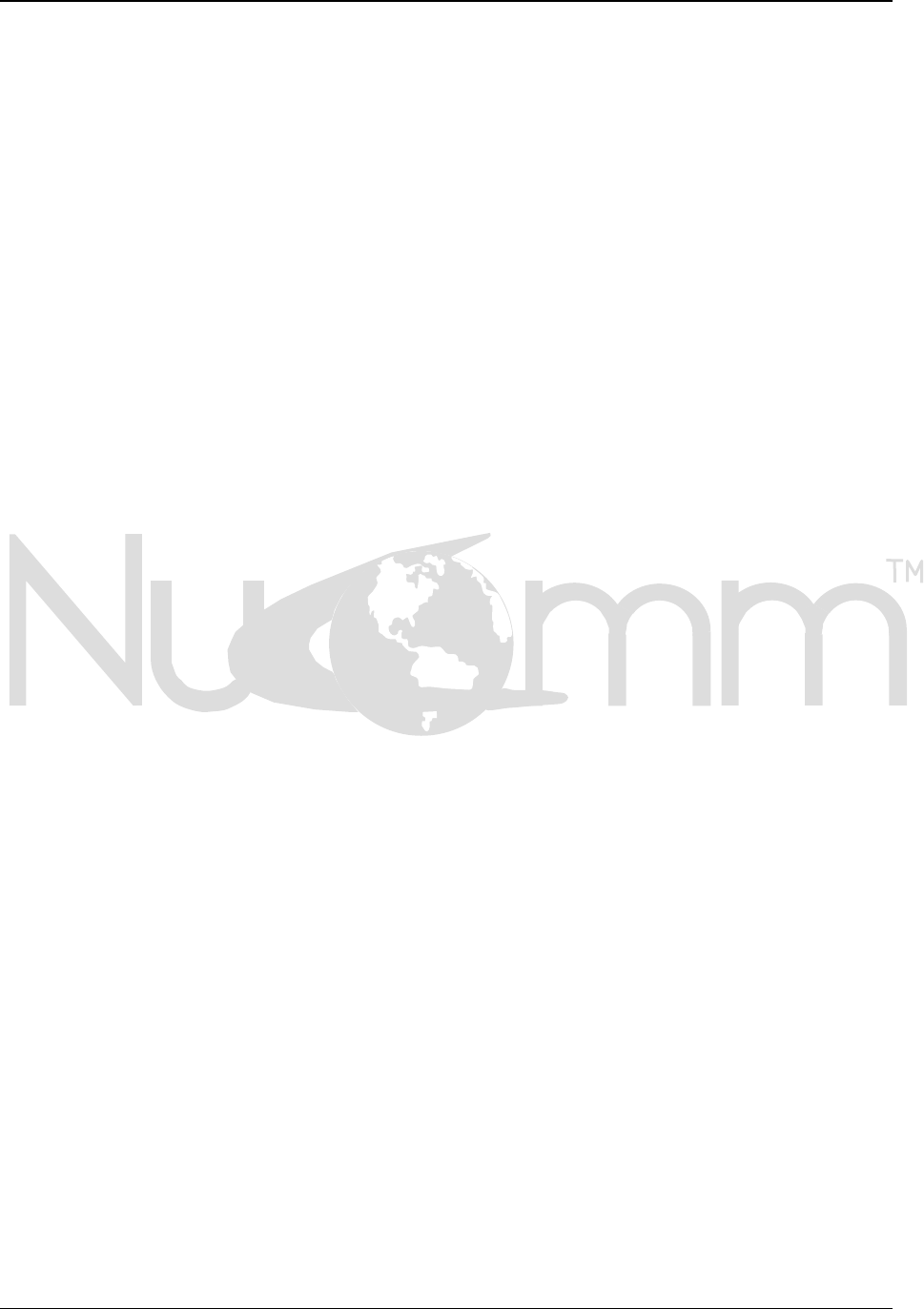
Revision 1.03
viii ChannelMaster TX7 Transmitter

Revision 1.03
Description 1-1
1. PRODUCT
DESCRIPTION
1.1 Introduction
Nucomm’s ChannelMaster TX7 is a
Digital-Analog Portable Microwave
Transmitter. The tripod mounted Micro-
wave Transmitter System is designed to
operate in any specified band in the
1.00 GHz to 15.5 GHz frequency range.
Each unit is field programmable and
configurable to meet a wide range of
customer requirements. The TX7 may
be configured for dual band or tri-band
operation.
The ChannelMaster TX7 is designed to
be an extremely flexible system. It is
fully integrated with an MPEG2 compli-
ant super-low delay Encoder, a Multi-
mode Digital Modulator, and an Analog
FM modulator. Outputs include ASI and
microwave RF in the frequency bands
mentioned above.
The CMTX7 design uses advanced
software defined radio techniques and
supports both COFDM and VSB digital
modulation. As additional digital modula-
tion formats become available, the sys-
tem software can easily be updated to
support them.
The ChannelMaster TX7 includes inputs
for Composite Video, HD-SDI and SD-
SDI, ASI, Firewire, and 70 MHz modu-
lated signals.
The system comes standard with two
analog audio channels or one digital
AES channel. Optionally, the system
can support four analog audio channels
or two digital AES channels.
The system features an LCD display for
control and monitoring, an easy to use
menu driven user interface, fifteen user
defined presets, field programmable RF
and Audio Sub-carrier frequencies, ad-
justable RF power, and integrated dy-
namic color bars. A built-in serial inter-
face can be used for remote control and
monitoring. Special menus have been
included to ease the BAS (US) reloca-
tion process.
Available options include a high power
amplifier, multi-band operation, and
standby power sourcing. Contact Nu-
comm for information about additional
options.
This manual covers all configurations
and options for the series within the 1.00
GHz to 15.5 GHz frequency range.
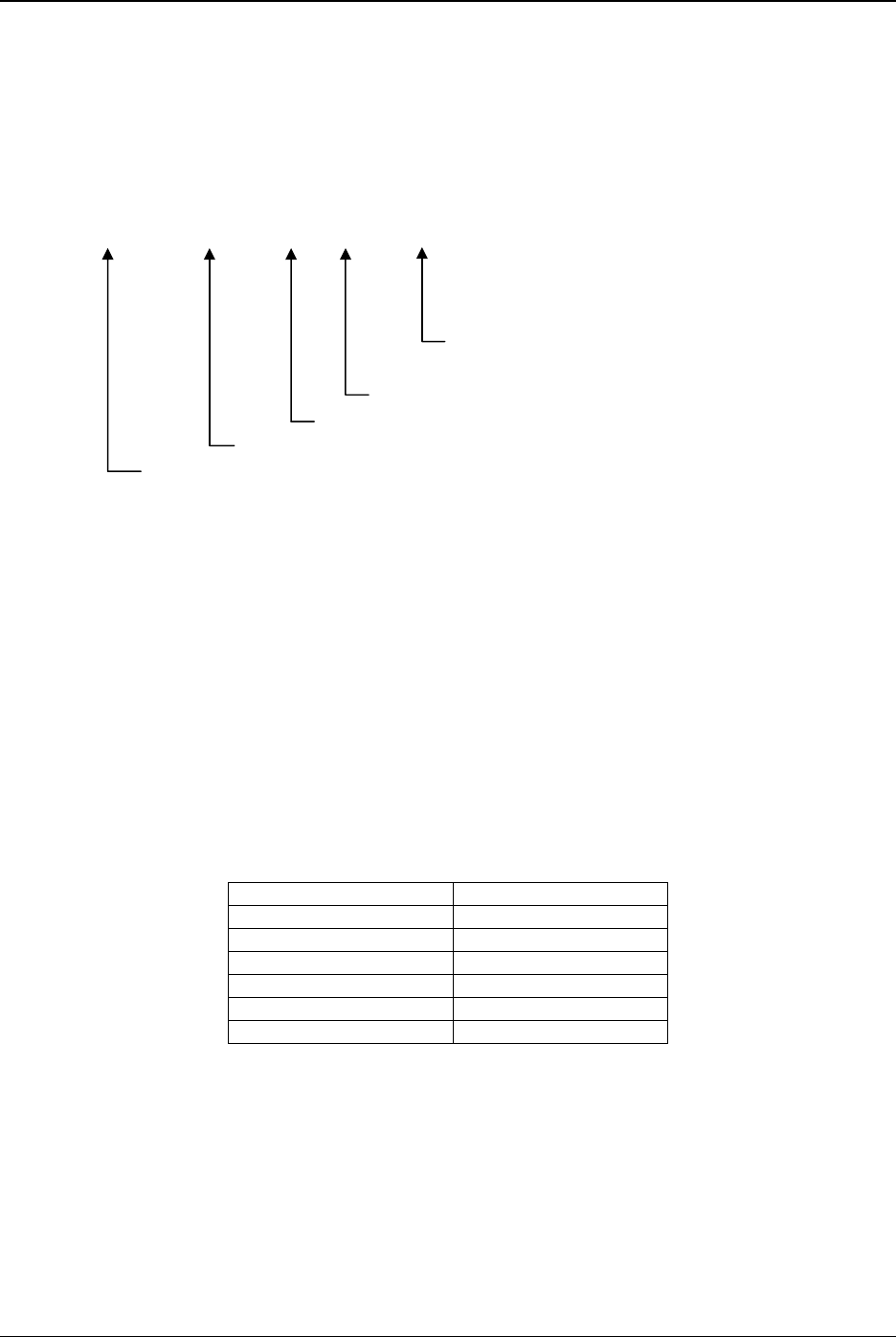
Revision 1.03
1-2 ChannelMaster TX7 Transmitter
1.2 Model Numbering Scheme
Given the model number, a unit's configuration can be determined using the following:
AAAAA – CMTX7 – BB – CCC – YZ
Options
Specified Frequency Plan
Power Output
Model
Generalized Frequency Band Designator
Where:
AAAAA = mean frequency band center in GHz rounded to the closest GHz. This num-
ber is then multiplied by 10. For multiple bands, each center frequency designation is
separated by a backslash "/".
BB = Used to identify the power output, per the following Power Output Designators:
Power Output is represented by Letters for the analog power (as listed in the table be-
low), and Numbers (0-9) for the digital power. For example, a 5W Analog / 2W digital
system would be described with a power indicator of "E2". A Dual-Band system would
have two sets of power indicators, to show the power levels at both bands.
LETTER DESIGNATOR
Analog Power (Watts)
A 1
B 2
C 3
E 5
J 10
L 12
Example: For A Dual Band 2 + 7 GHz radio with these power ratings:
2 GHz: 12 Watt Analog, 5 Watt Digital
7 GHz: 5 Watt Analog, 1.5 Watt Digital
AAAA/AAAA = 20/70, and
BB/BB = L5/E1.5
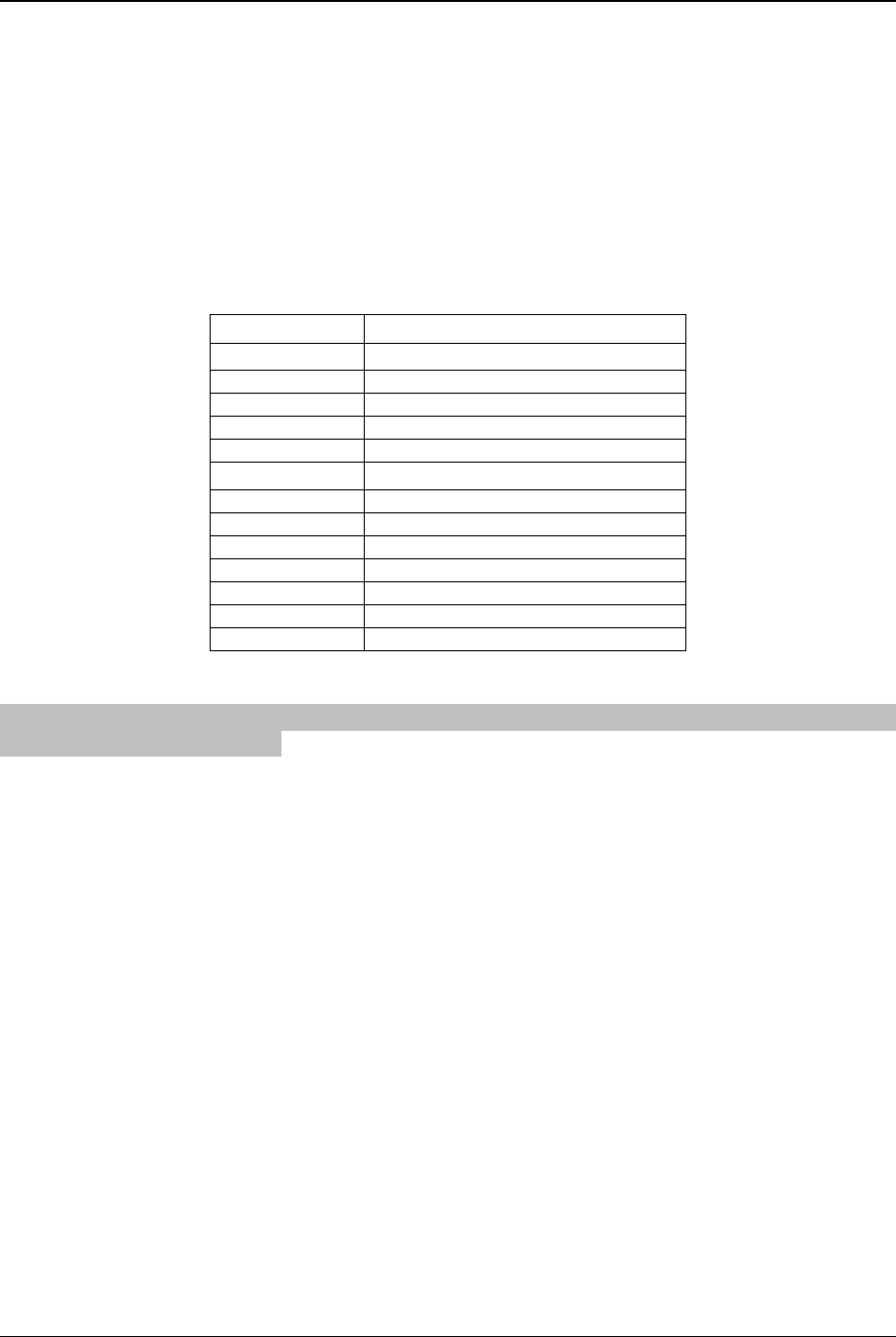
Revision 1.03
Description 1-3
Thus the above model number be similar to:
20/70-CMTX7-L5/E1.5-CCC-YZ
CCC = Nucomm assigns a frequency plan number for each unique frequency channel
combination. Contact your Nucomm representative for further information.
YZ = Miscellaneous options as listed in the table below. The model number is formed by
appending as many letter codes as appropriate.
LETTER CODE
OPTION
AUDIO
A2
2 AUDIO
A4
4 AUDIO
B
AES ENCRYPTION
X
XLR AUDIO
MODULATION + VIDEO
C2
COFDM / FM
C4
COFDM / HD ENABLED
C8
COFDM / FM / HD ENABLED
C10
FM ONLY
C12
COFDM / FM / VSB / HD ENABLED
C15
COFDM / FM / VSB / HD READY
C17
COFDM / FM / HD READY
Options that are not a standard part of the system are indicated in this manual by
shaded text as shown here.
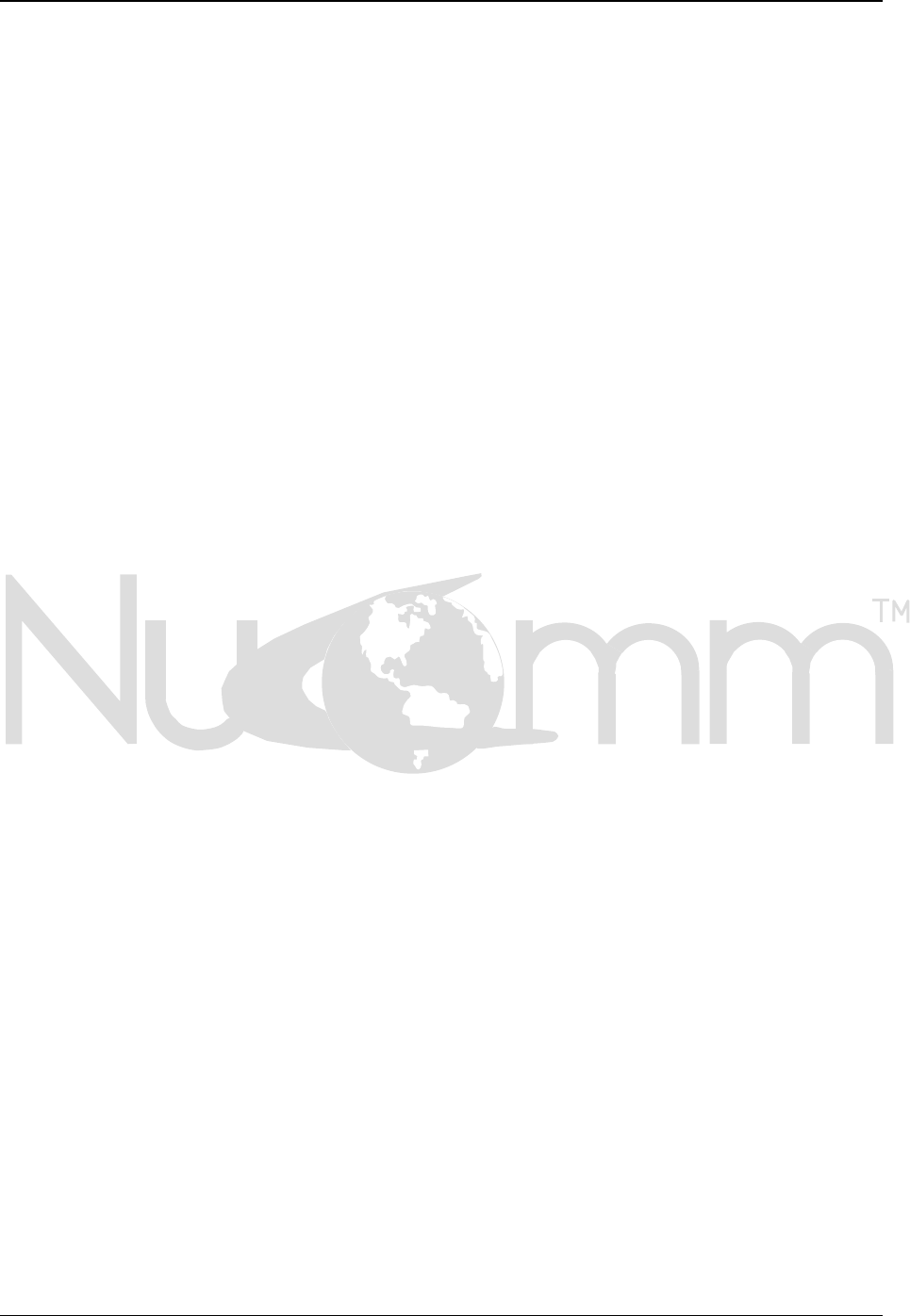
Revision 1.03
1-4 ChannelMaster TX7 Transmitter
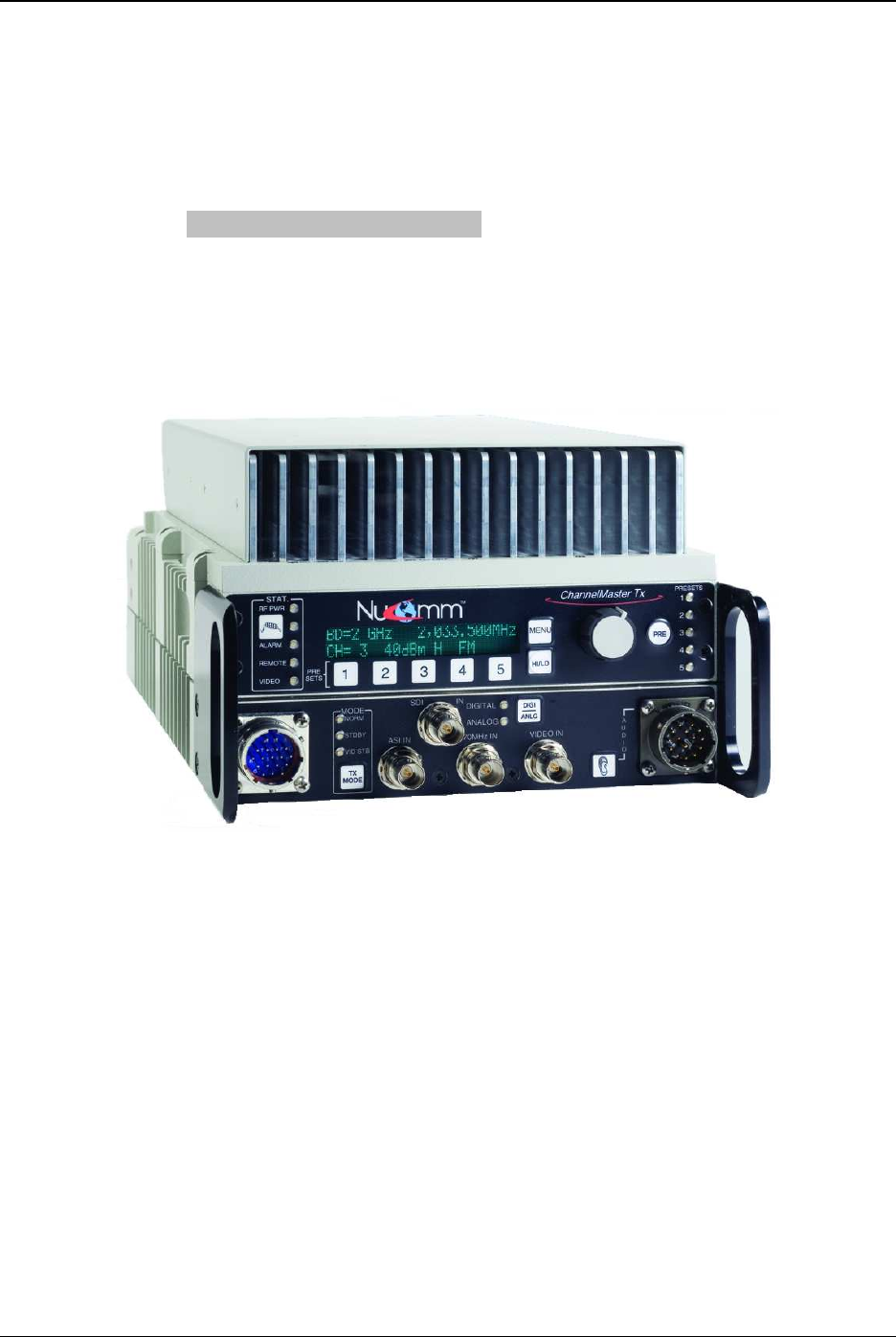
Revision 1.03
Features 2-1
2. FEATURES
This chapter describes the features of the ChannelMaster in detail.
The CMTX7 supports an extensive range of popular digital video input formats, includ-
ing SDI, ASI, and optional Firewire (IEEE1394). The CMTX7 can also be used to trans-
mit 70MHz IF input signals containing audio and video that have been modulated by
other equipment.
Nucomm ChannelMaster TX7
2.1 Feature Overview
Nucomm’s ChannelMaster TX7 Series Digital-Analog Portable Microwave Transmitters
contain among the most comprehensive set of portable radio features available. The
ChannelMaster TX7 features are designed for both Digital transmission (either HD or
SD video) and Analog (standard definition only) in such applications as ENG/OB trucks,
portable links, helicopters, etc.
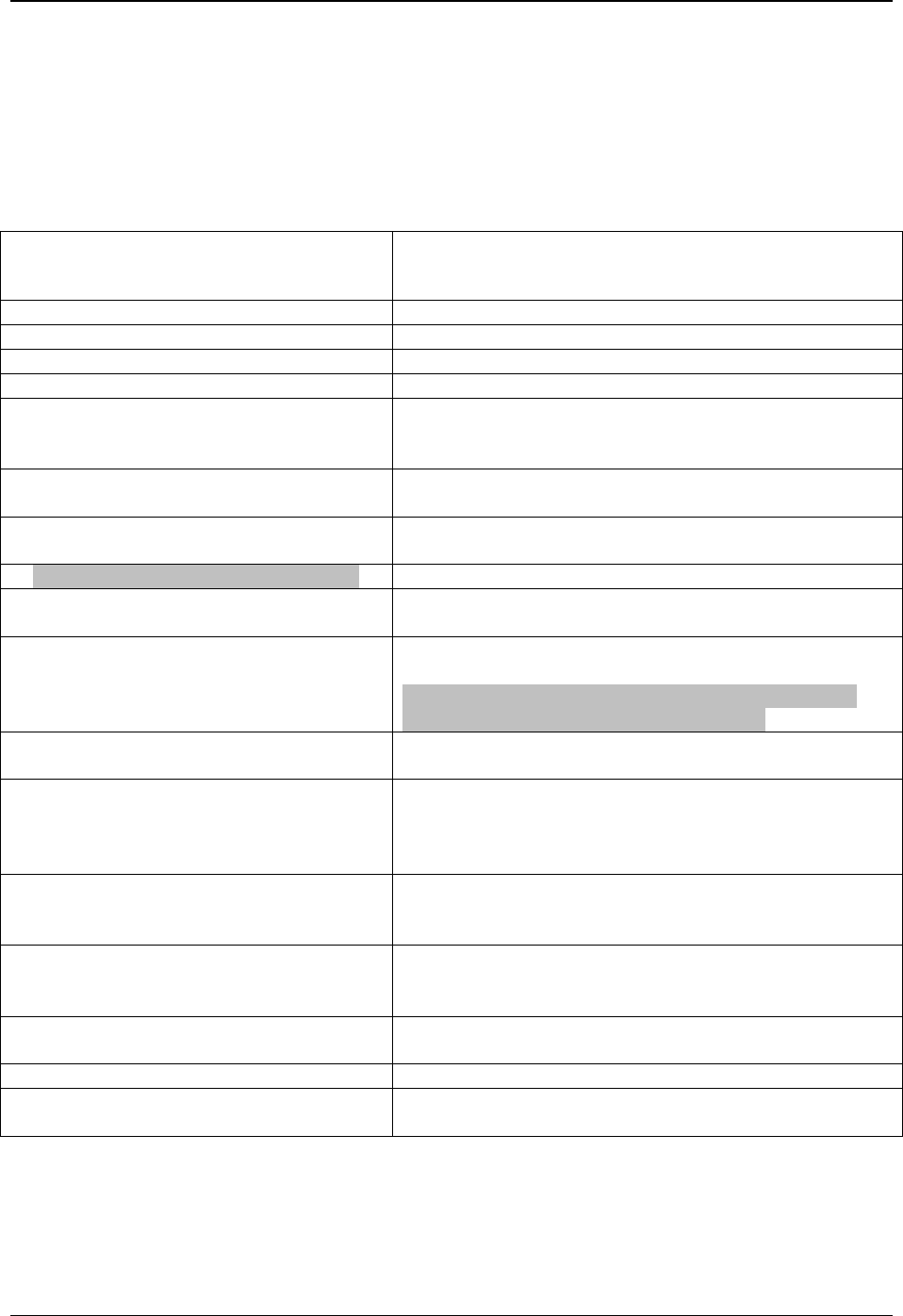
Revision 1.03
2-2 ChannelMaster TX7 Transmitter
Table 2-1: ChannelMaster TX7 Technical Features and Benefits
Technical Feature Benefit
HD and SD video microwave link Supports HD cameras and older NTSC and PAL cameras.
User friendly menu driven interface Ease of Use.
Pushbutton controls Main controls conveniently available.
Preset settings buttons Simple re-use of system setup.
Advanced digital transmission options
(COFDM or VSB digital modulation) using
any system video input type.
High integrity digitally modulated signals and microwave
transmission.
ASI input – HD and SD MPEG2 video
transport stream. Common on professional video equipment.
SDI input - HD and SD video transport
stream. Common on pro video cameras.
IEEE 1394 Firewire Digital Video Input Common on pro video cameras.
Composite Video Input – SD (NTSC and
PAL) support for composite video. NTSC and PAL support.
Up to Four Analog Audio Inputs
Balanced audio signals.
High noise immunity over long distances.
CMTX7 with two XLR input option provides phantom
microphone power on right XLR connector.
Up to Two Digital Audio (AES) Inputs Supports Audio Engineers Society digital audio interface
specifications. High SNR using digital interface.
MPEG2 Video Encoder
Composite and SDI inputs can be digitally encoded before
modulation and transmission. Also, the MPEG2 encoder
can be used to produce an ASI output signal from Com-
ponent or SDI video input.
Three Modulation Modes: COFDM, VSB,
and Analog FM
Flexible options.
Digital Modulation methods offer quality and reliability.
Analog FM modulation is useful for legacy support.
COFDM Modulation
Digital modulation provides high signal path integrity
characteristics and resistance to transient issues such as RF
noise sources.
VSB Modulation VSB offers greater robustness than COFDM for larger
throughput applications in clear line of sight conditions.
Analog FM Modulation For use with Analog FM video receiving equipment.
SDI input to Composite Video and De-
embedded Audio For analog FM transmission of digital video.
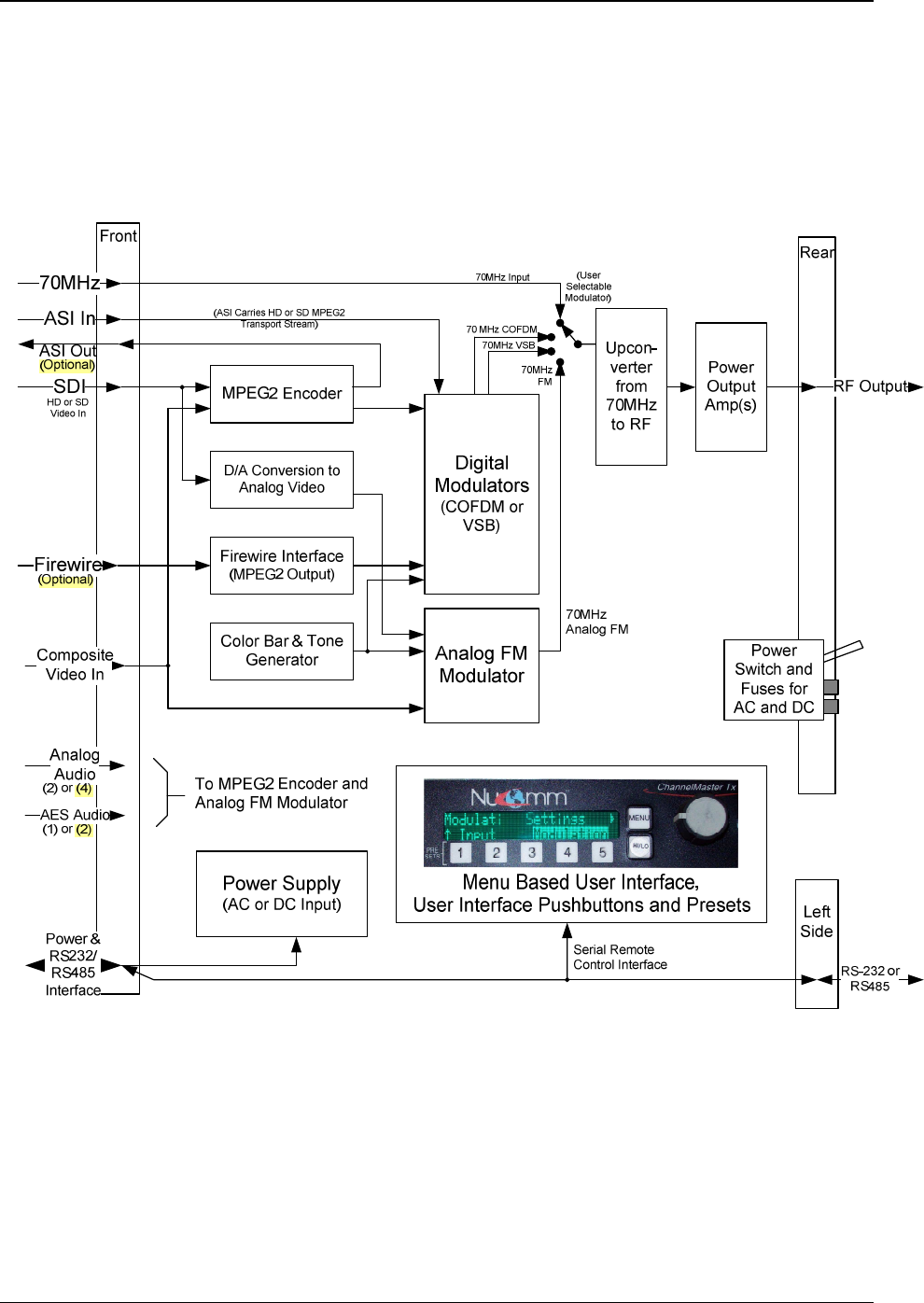
Revision 1.03
Features 2-3
2.2 System Functional Block Diagram
The figure below shows a functional block diagram of the ChannelMaster CMTX7.
Figure 2-1: ChannelMaster TX7 Functional Block Diagram

Revision 1.03
2-4 ChannelMaster TX7 Transmitter
2.3 System Chassis Features
The ChannelMaster TX7 features a ro-
bust, weather-resistant housing design
to withstand rough handling in the field.
The ChannelMaster TX7 includes video
and audio processing boards, power
supply, 70 MHz modulator, power ampli-
fier, up-converter, and low noise fre-
quency synthesizer enclosed in a rug-
ged enclosure, with all input jacks and
user interface controls on the front
panel. The system chassis is typically
tripod mounted during use.
2.4 User Interface Overview
The user interface is conveniently lo-
cated on the front panel, and has three
elements:
1. A menu list for changing system
setup configuration options.
2. Preset buttons which can be
used to quickly change between
setup configurations.
3. Pushbuttons for operating com-
monly used controls (e.g. Digi-
tal/Analog and Transmit Mode).
2.5 Standby Mode
In the Standby mode, the ChannelMas-
ter TX7 is powered on, but the RF out-
put is muted, enabling the transmitter to
be tuned safely without radiating off-
frequency emissions. The ChannelMas-
ter TX7 will remain in Standby until on-
frequency lock has been obtained.
Switching from Standby to Normal mode
results in instantaneous on-frequency
transmission.
2.6 Video Signal Encoding
The CMTX7 features a built-in MPEG2
compliant digital encoder which trans-
forms Composite Video and SDI inputs
into the MPEG2 format. The ASI input
and optional Firewire are already in
MPEG2 format.
Optionally, the MPEG2 encoded signals
can be routed to an ASI output jack.
Signals from the MPEG2 encoder, the
ASI input, or the optional Firewire digital
video input can be digitally modulated
for transmission using the system’s
available digital modulation modes.
2.7 Audio Sub Carriers
Two (four optional) field programmable
synthesized audio sub-carriers feature
individual LINE, MIC, AES,
EMBEDDED, and TONE source selec-
tion (plus an OFF setting), and auto-
matic gain control (AGC). The sub-
carrier frequencies, Mode, and addi-
tional gain are front panel adjustable us-
ing the LCD interface. In the model with
optional XLR connectors, the right XLR
jack can be used as a microphone input
with or without 10 Volt phantom power.
2.8 Multi-Mode Modulator
The table below summarizes the modu-
lation types available.
Modulation
Mode Name Modulation
Technique
1 COFDM Digital
2 Analog
FM Analog
3 VSB Digital
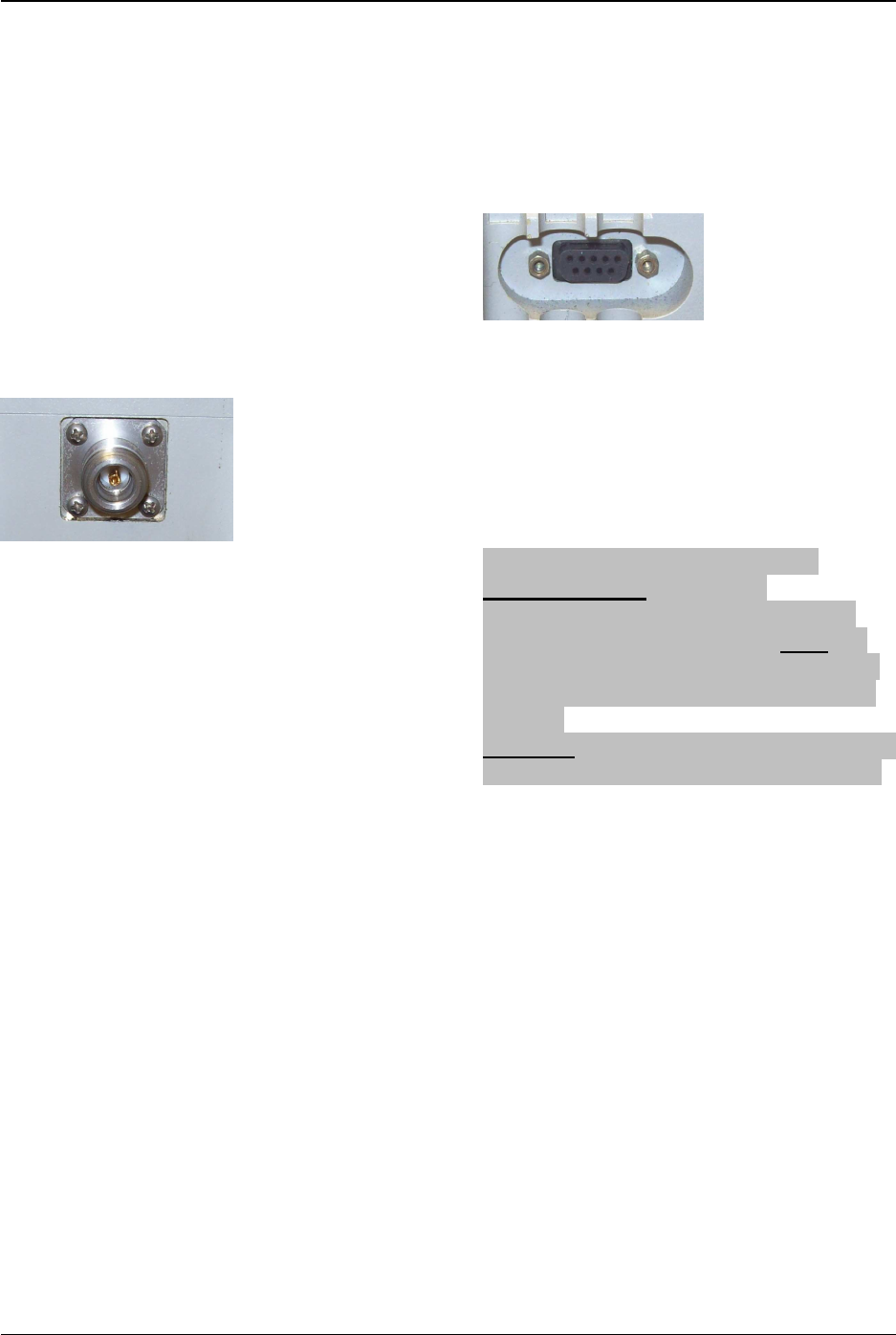
Revision 1.03
Features 2-5
2.9 Multi-band Microwave
Output
Nucomm’s ChannelMaster transmitters
are available in single, dual, and multi-
band models.
An antenna (supplied separately) can be
either mounted directly to the transmitter
using available mounting adapters or it
can be remotely mounted and con-
nected to the transmitter via standard
RF cables with N-Type connectors.
The Channel-
Master radios
provide full
coverage of the
2, 7, & 13 GHz
US frequency
bands and/or other bands as required
internationally, from 1 GHz to 15.5 GHz.
The US frequency bands are given in
Table 3-2 through Table 3-5. Band and
channel selections are made and clearly
displayed via the Front Panel LCD Inter-
face.
2.10 Signal Strength Indicators
Transmitted signal strength is indicated
on the LCD display by a digital readout
that indicates the transmitted signal
level directly in dBm. (The signal
strength display is intended as an ap-
proximate reading of power only.)
2.11 Video Presence Detector
The Video Presence Remote Standby
mode enables the camera to remotely
turn on the color bars or put the Chan-
nelMaster in standby based upon the
detection of video presence at the input
port.
2.12 Remote Control Feature
Two RS232/RS485 ports are available
to control the system remotely. One is
located on the left side of the unit’s
housing, and the other is located within
the front panel power supply connector.
2.13 Power Supply
All standard ChannelMaster's feature a
built-in power supply, which automatically
covers all the input voltage ranges listed
in Table 3-1, without requiring any user
intervention.
Optional Power configurations:
Standby Power: For power
redundancy, ChannelMaster's can be
configured to accept both AC AND DC
simultateneously. The unit will continue
to operate if at least one of the inputs is
present.
DC Only: The ChannelMaster may be
configured for "DC only" source voltage.
2.14 Internal Self-Test
Built-in diagnostic features include a 1
kHz audio test tone and a 761.5 kHz
(1.512 MHz for PAL) video deviation test
signal.
2.15 Other Standard Features
• Digitally synthesized microwave os-
cillator tuning
• Independent Gain Control for audio
inputs (Two audio sub-carriers stan-
dard, four optional)
• Selectable power levels
• Test Pattern/ID Test Generator with:
o SMPTE RS-170A Color Bars
(EBU Pattern)

Revision 1.03
2-6 ChannelMaster TX7 Transmitter
o A 16-character programmable ID
(can be placed in the Vertical In-
terval and Gen-locked to the in-
coming Video signal)
2.16 Options
• Dual front panel XLR connectors
with phantom power for mic inputs.
• Front panel Firewire connector for
SD or HD MPEG2 digital input
stream.
• High Power Amplifier enabling en-
hanced MER.
2.17 Accessories
ChannelMaster TX7 transmitters ship
with AC & DC power cords and manual.
2.18 Flexibility
With the addition of a modem, the
ChannelMaster can pass DS3/E3 or a
variety of other digital signals. The
ChannelMaster can accept PSK, QPSK,
8PSK, DVB-S, Multi-Level FSK,
16QAM, and COFDM signals directly
through the 70 MHz input connector with
no internal modifications.
Nucomm also offers a full line of remote
control systems, antennas, and antenna
mounting equipment that seamlessly
integrate with the ChannelMaster series.
See the Nucomm catalog for additional
information on the Nucomm website at:
www.nucomm.com.
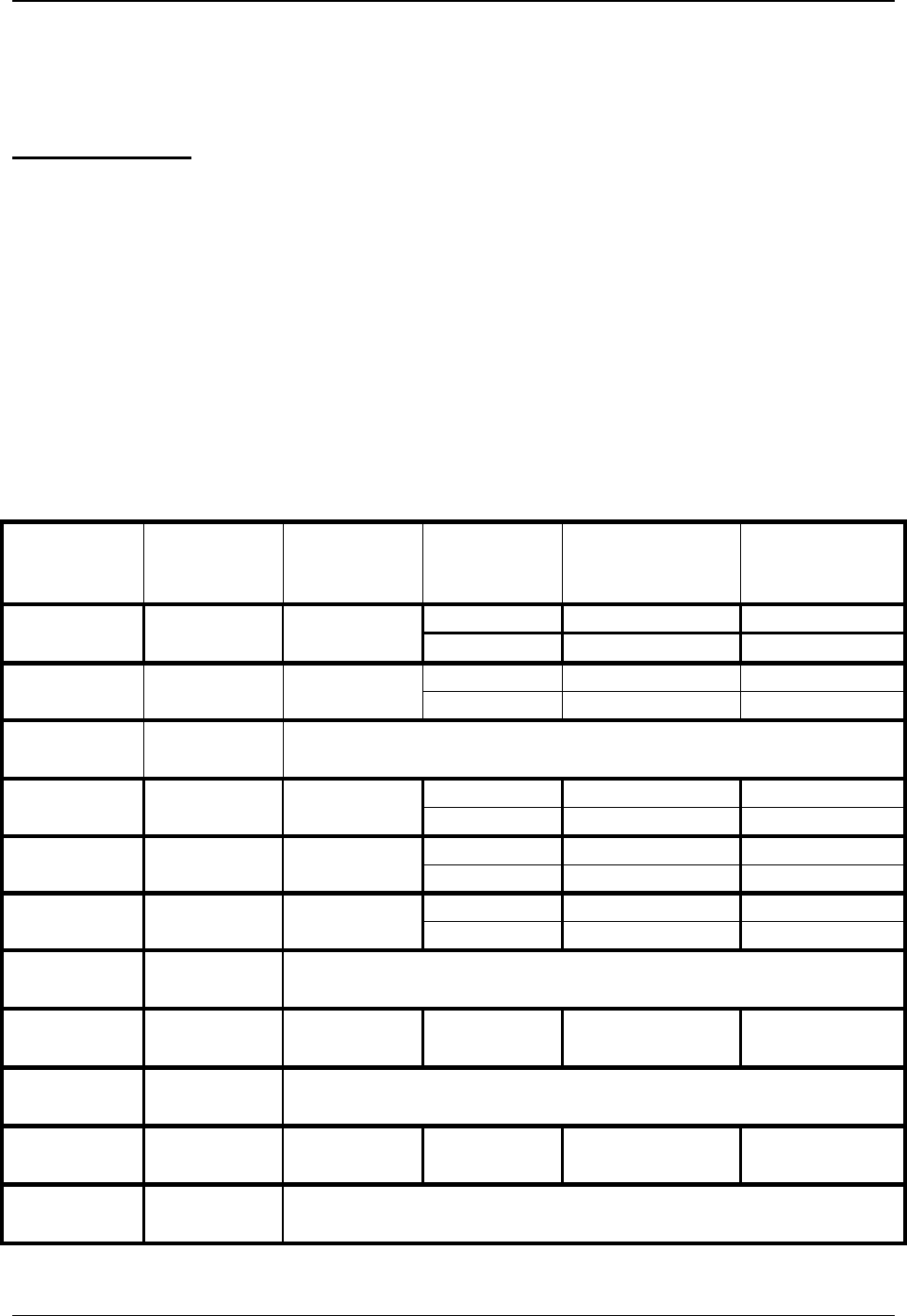
Revision 1.03
Specifications and Frequency Plans 3-1
3. SPECIFICATIONS AND FREQUENCY PLANS
RF Performance:
Tuning step size: ..................................... 250 kHz (US), 100 kHz (International)
70 MHz input:........................................... –10 dBm to 0 dBm (75 Ω)
Frequency stability: ................................. ± 5 ppm (.0005%)
Power Output
Standby mode: ................................... No RF output
Normal mode: .................................... Instant on frequency transmission
HI power = Full power (see Table 3-1)
LOW power = 6 dB drop (typical)
Table 3-1 lists band coverage, and maximum power levels for single band configurations.
NOTE: Dual and Tri-band configurations may not support the maximum power level.
Table 3-1: ChannelMaster TX7 Specifications
Base
Model Frequency
(GHz)
Band
Designator
(AA*)
Power
Designator
(BB*)
Analog Power
(dBm) Digital Power
(dBm)
L5 41 37
23CMTX7 1.9 - 2.5 23 L8 41 39
L5 41 37
25CMTX7 2.3 - 2.7 25 L8 41 39
nnCMTX7 2.7 - 6.4 Contact Nucomm for specific bands and power levels.
B1 33 30
70CMTX7 6.4 - 7.1 70 E1.5 37 32
B.5 33 27
75CMTX7 7.1 - 7.75 75 E1.5 37 32
B.5 33 27
82CMTX7 7.7 - 8.5 82 E1.5 37 32
nnCMTX7 8.5 -10.0 Contact Nucomm for specific bands and power levels.
110CMTX7 10.0 - 10.6 110 C.5 35 27
nnCMTX7 10.6 - 12.7 Contact Nucomm for specific bands and power levels.
130CMTX7 12.7 - 13.2 130 C.5 35 27
nnCMTX7 13.2 – 15.0 Contact Nucomm for specific bands and power levels.
* Refer to Section 1.2

Revision 1.03
3-2 ChannelMaster TX7 Transmitter
Modulation Modes
Modulation 1: .......................................... COFDM (DVB-T)
Carriers: ............................................... 2K
Constellation:....................................... QPSK, 16QAM, 64QAM
Code Rate:........................................... 1/2, 2/3, 3/4, 5/6, 7/8
Guard Interval: ..................................... 1/32, 1/16, 1/8, 1/4
Bandwidth:........................................... 6 MHz, 7 MHz, and 8 MHz
Modulation 2: ........................................... Analog FM
2 field tunable sub-carriers (optional 4)
Modulation Deviation (field selectable): 3 MHz/volt or 4 MHz/volt
Modulation 3 (Optional):........................... VSB
Constellation:....................................... 2VSB, 8VSB, 8TVSB (ATSC)
Bandwidth:........................................... 6 MHz
MPEG Encoder:
Video
SD Profile:............................................ MP@ML(4:2:0) 1-15MBPS
............................................................. 422@ML(4:2:2) 3-50MBPS
HD Profile:............................................ MP@HL
MP@H14L
GOP:.................................................... Front panel selectable, (I, IP, IBP, IBBP)
Latency: ............................................... Standard (GOP:1-5) ~250mS
Low Delay(GOP:0) ~90mS
Frame Size: ......................................... NTSC:720x480(4:2:0)/720x525(4:2:2)
PAL:720x576(4:2:0)/720x625(4:2:2)
720p(1280x720) 59.94,50,29.97,25,23.97Hz)
1080i(1920x1080) 29.97,25Hz
1080i(1440x1080) 29.97,25Hz
SDI input:............................................. ANSI/SMPTE 259M(SD), 292M(HD)
Audio
Audio Coding: ...................................... ISO/IEC 11172-3(Layer II)
Audio Bit Rate:..................................... 128, 256kbps, 384kbps
Audio Sample Rate:............................. 48Khz
Audio Channels: .................................. 2 Standard (4 Optional)
Audio Input:.......................................... Line; Gain selectable (10dB), 600Ω Balanced
(18dBm = 0dBFS)
AES/EBU; 150Ω Balanced
DeEmbedded from SDI; (4 channels)
Tone; (-10dBfs/8dBm) Level Adjustable (-10 to
26dBfs)
Line/Mic; Input range: -4dB and 41dB
with selectable 10V Phantom Power
Frequency Response: ......................... 40Hz – 20KHz: ± 0.5dB
Audio THD: .......................................... 0.25% @ 1KHz, +8dBm
Signal-Noise: ....................................... >70dB

Revision 1.03
Specifications and Frequency Plans 3-3
FM Modulator:
Video
Video:................................................... 525/625 lines NTSC/PAL field selectable
Composite input:.................................. 75Ω, 1Vp-p, NTSC/PAL
SDI input:............................................. ANSI/SMPTE 259M Level C
270Mb/s, 525/626 Component
Video Deviation:................................... 1V p-p for ± 4 MHz deviation
0.75 V p-p for ± 3 MHz deviation (Selectable)
Video Emphasis:.................................. NTSC/PAL/Bypass (CCIR 405)
Video Low Pass Filter:......................... 3.9, 4.5, 4.75 and 5.6MHz (Selectable)
Frequency Response: ......................... ±0.25 dB (10 Hz to video filter selected)
Base-Band Response:......................... ±0.5 dB (10 Hz to 8 MHz)
Signal-to-noise:.................................... 68 dB (weighted per RS-250C)
Signal-to-Hum:..................................... 63 dB (weighted per RS-250C)
Differential Phase: ............................... ± 1.0 degrees
Differential Gain:.................................. ± 1.0 %
Audio
Audio Channels: .................................. 2 tunable subcarriers (4.83 – 9MHz 10KHz
steps) 4 optional
Audio Input:.......................................... Line, Gain selectable (10dB), 600Ω
AES/EBU;, 150Ω Balanced
(0dBFS = +18dBm)
DeEmbedded from SDI; (4 Channels)
(0dBFS = +18dBm)
Tone; 1KHz @ +8dBm adjustable
Line/Mic; Input range: -4dB and 41dB
with selectable 10V Phantom Power
Audio Deviation:................................... NTSC: 1KHz, +8dBm will deviate ±75KHz
PAL: 1KHz, +12dBm will deviate ±100KHz
Frequency Response: ......................... 40Hz – 10KHz: ± 0.5dB
40Hz – 15KHz: ± 1.0dB
Audio THD: .......................................... 0. 5% @ 1KHz, +8dBm
Signal-Noise: ....................................... 65dB
Emphasis: ............................................ 50µs/75 µs (Follows Video)
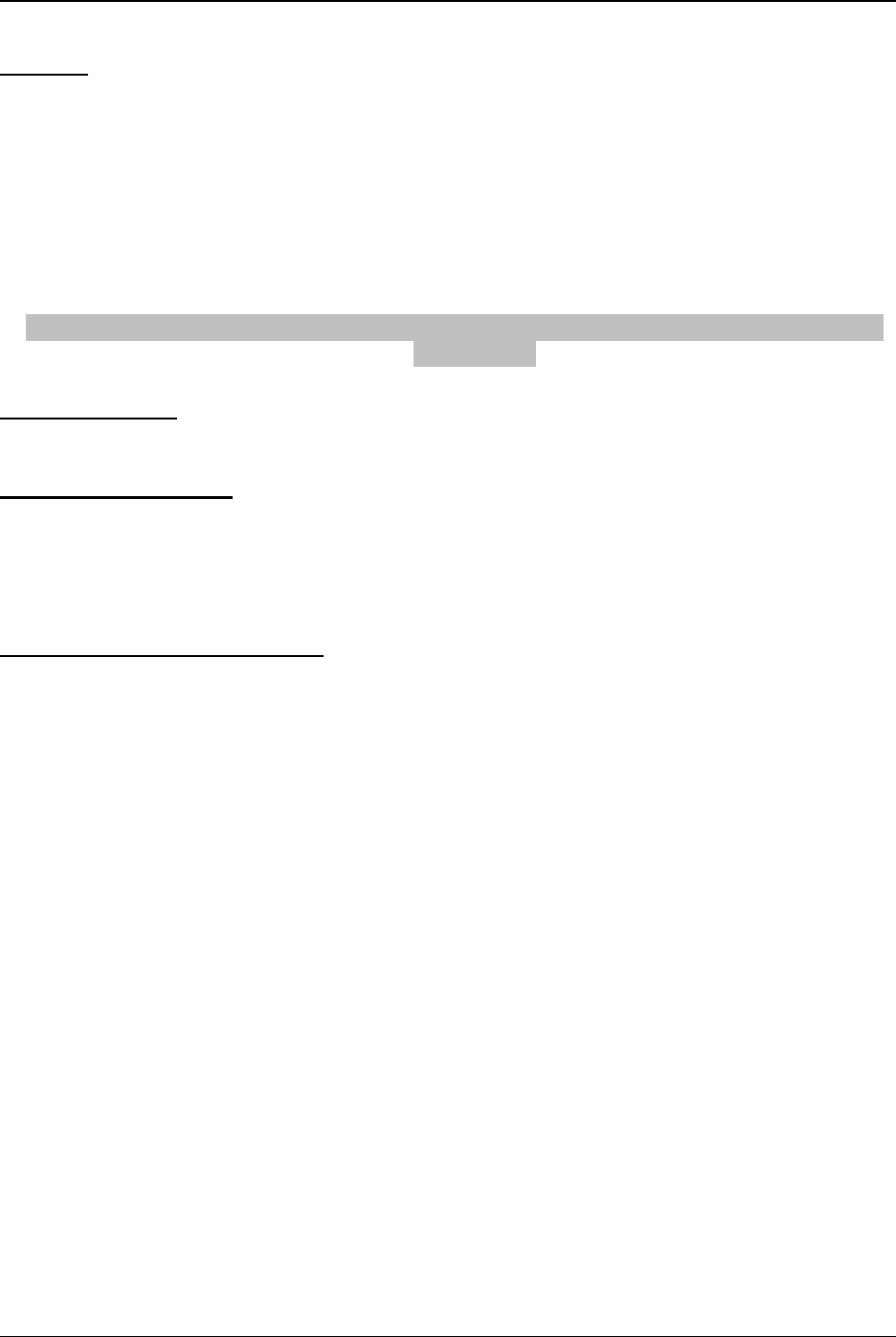
Revision 1.03
3-4 ChannelMaster TX7 Transmitter
System:
Video Presence: .................................. Remote Standby/Test Generator Selectable
Test Generator(Dynamic):................... SMPTE CB(NTSC)/100% CB(PAL)
16 Character ID(Match SDT Service name
1KHz Tone/Pulse
ASI: ...................................................... Rate converted from 0mpbs-Max modulation
Rate
PCR Retime stamp
Encryption:........................................... Optional AES Block Cypher, supporting key
size of 128 and 256bits (FIPS PUB 197)
Mic Phantom Power: ........................... 10V Phantom Power output on right XLR conn.
pins 2, 3.
Remote Control:
Electrical Interface: .............................. RS232/RS485(2 wire)
Power Requirements:
Input range: ........................................ AC: 90 to 132VAC, 60 Hz
AC: 180 to 264VAC, 50 Hz
DC: +11 to +32V
Power consumption:........................... 80 W typical (12 watt version)
Environmental Specifications:
Temperature range:
Operating:........................................... –30° to +60°C
Storage: ............................................. –40° to +80°C
Humidity: ................................................. 0 to 95% non-condensing
Altitude:
Operating:........................................... 20,000ft (6,000 m)
Storage:.............................................. 50,000ft (15,000 m)

Revision 1.03
Specifications and Frequency Plans 3-5
Physical Characteristics:
Size (Low Pwr Unit): ............................... 4.89" (12.42 cm) x 7.5" (19.05 cm) x
12.0"(30.48 cm)
Size (Hi Pwr Unit): ................................... 5.2" (13.21 cm) x 7.5" (19.05 cm) x
12.0"(30.48 cm)
Weight:
Single-Band, No Shroud (typ.): .......... 15.00 lbs (6.80 kg)
Dual-Band, No Shroud (typ.):............. 16.00 lbs (7.26 kg)
Single-Band, Shrouded (typ.):............ 15.50 lbs (7.03 kg)
Dual-Band, Shrouded (typ.): .............. 16.50 lbs (7.48 kg)
Tri-Band, Shrouded (typ.):.................. 18.50 lbs (8.39 kg)
Control:
Menu Selection and Entry:....................... Combination Rotary knob/push button
Operating Mode Buttons:......................... Membrane Switches
Connectors:
Video/SDI / DVB-ASI/70MHz:.................. Type BNC-F
Firewire Serial Digital Video Input:........... IEEE1394 Connector (Optional)
Audio:....................................................... Multi Pin “MS” Style (XLR break out provided)
XLR Jacks (Optional)
RF Output: ............................................... Type “N” female
Remote Control:....................................... 9 Pin D, Female
Power:...................................................... Multi Pin “MS” Style
Case:
Ruggedized to withstand rough handling in the field with handles that protect controls
from damage. Case is weather-resistant and all connectors are weatherproofed.
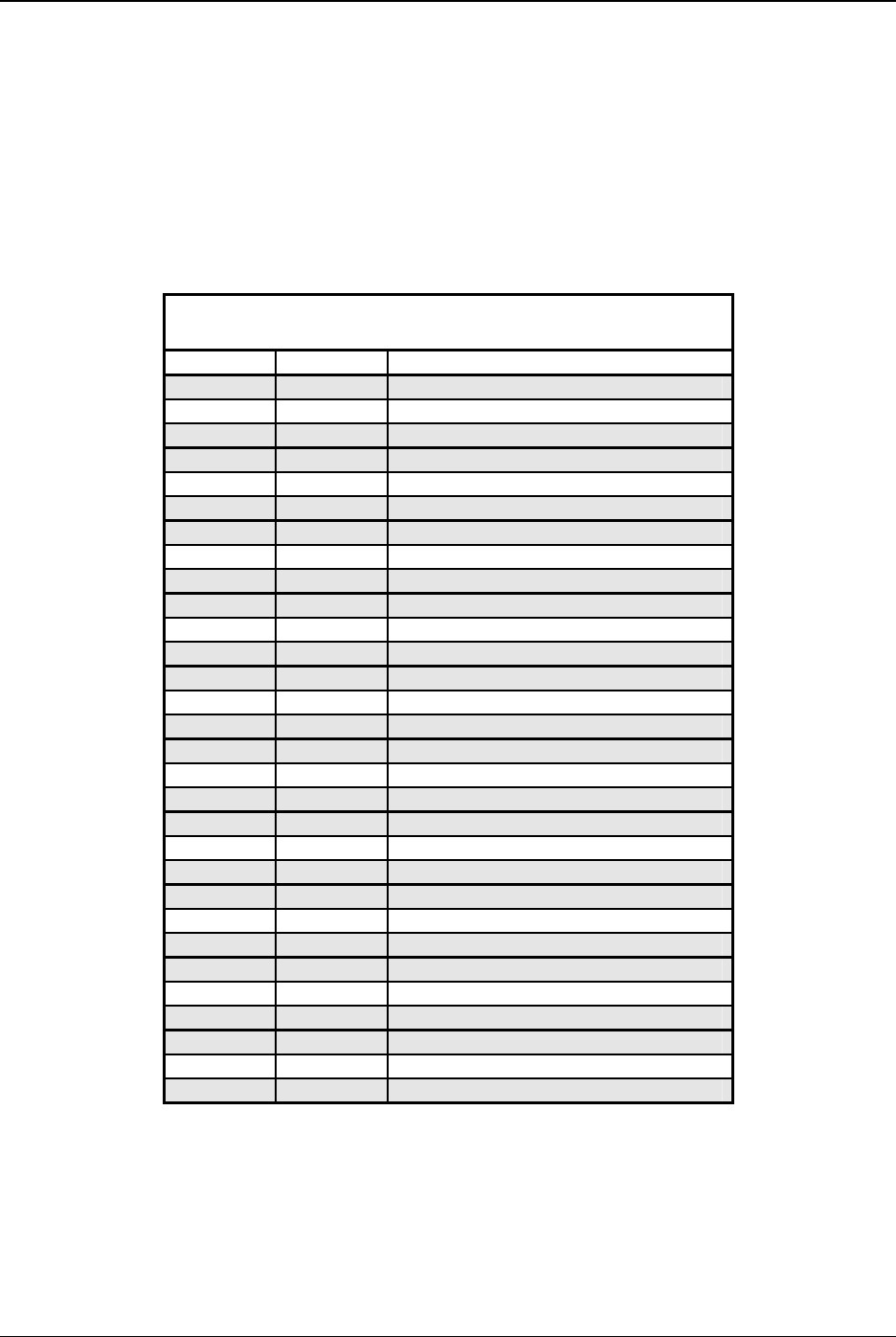
Revision 1.03
3-6 ChannelMaster TX7 Transmitter
3.1 Frequency Plans (USA)
The standard US frequency plans apply to all units sold into markets covered by the FCC.
Frequency plans for all systems sold into non-US markets are individualized to meet
specific customer requirements and licensing restrictions, as specified at the time of
purchase.
2 GHz (17 MHz)
(Frequency Range 1,990 MHz – 2,500 MHz)
Channel Offset Receive Frequency MHz
1 – 1,994.75
1 0 1,999.00
1 + 2,003.25
2 – 2,012.25
2 0 2,016.50
2 + 2,020.75
3 – 2,029.25
3 0 2,033.50
3 + 2,037.75
4 – 2,046. 25
4 0 2,050.50
4 + 2,054.75
5 – 2,063.25
5 0 2,067.50
5 + 2,071.75
6 – 2,080.25
6 0 2,084.50
6 + 2,088.75
7 – 2,097.25
7 0 2,101.50
7 + 2,105.75
8 – 2,454.25
8 0 2,458.50
8 + 2,462.75
9 – 2,471.00
9 0 2,475.25
9 + 2,479.50
10 – 2,487.50
10 0 2,491.75
10 + 2,496.00
Table 3-2: Frequency Plan (US), 2GHz 17MHz
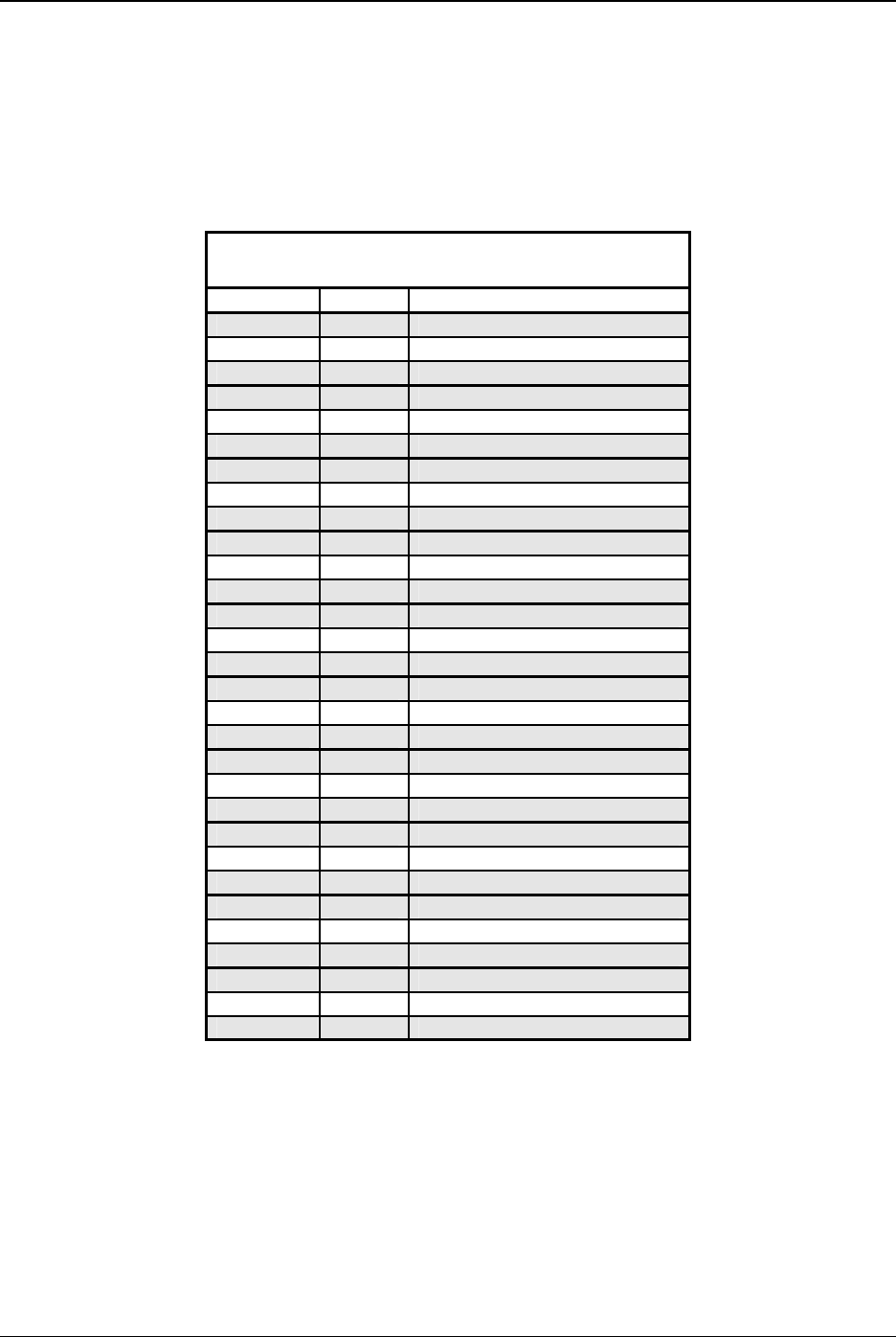
Revision 1.03
Specifications and Frequency Plans 3-7
2 GHz (12 MHz)
(Frequency Range 2,025 MHz – 2,500 MHz)
Channel Offset Receive Frequency MHz
1 – 2,028.50
1 0 2,031.50
1 + 2,034.50
2 – 2,040.50
2 0 2,043.50
2 + 2,046.50
3 – 2,052.50
3 0 2,055.50
3 + 2,058.50
4 – 2,064.50
4 0 2,067.50
4 + 2,070.50
5 – 2,076.50
5 0 2,079.50
5 + 2,082.50
6 – 2,088.50
6 0 2,091.50
6 + 2,094.50
7 – 2,100.50
7 0 2,103.50
7 + 2,106.50
8 – 2,454.25
8 0 2,458.50
8 + 2,462.75
9 – 2,471.00
9 0 2,475.25
9 + 2,479.50
10 – 2,487.50
10 0 2,491.75
10 + 2,496.00
Table 3-3: Frequency Plan (US), 2GHz 12MHz
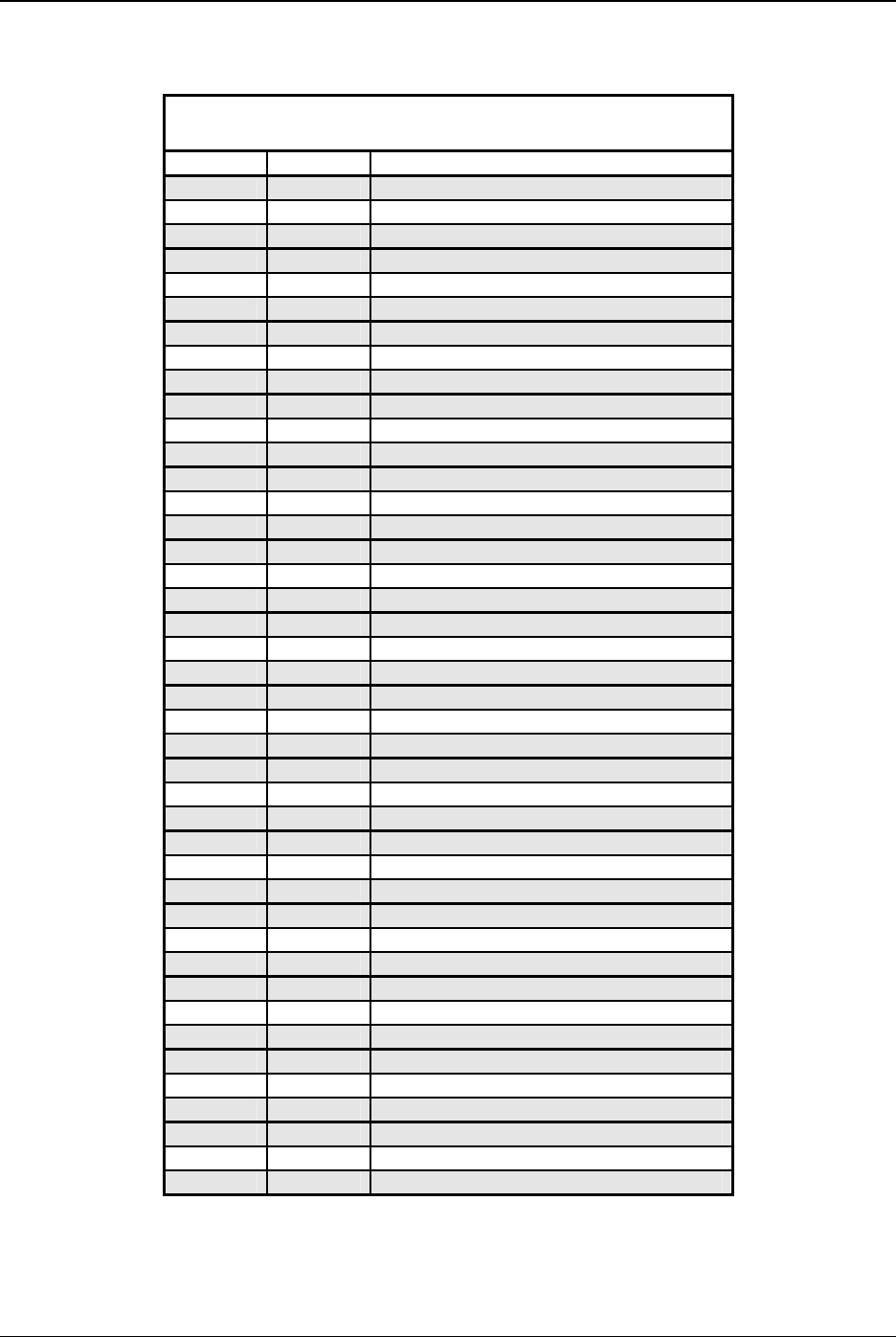
Revision 1.03
3-8 ChannelMaster TX7 Transmitter
6/7 GHz (25 MHz)
(Frequency Range 6,425 MHz – 7125 MHz)
Channel Offset Receive Frequency MHz
1 – 6,881.25
1 0 6,887.50
1 + 6,893.75
2 – 6,906.25
2 0 6,912.50
2 + 6,918.75
3 – 6,931.25
3 0 6,937.50
3 + 6,943.75
4 – 6,956.25
4 0 6,962.50
4 + 6.993.75
5 – 6,981.25
5 0 6,987.50
5 + 6,993.75
6 – 7,006.25
6 0 7,012.50
6 + 7,018.75
7 – 7,031.25
7 0 7,037.50
7 + 7,043.75
8 – 7,056.25
8 0 7,062.50
8 + 7,068.75
9 – 7,081.25
9 0 7,087.50
9 + 7,093.75
10 – 7,106.25
10 0 7,112.50
10 + 7,118.75
11 – 6,431.25
11 0 6,437.50
11 + 6,443.75
12 – 6,456.25
12 0 6,462.50
12 + 6,468.75
13 – 6,481.25
13 0 6,487.50
13 + 6,493.75
14 – 6,506.25
14 0 6,512.50
14 + 6,518.75
Table 3-4: Frequency Plan (US), 6/7GHz
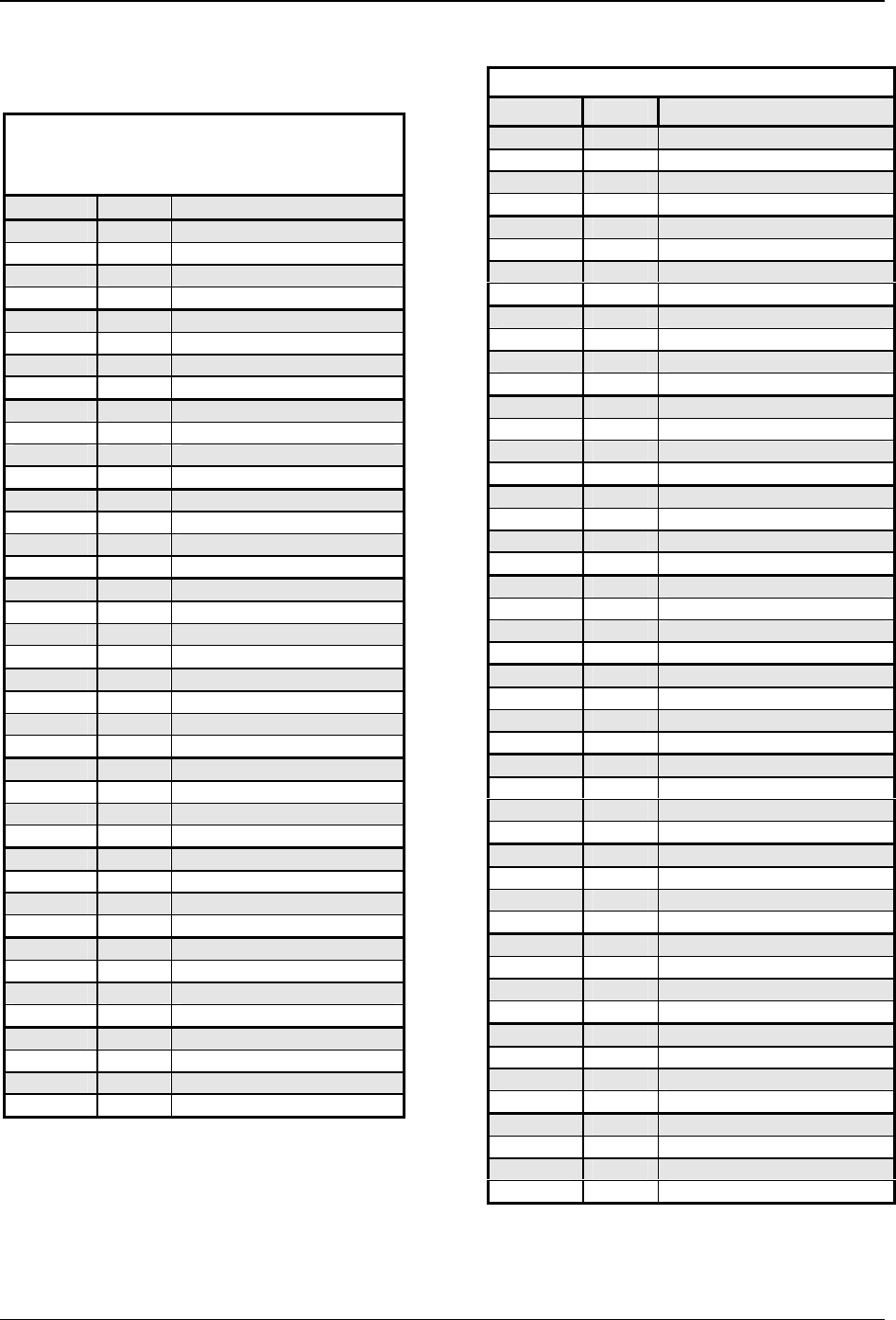
Revision 1.03
Specifications and Frequency Plans 3-9
Table 3-5: Frequency Plan (US),
12/13 GHz
12/13 GHz (25 MHz)
(Frequency Range 12,700 MHz -
13,250.0 MHz)
Channel
Offset
Receive Frequency MHz
1 - 12,706.25
1 0 12,712.50
1 + 12,718.75
1 ++ 12,725.00
2 - 12,731.25
2 0 12,737.50
2 + 12,743.75
2 ++ 12,750.00
3 - 12,756.25
3 0 12,762.50
3 + 12,768.75
3 ++ 12,775.00
4 - 12,781.25
4 0 12,787.50
4 + 12,793.75
4 ++ 12,800.00
5 - 12,806.25
5 0 12,812.50
5 + 12,818.75
5 ++ 12,825.00
6 - 12,831.25
6 0 12,837.50
6 + 12,843.75
6 ++ 12,850.00
7 - 12,856.25
7 0 12,862.50
7 + 12,868.75
7 ++ 12,875.00
8 - 12,881.25
8 0 12,887.50
8 + 12,893.75
8 ++ 12,900.00
9 - 12,906.25
9 0 12,912.50
9 + 12,918.75
9 ++ 12,925.00
10 - 12,931.25
10 0 12,937.50
10 + 12,943.75
10 ++ 12,950.00
12/13 GHz (25 MHz) (Con’t)
Channel
Offset
Receive Frequency MHz
11 - 12,956.25
11 0 12,962.50
11 + 12,968.75
11 ++ 12,975.00
12 - 12,981.25
12 0 12,987.50
12 + 12,993.75
12 ++ 13,000.00
13 - 13,006.25
13 0 13,012.50
13 + 13,018.75
13 ++ 13,025.00
14 - 13,031.25
14 0 13,037.50
14 + 13,043.75
14 ++ 13,050.00
15 - 13,056.25
15 0 13,062.50
15 + 13,068.75
15 ++ 13,075.00
16 - 13,081.25
16 0 13,087.50
16 + 13,093.75
16 ++ 13,100.00
17 - 13,106.25
17 0 13,112.50
17 + 13,118.75
17 ++ 13,125.00
18 - 13,131.25
18 0 13,137.50
18 + 13,143.75
18 ++ 13,150.00
19 - 13,156.25
19 0 13,162.50
19 + 13,168.75
19 ++ 13,175.00
20 - 13,181.25
20 0 13,187.50
20 + 13,193.75
20 ++ 13,200.00
21 - 13,206.25
21 0 13,212.50
21 + 13,218.75
21 ++ 13,225.00
22 - 13,231.25
22 0 13,237.50
22 + 13,243.75
22 ++ 13,250.00
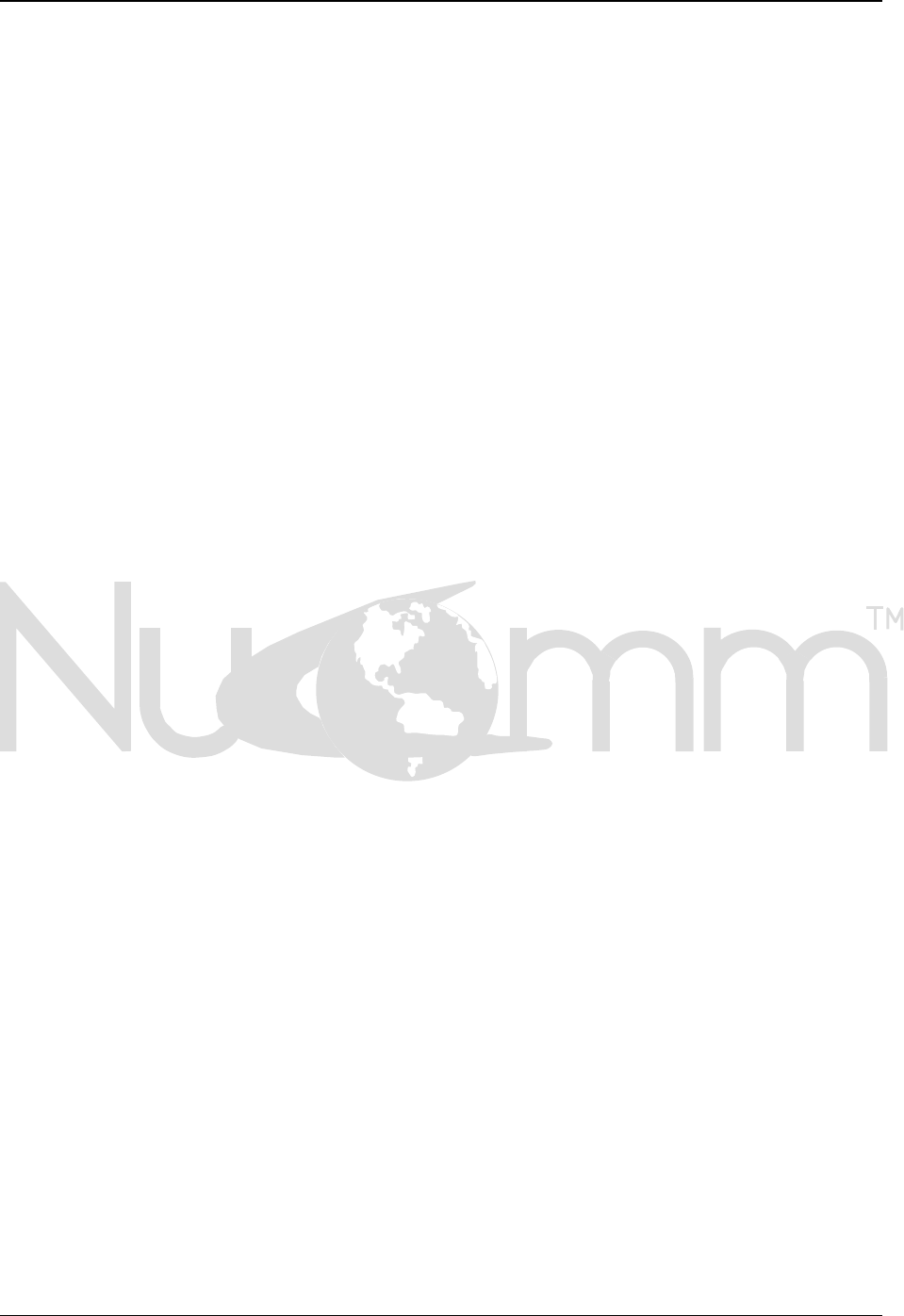
Revision 1.03
3-10 ChannelMaster TX7 Transmitter
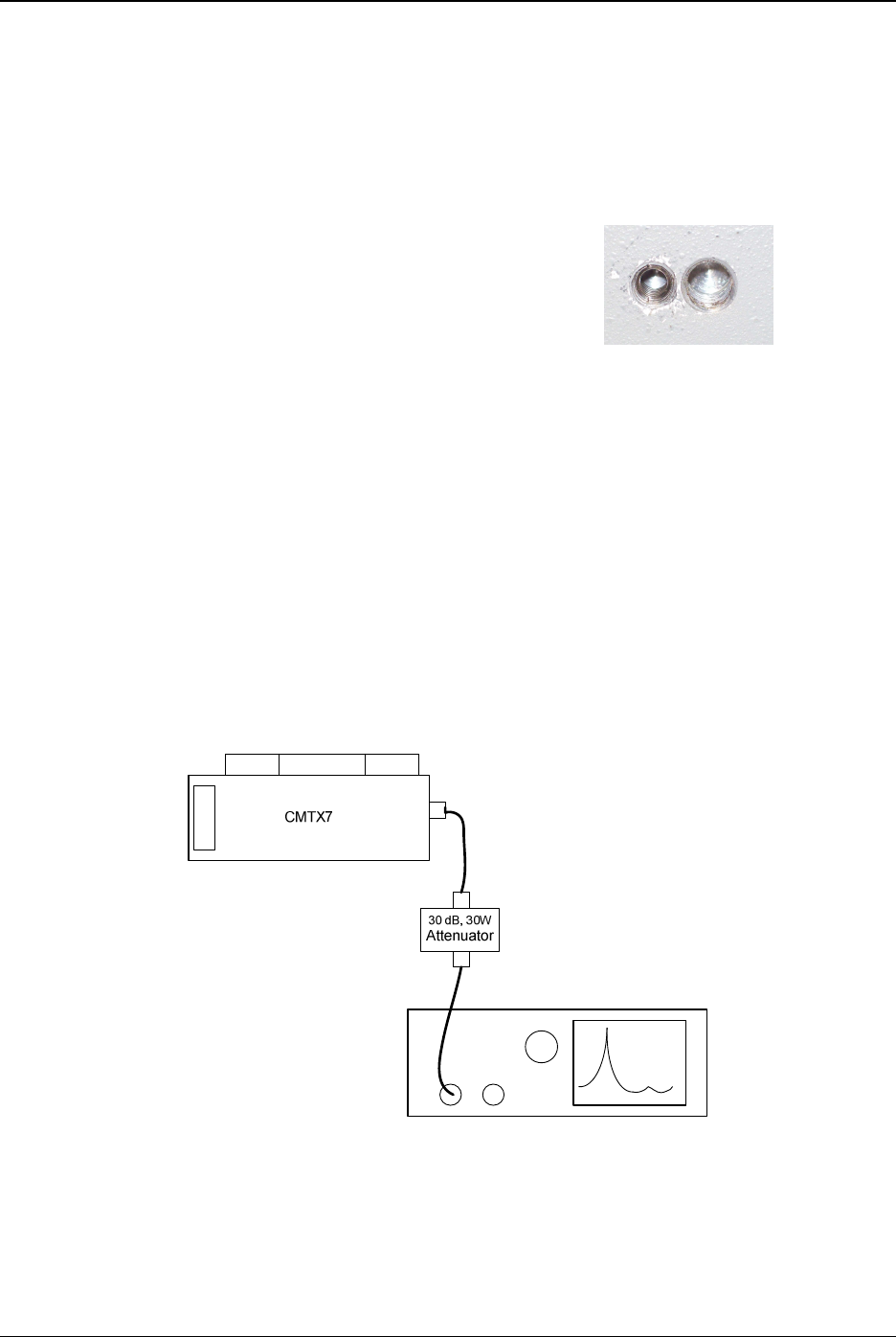
Revision 1.03
Installation 4-1
4. INSTALLATION
4.1 Unpacking and Inspection
Unpack and visually inspect the unit for
any damage to the LCD, connectors, or
external surface area damage. All
claims should be filed with the carrier.
Save all shipping and packing materials
for possible re-use.
4.2 Pre-Installation Checkout
Nucomm products are shipped fully
tested and calibrated. Should any on-
site testing be desired, the following
setup is recommended: Connect the
ChannelMaster RF output through a 30
watt, 30 dB attenuator to a calibrated
spectrum analyzer. Verify the output
frequency and level correspond to the
transmitter front panel settings within +/-
1dBm.
4.3 Mechanical Installation
The unit ships pre-assembled and re-
quires no mechanical installation other
than cabling.
The base of the unit has one large tripod
screw that is centered on the underside
of the system. A second, smaller tripod
screw towards the rear can also be
used. The base also has six holes for
mounting screws that can be used to
attach the unit from the underside. The
locations of the screw holes are shown
in Figure 4-2.
Figure 4-1: Pre-Installation Checkout Equipment Configuration
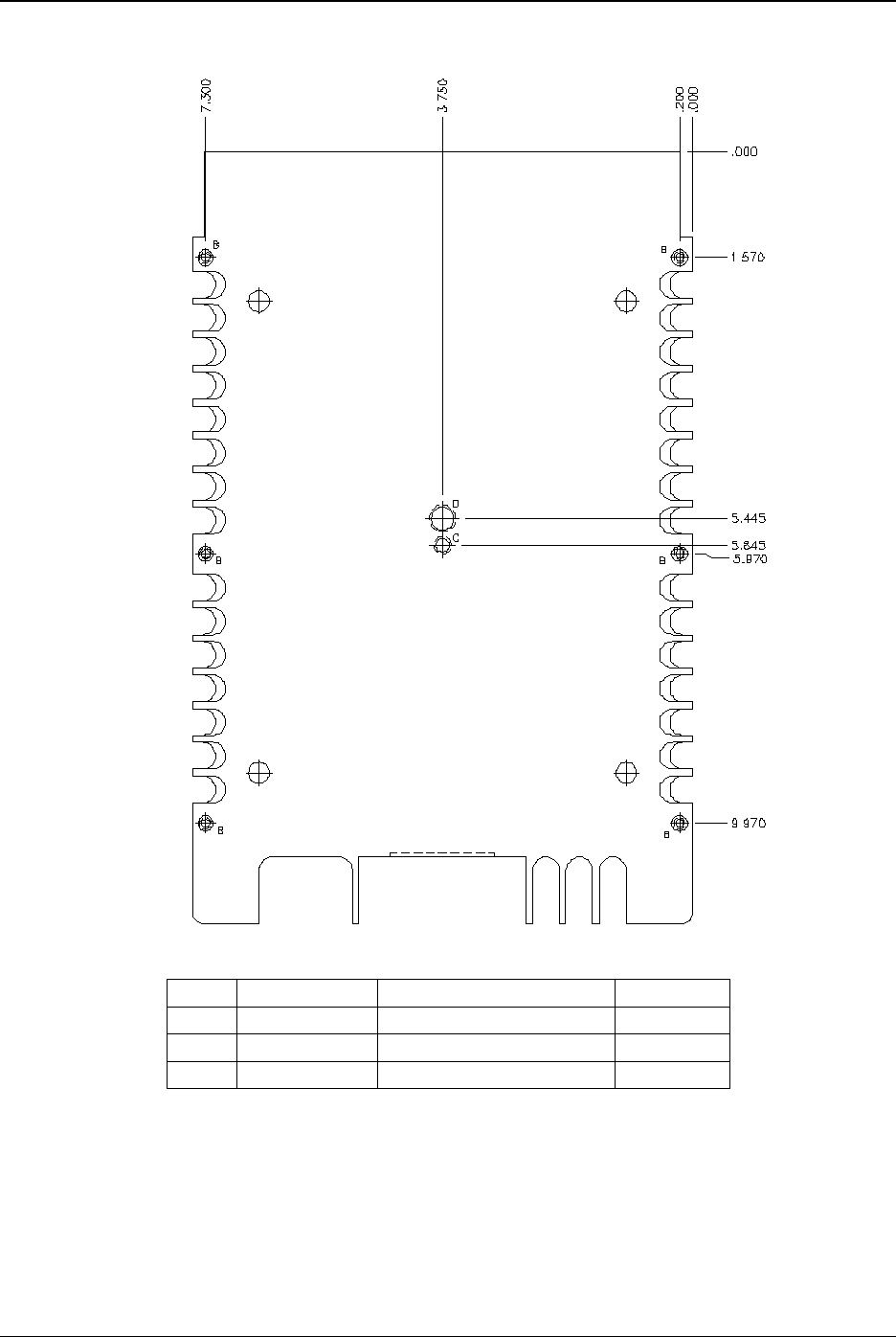
Revision 1.03
4-2 ChannelMaster TX7 Transmitter
Hole
Screw Size
Screw Length (Max)
Quantity
B 1/8-32 0.3” 6
C 1/4-20 0.35” 1
D 3/8-16 0.375” 1
Figure 4-2: CMTX7 Mounting Hole Locations and Screw Sizes
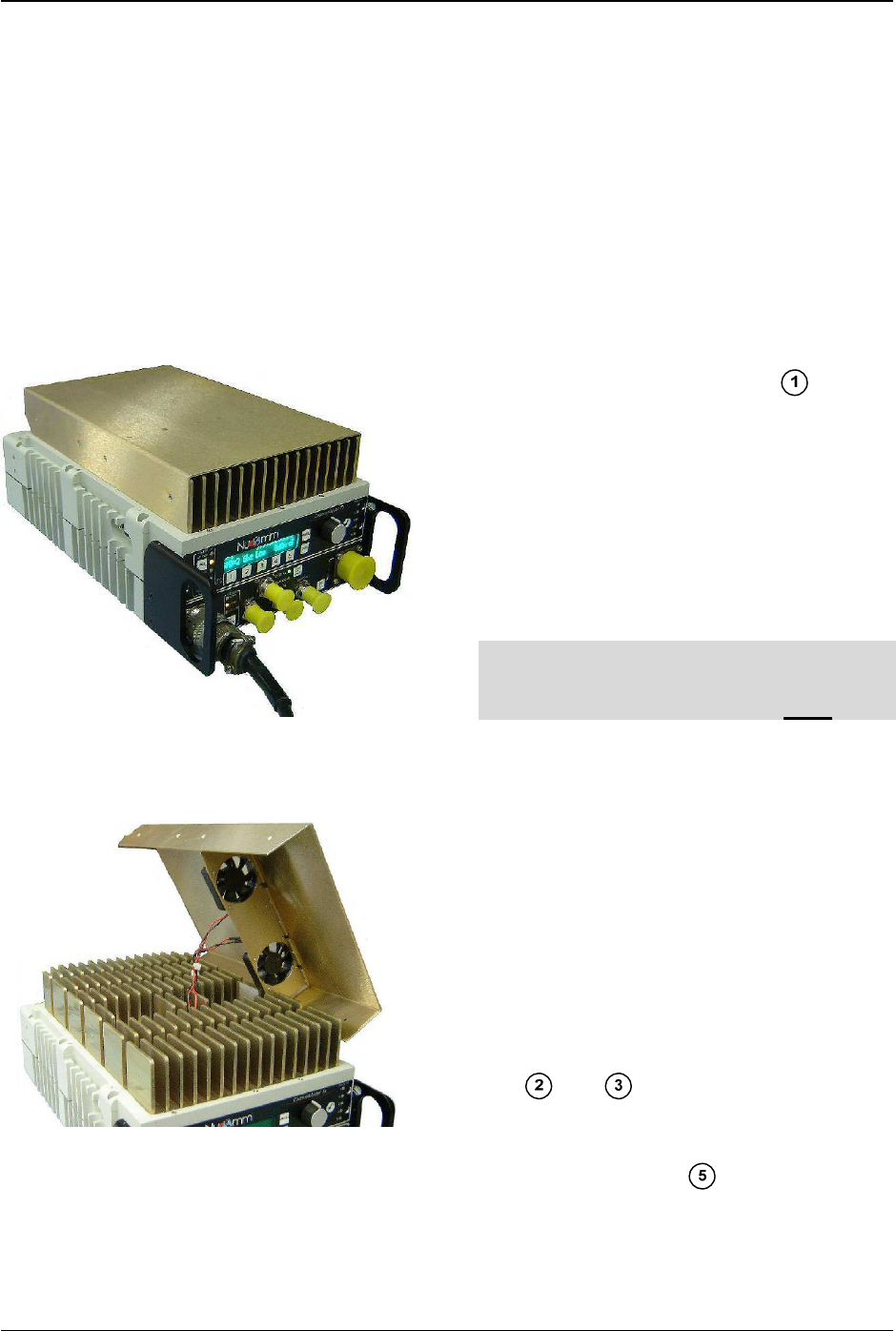
Revision 1.03
Installation 4-3
The unit has a large heatsink on its top
surface. This area requires clearance
from other objects while using the unit
within the unit’s normal operating air
temperature range.
Some units have a shroud covering the
heatsink. (see Figure 4-3). The shroud
includes two built in cooling fans (see
figure 4-4).
Figure 4-3: CMTX7 Unit with Shroud
Figure 4-4: CMTX7 Unit with Shroud
(Shows Built-in Cooling Fans)
4.4 Electrical Installation
The unit front and back panels are
shown in Figure 4-5 thru Figure 4-7.
4.5 Power Connection
The built-in power supply accepts these
input voltages without requiring any
jumper or switch settings:
• 90 to 132VAC, 60 Hz
• 180 to 264VAC, 50 Hz
• +11 to +32VDC
The power input is labeled in Fig-
ures 4-5 and 4-6. The Power Pin-Outs
and Cable are illustrated in Figures 4-8
and 4-9. See Chapter 3 for the Power
Supply Specifications.
Nucomm ships a DC cable and the ap-
propriate local AC line cord. Alternate
line cords are available upon request.
Optional "Standby" Power feature:
For power redundancy, the unit can be
configured to accept both AC AND DC.
4.6 ASI, SDI, Composite &
70MHz Ports
All video inputs are made via 75 Ω BNC
coaxial cables to the appropriate, clearly
marked, front panel port. See Figures 4-
5 and 4-6.
ASI and SDI Inputs can be SD (NTSC or
PAL) or HD Video transport streams.
ASI (to 31.66845 Mbps) or SDI signals
are input via the ASI IN or SDI IN ports;
see and .
Composite or Baseband video can be
input via VIDEO
IN . Note: On units
without a marked SDI IN port, SDI is in-
put via the VIDEO
IN port.
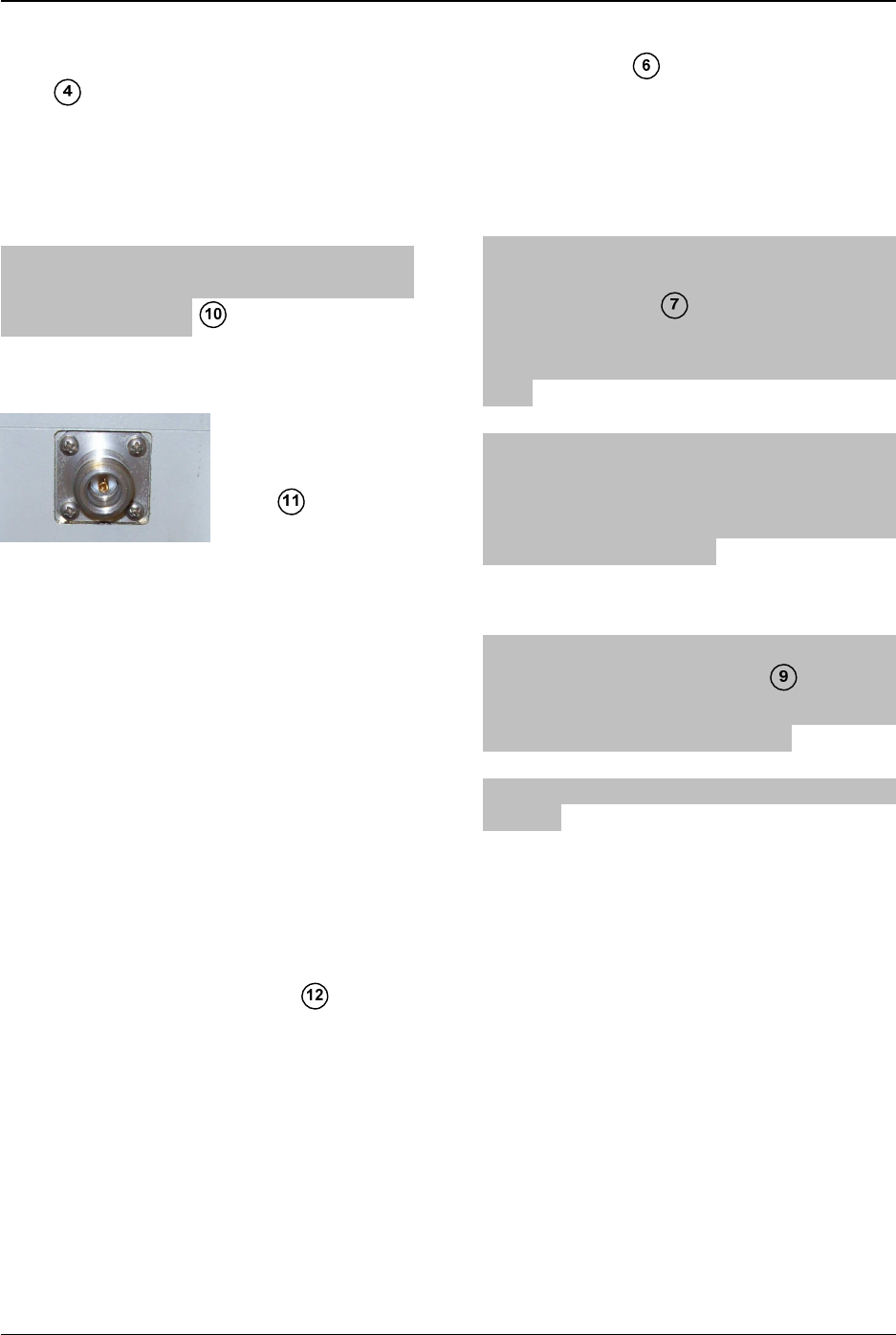
Revision 1.03
4-4 ChannelMaster TX7 Transmitter
70 MHz is input via the 70 MHz IN
port.
Select the appropriate input type via the
front panel user interface. See Section
5 for details.
An optional ASI OUT port enables use
of the CMTX7 as a standalone ASI
(MPEG2) encoder.
4.7 RF OUTPUT
RF output is via a
Type-N connector
at the rear of the
unit (See
Figure 4-7). Di-
rectly connect a suitable antenna, or a
50 Ω, low-loss coaxial cable (such as
RG-214U) between the RF Output and
the antenna connector.
4.8 Serial Port
The RS232/RS485 connector on the left
side of the unit is used for remote con-
trol and monitoring of the system. See
Figure 4-10. Serial data for remote con-
trol is also available on the front panel
power connector. See Figure 4-8.
4.9 POWER SWITCH and
FUSES
The unit has a power switch and AC
& DC fuses on the rear. The AC fuse is
2.5 Amps (fast blow). The DC fuse is 10
Amps (fast blow). Refer to Figure 4-7.
4.10 Models with Multi-Pin
“MS” Style Audio
Connectors
On models with multi-pin connectors, all
audio inputs are connected using a
multi-pin plug and two or four XLR
breakout cables (provided). See Figures
4-12 and 4-13.
4.11 Models With XLR Audio
Connectors
On models with XLR Audio Connectors,
audio inputs are connected via the front
panel XLR jacks . Models with 3 pin
XLR jacks have 2 audio inputs; models
with 5 pin XLR jacks have 4 audio in-
puts.
Phantom power is available on the right
XLR connector and can be activated
through the user menu to power micro-
phones requiring this feature when de-
sired. See Figure 4-14.
4.12 Firewire
The CMTX7 front panel has an
IEEE1394 Firewire video for con-
necting a video camera Firewire digital
video output. See Figure 4-11.
Contact Nucomm for availability of this
feature.
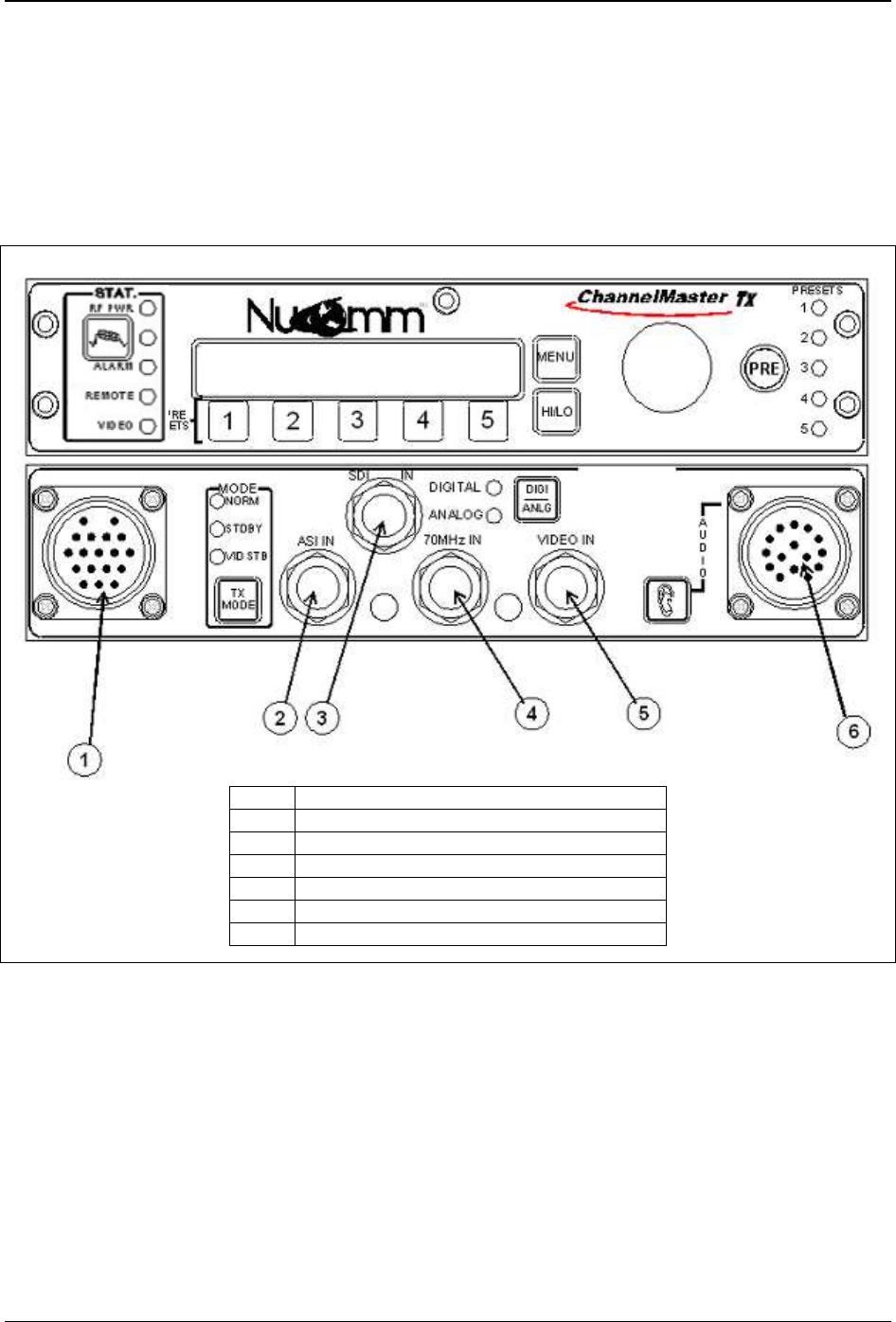
Revision 1.03
Installation 4-5
ITEM
DESCRIPTION
1 Power and RS232/485
2 ASI IN
3 SDI IN
4 70 MHz IN
5 VIDEO IN (Composite or Baseband Video)
6 AUDIO Input
Figure 4-5: ChannelMaster TX7 Front Panel (Mil Connector Version)
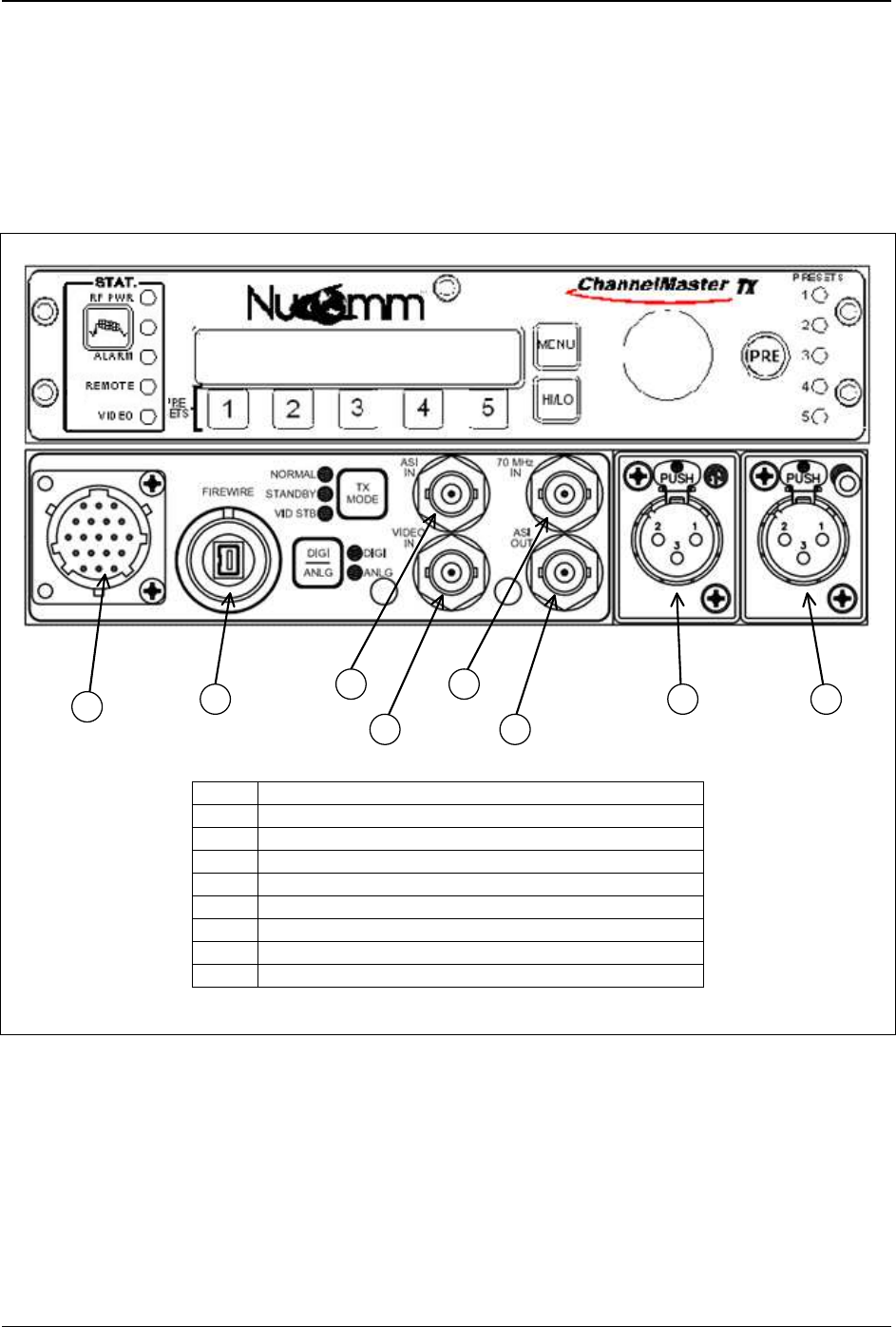
Revision 1.03
4-6 ChannelMaster TX7 Transmitter
1
24
5
78
9
10
ITEM
DESCRIPTION
1 Power and RS232/485
2 ASI IN
4 70 MHz IN
5 VIDEO IN (For Composite, Baseband, or SDI Input)
7 AUDIO 1 Input
8 AUDIO 2 Input
9 Firewire (Note 1)
10 ASI OUT
Note 1: Check with Nucomm for Availability of This Feature
Figure 4-6: ChannelMaster TX7 Front Panel (XLR Version)
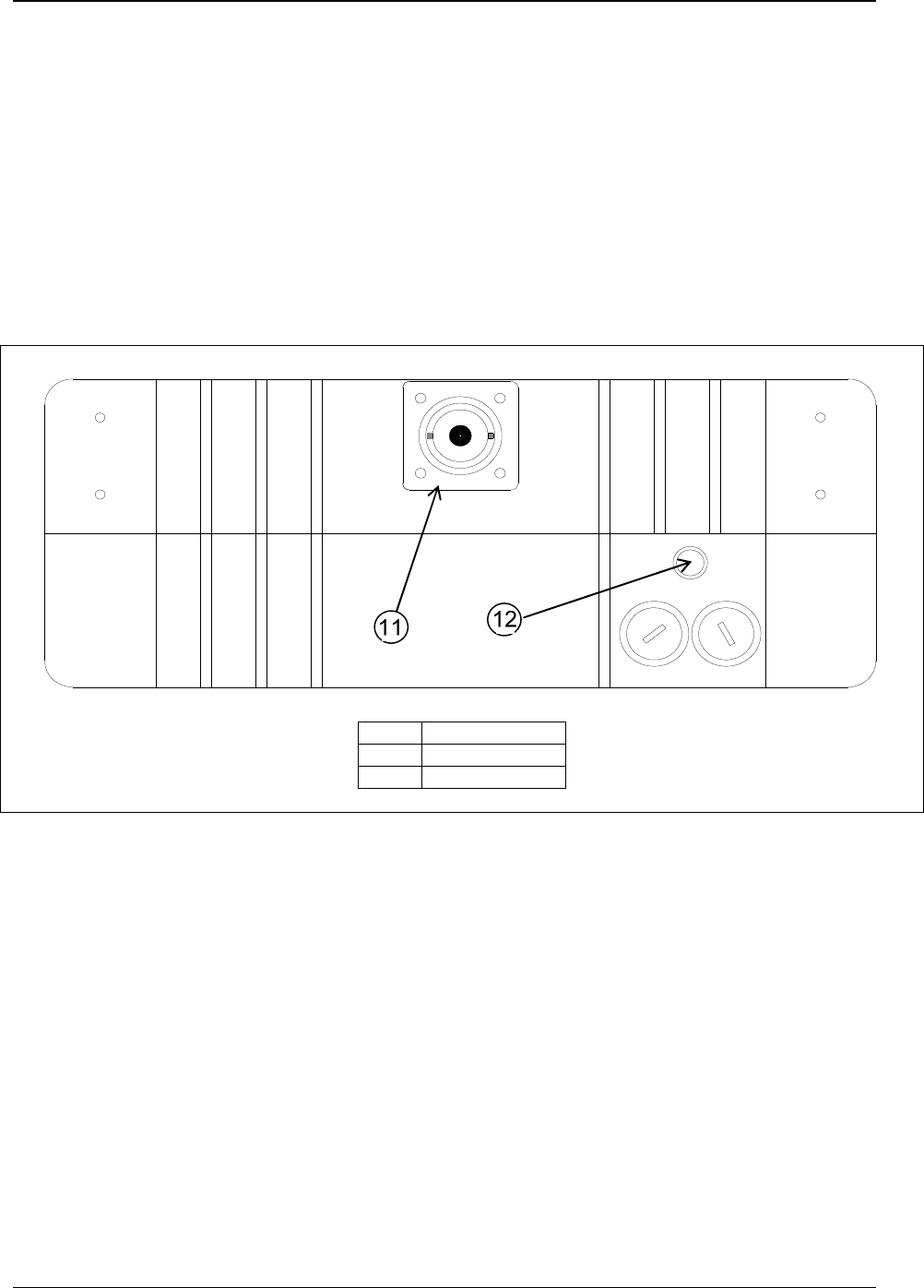
Revision 1.03
Installation 4-7
DCAC
ON
7 8
ITEM
DESCRIPTION
11 RF Connector
12 Power Switch
Figure 4-7: ChannelMaster TX7 Rear Panel (All Models)
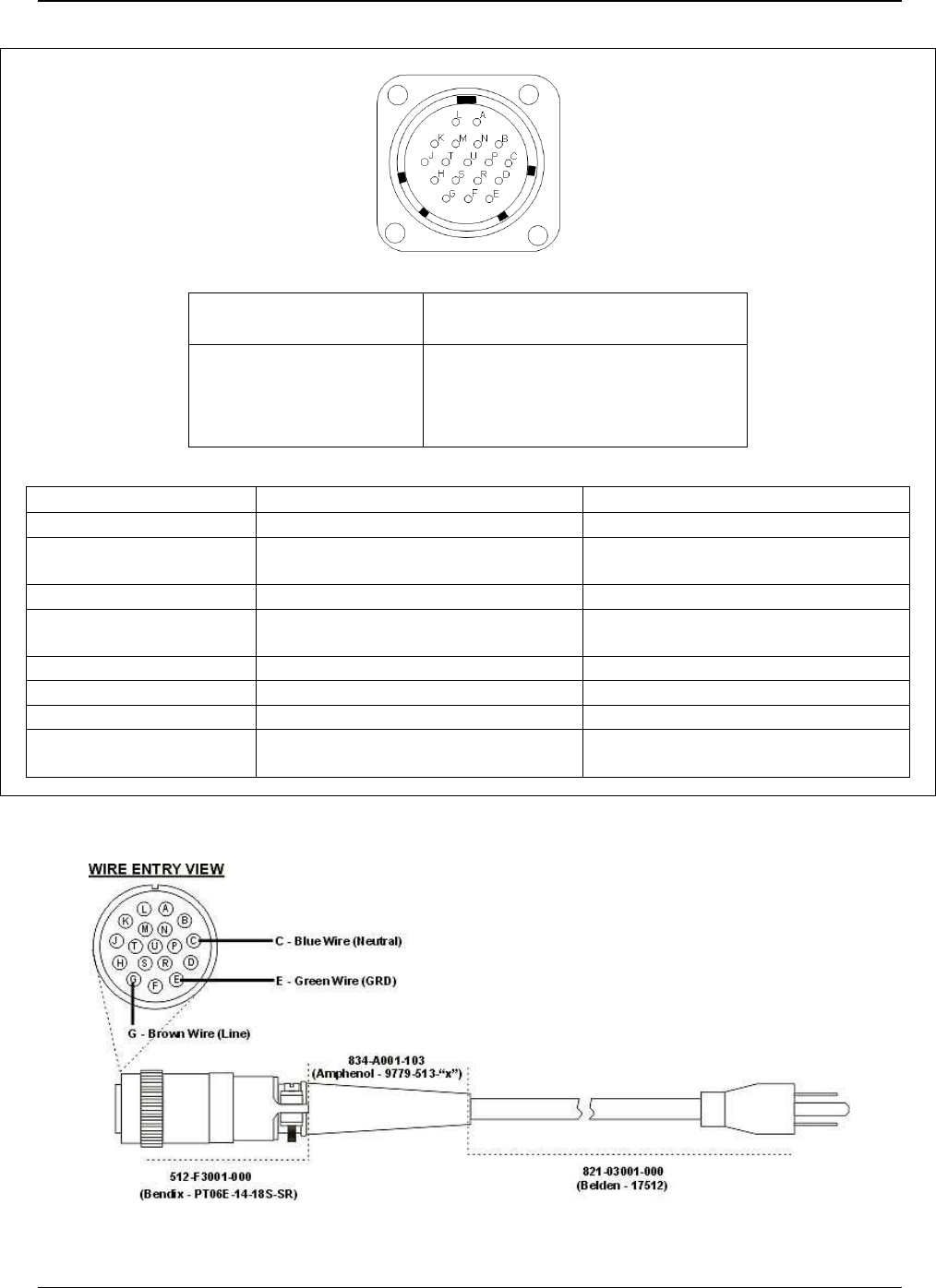
Revision 1.03
4-8 ChannelMaster TX7 Transmitter
CMTX7 Front Panel
Power Connector Mating Connector
Nucomm P/N:
512-M2001-000
Detoronics P/N:
DT02H-14-18PN
Nucomm P/N:
512-F3001-000
Mil-C-26482, Series 1
P/N: MS3116F-14-1PS
PIN DESCRIPTION NOTES
C AC Neutral
E Chassis GND Connected to Chassis and Pins H
and S internally.
G AC Line
H, S GND (DC GND RETURN) Connected to Internal DC ground,
Pin E, and Chassis internally.
P, U, B +DC IN DC power
M RS232 TX / OUT For Remote Control
L RS232 RX / IN For Remote Control
SHELL Chassis GND (Can be used to shield power ca-
bles.)
Figure 4-8: Power and RS-232 Connector Pin-Outs and Part Information
Figure 4-9: AC Line Cord Construction
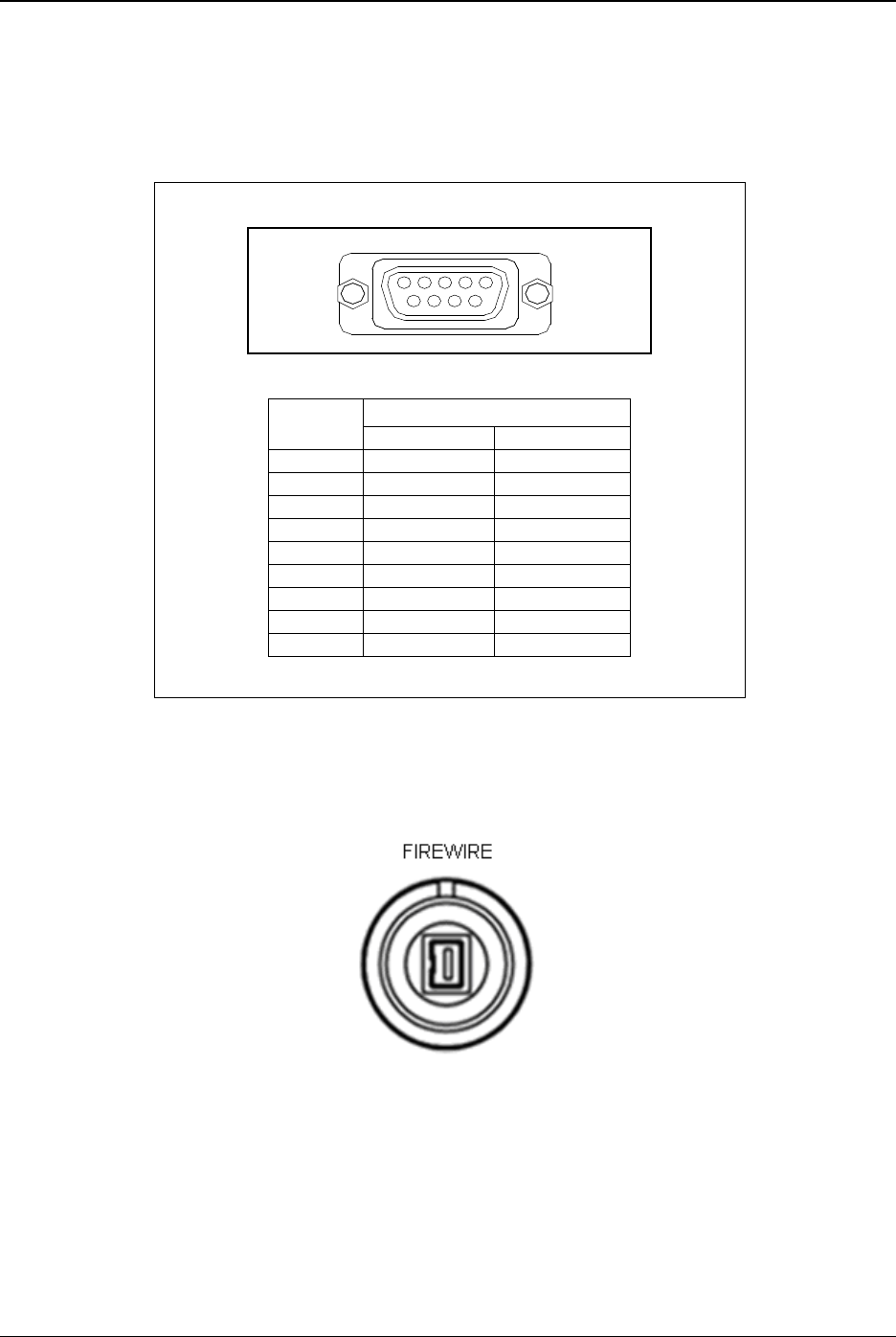
Revision 1.03
Installation 4-9
Function
Pin #
RS232 RS485
1 N/C N/C
2 RX / IN RX/A
3 TX / OUT TX/A
4 N/C N/C
5 GND GND
6 N/C TX/B
7 N/C N/C
8 N/C RX/B
9 +11Volts +11Volts
Figure 4-10: RS232/RS485 Connector Pin-Outs
Figure 4-11: Firewire Input Connector (Optional)
(Contact Nucomm for availability of this option.)
1
6
9
5
RS 232 (DB9
-
F)
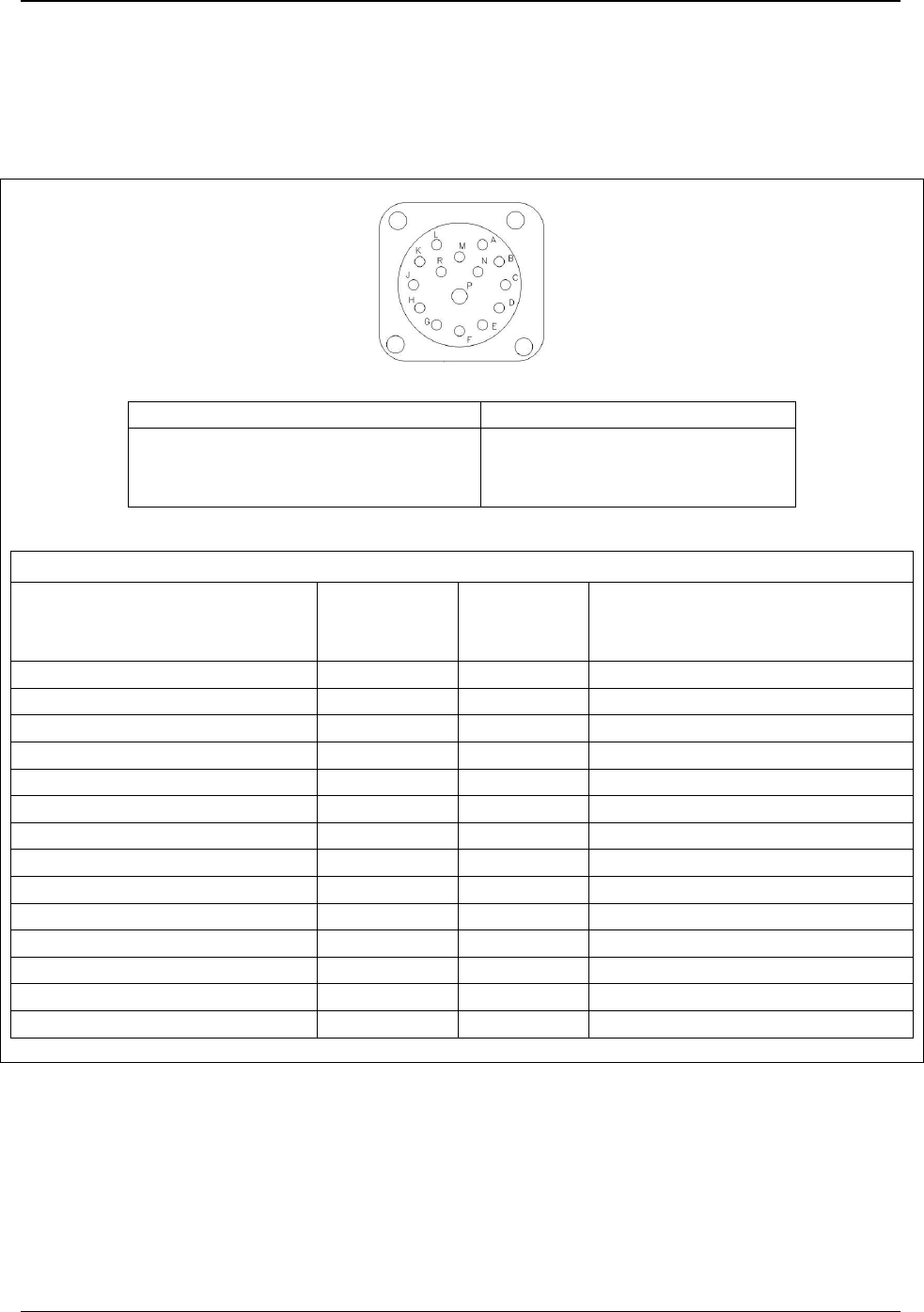
Revision 1.03
4-10 ChannelMaster TX7 Transmitter
CMTX7 Front Panel Connector Mating Plug
Nucomm P/N: 512-M2014-015
Detoronics P/N: DT02H-14-15PN
Nucomm P/N 512-F3012-015
Mil-C-26482, Series 1
P/N: MS3116J-14-15S
CM Transmitter Audio Cable
CM Transmitter 17-Pin
Audio Connector
PIN-OUT
XLR
PIN-OUT XLR
Signal DESCRIPTION
J 2 A1+ Analog1/AES1
H 1 A1 GND Analog1/AES1 Ground
G 3 A1- Analog1/AES1
M 2 A2+ Analog2
L 1 A2 GND Analog2 Ground
K 3 A2- Analog2
F 2 A3+ Analog3/AES2
E 1 A3 GND Analog3/AES2 Ground
D 3 A3- Analog3/AES2
C 2 A4+ Analog4
B 1 A4 GND Analog4 Ground
A 3 A4- Analog4
I - - Not Connected
SHELL SHELL SHELL Earth (Chassis) Ground
Figure 4-12: Audio Cable Connections
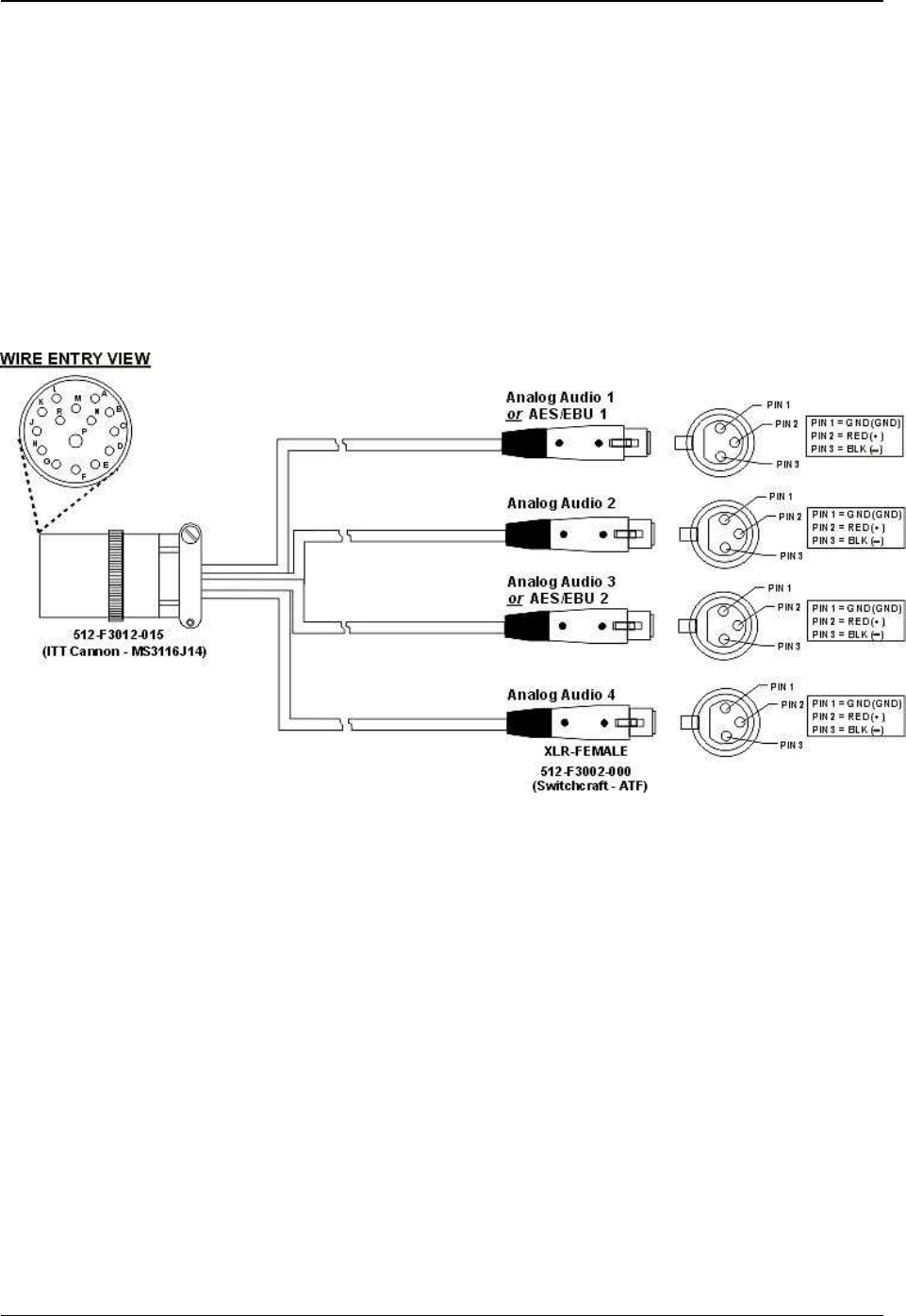
Revision 1.03
Installation 4-11
Figure 4-13: XLR Breakout Cable
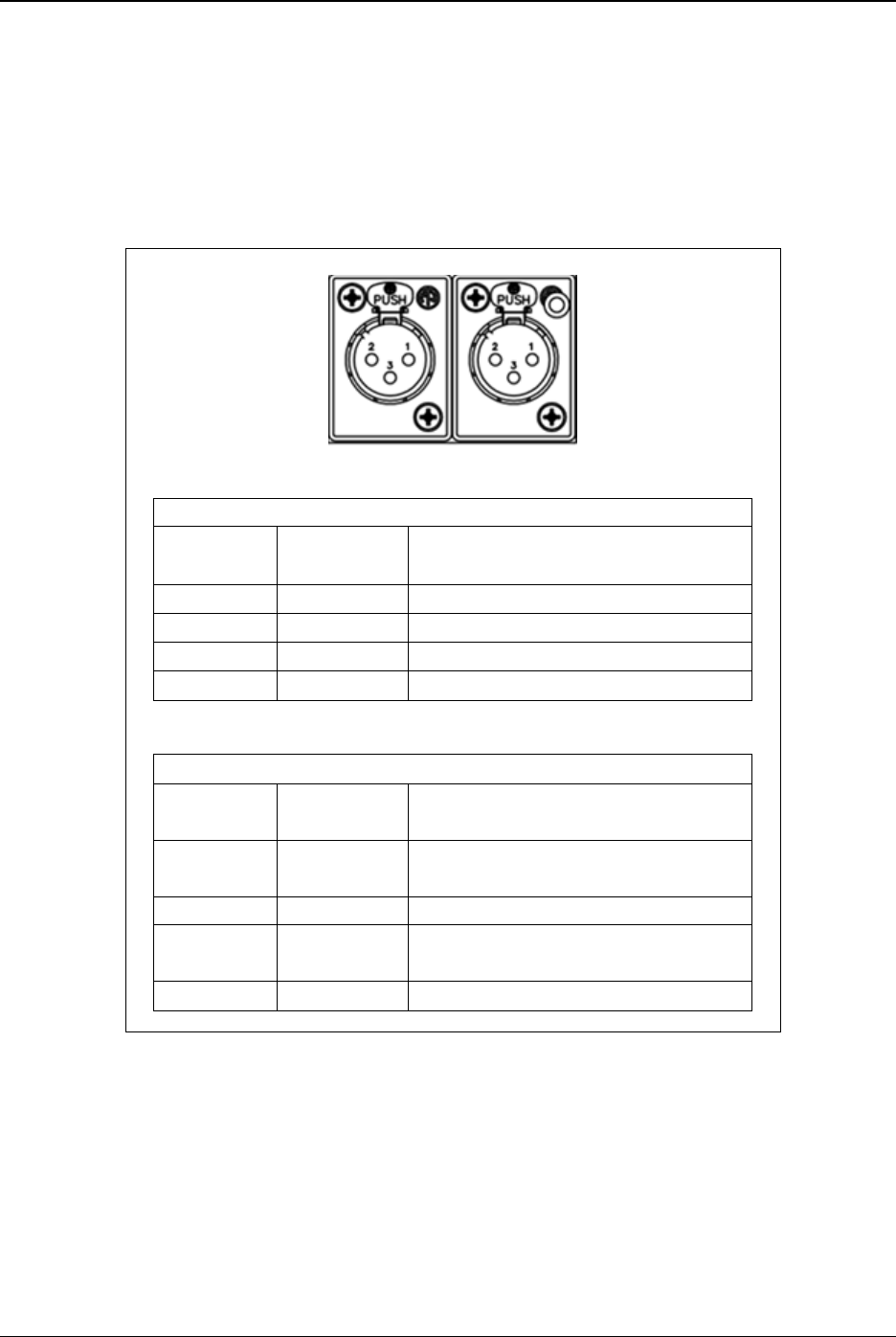
Revision 1.03
4-12 ChannelMaster TX7 Transmitter
LEFT XLR CONNECTOR PIN-OUTS
XLR PIN-
OUT SIGNAL DESCRIPTION
2 A1+ Analog 1 / AES 1 +
1 A1 GND Analog 1 Ground
3 A1- Analog 1 / AES 1 -
SHELL SHELL Earth (Chassis) Ground
RIGHT XLR CONNECTOR PIN-OUTS
XLR PIN-
OUT SIGNAL DESCRIPTION
2 A2+ Analog 2 + , Optional Phantom
Power Output
1 A2 GND Analog 2 Ground
3 A2- Analog 2 - , Optional Phantom
Power Output
SHELL SHELL Earth (Chassis) Ground
Figure 4-14: 3-PIN XLR Input Pin Assignments (2 Audio Inputs)
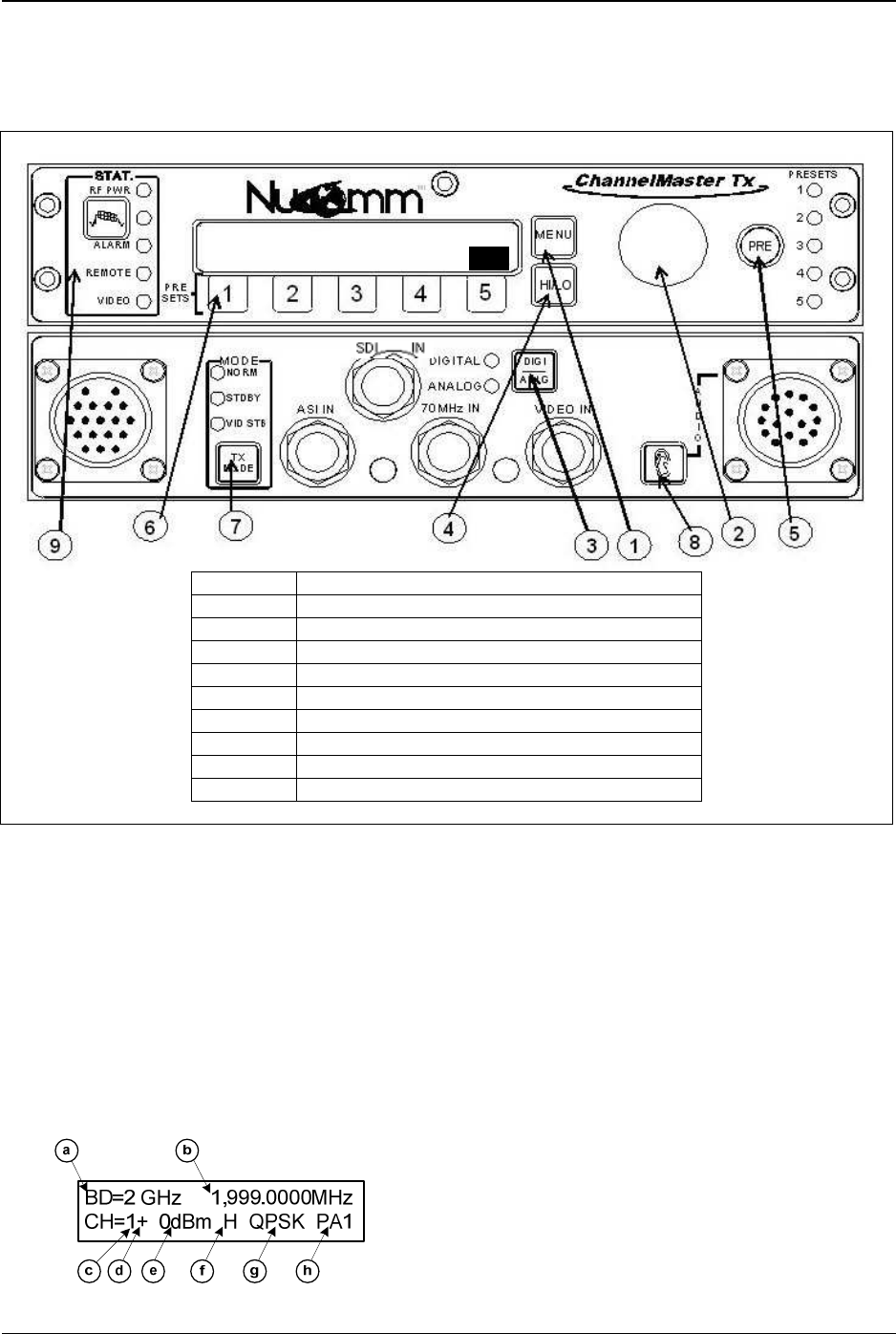
Revision 1.03
Operation 5-1
5. OPERATION
ITEM DESCRIPTION
1 Menu Button
2 “Quick Knob” and Selection Pushbutton
3 Digital/Analog Mode Select Button
4 HI/LO Button
5 PRE Button
6 1 - 5 Selection Buttons
7 TX (Transmit) Mode Button
8 Audio Quick Key Button (non-XLR Model only)
9 Status Display
Figure 5-1: ChannelMaster TX7 Front Panel Controls and Indicators
5.1 Power Up Displays
Upon powering up the unit, you will see
three quick screens showing the equip-
ment type, the model number, and the
serial number. After that, the unit will
display the DEFAULT screen, which will
look similar to the following (depending
on your configuration).
The DEFAULT screen displays:
(a) The current Frequency Band
(b) The current Channel Frequency
(c) The current Channel
(d) The current channel Offset
(e) The RF Output Level in dBm
(f) The current Power Level (HI / LO)
(g) The current Modulation Type
(h) The current Preset selected (if any)
Once this screen appears, options and
settings can then be changed and initial-
ized through the use of the front panel
"Quick-Keys" and pre-set buttons, via
the menu system, or by making selec-
BD=2 GHz 1,999.000MHz
CH=1+ 0dBm H QPSK PA1
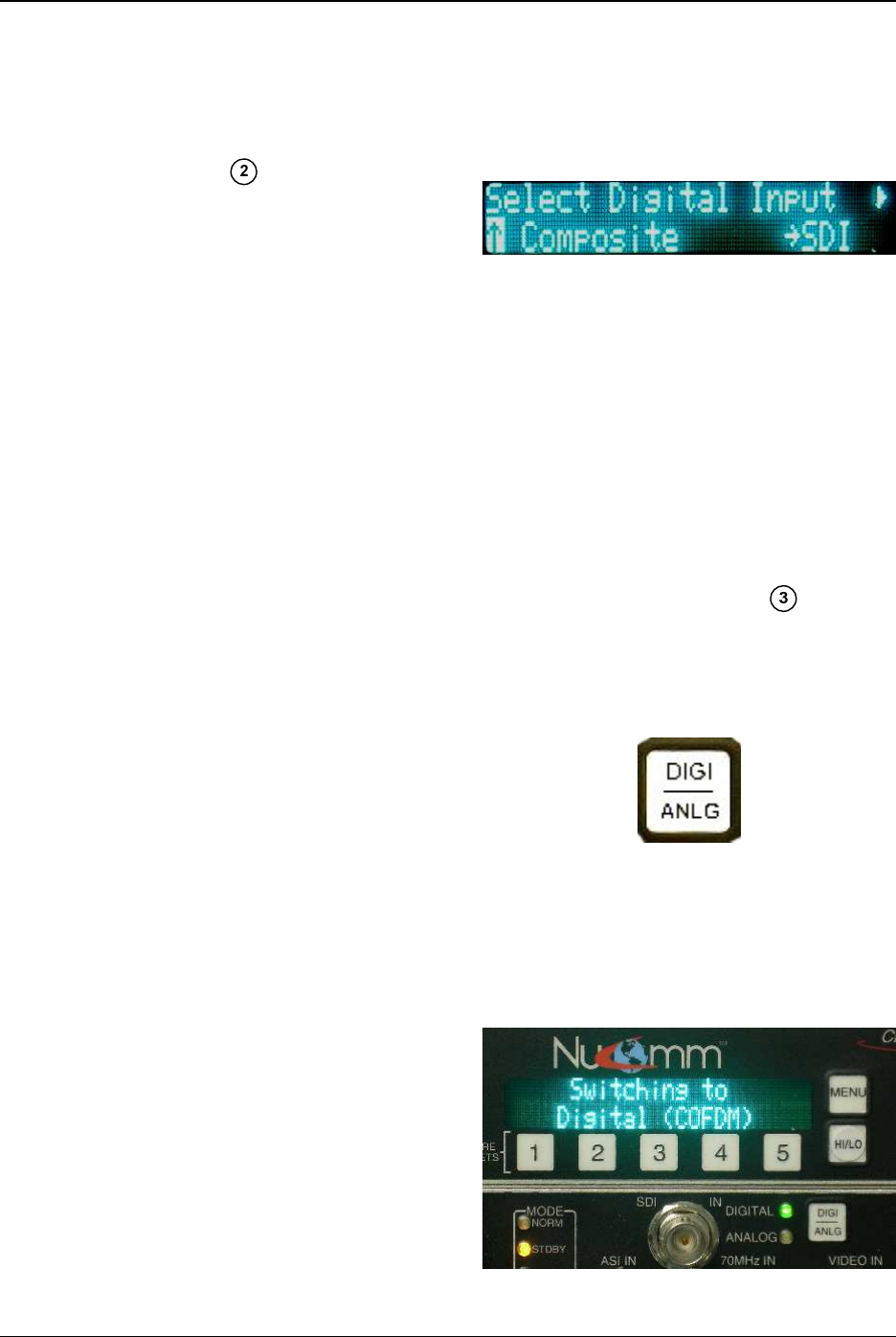
Revision 1.03
5-2 ChannelMaster TX7 Transmitter
tions from the default screen with the
Quick Knob.
System navigation is via the rotary
"Quick Knob" switch (See Figure 5-
1) to the right of the LED display. Turn
the "Quick Knob" clockwise or counter-
clockwise to move the cursor through
the DEFAULT screen selections or the
menus. By pressing the "Quick Knob",
you are able to select or activate items.
The "Quick Knob" may also be referred
to as the “Enter” button or “the Wheel.”
5.1.1 Changing Characters
1. Begin by rotating the “Quick
Knob” until the desired screen
item is hightlighted. Press Enter
to select the item.
2. The left-most character position of
the name will then be highlighted.
Rotate the “Quick-Knob” until the
desired alpha-numeric character
appears.
3. Press the “Quick-Knob” to save
the character.
4. Move the cursor to the second
character by rotating the “Quick-
Knob”.
5. Press the “Quick-Knob” to select
the character.
6. Rotate the “Quick-Knob” until the
desired alpha-numeric character
appears.
7. Again, Press the “Quick-Knob” to
save the character.
8. Repeat Steps 2 thru 7 until either
the desired name is assigned or
all character positions are filled.
On certain screens (as with system set-
tings), an arrow is used to show the cur-
rent setting, as in the following where
"SDI" is currently set:
Note the highlighted arrow at the bot-
tom left of the screen. This highlight-
ing is the "cursor", and indicates an item
that is ready to be selected.
Note: After one minute of inactivity the
display reverts to the DEFAULT screen,
and any un-activated selections are dis-
carded.
5.2 Front Panel Buttons
Modulation Mode
The ChannelMaster modulation mode is
set to ANALOG or DIGITAL using the
“DIGI/ANLG” Button.
Pressing the “DIGI/ANLG” Button tog-
gles the ChannelMaster between Digital
and Analog modulation modes. An LED
and a confirmation message indicate
that the mode change is being made.
Switching to Digital Mode
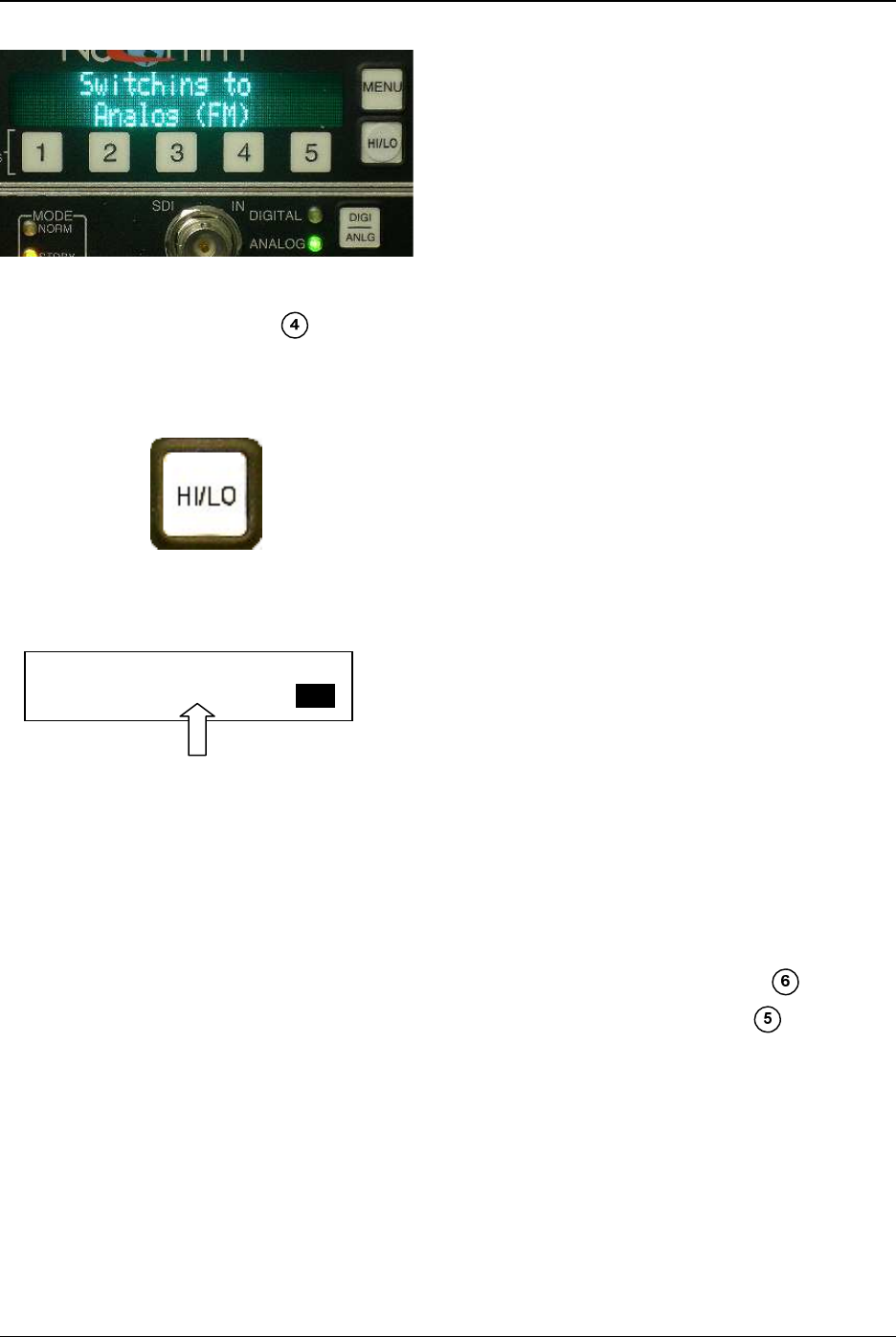
Revision 1.03
Operation 5-3
Switching to Analog Mode
Set Power Level
The user can toggle between HI or LOW
power by pressing the “HI/LO” Button.
The LCD will then immediately display
the change.
Unit in Low Power Mode
5.2.1 Changing Operating
Frequency
(Requires Frequency Direct Mode. See
Sec. 5.9.1.)
1. Ensure that the Main Menu
screen is displayed on the LCD.
2. Rotate the “Quick-Knob” to
highlight the preset parameter to
be changed.
3. Press the “Quick-Knob” to enter
the selection.
4. Rotate the “Quick-Knob” to adjust
the value of the selection.
5. Press the “Quick-Knob” to enter
the changed value.
6. Rotate the "Quick Knob" until the
digit that needs to be changed is
highlighted.
7. Press "Enter".
8. Change the digit as needed.
9. Press "Enter".
10. Repeat until all digits are correct.
11. When all digits are correct, move
the cursor to the end of the fre-
quency where it says “GHz”.
12. Press "Enter".
When the operating frequency is
changed, the unit goes into standby
while the synthesizer re-tunes to the
new frequency. Transmission resumes
when the new frequency is reached.
Note: If offset channel operation is de-
sired, the user is cautioned to ensure
they have adequate authorized spec-
trum to avoid illegal operation. For ex-
ample, in the US post-Nextel 2 GHz
band plan, which stipulates 12 MHz
channels with 3 MHz offsets, use of 7
MHz or 8 MHz modulation bandwidths
on an offset channel would result in out
of channel emissions and potential ad-
jacent channel interference. Thus, for
this example, 6 MHz modulation band-
width should be used when using offset
channels with Channels 1-7 in the US 2
GHz post-relocation band plan.
5.3 Using Presets
There are 15 user definable Presets.
These Presets are accessed using the
numbered “Preset” Buttons, or
through the “PRE” Button.
The numbered Preset Buttons (1
through 5) are located just below the
LCD. These five numbered preset keys
are provided to rapidly store and recall
custom configurations without requiring
any menu navigation.
There are three banks of Presets: Pa1-
Pa5, Pb1-Pb5, and Pc1-Pc5.
BD=2 GHz
1,999.000MHz
CH=1 0dBm L QPSK PA1
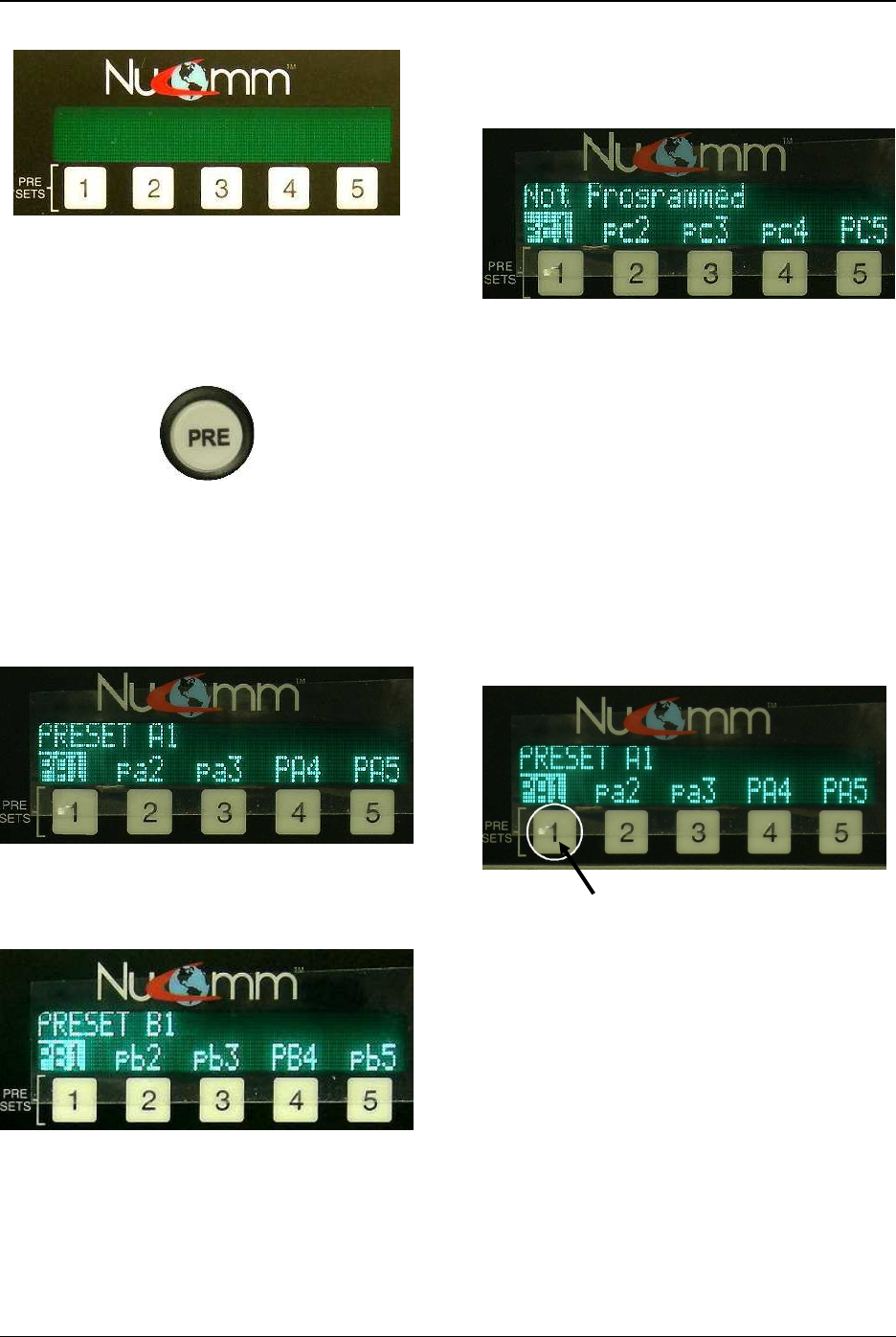
Revision 1.03
5-4 ChannelMaster TX7 Transmitter
Pa1 through Pa5 may be accessed by
simply pressing the Preset (1-5) buttons.
The other two sets of presets are only
accessible through the PRE (Preset)
Button.
“PRE” Button
The “PRE” button toggles between the
three banks of presets. Pressing the
“PRE” Button once brings up the presets
pa1 – pa5.
Pressing the “PRE” Button twice, brings
up the presets pb1 – pb5.
Pressing the “PRE” Button three times,
brings up the presets pc1 – pc5.
Saving Presets
Before saving a preset, program the
radio with the desired parameters.
(Refer to Section 5.2.1 or 5.5.)
To Save Your Settings:
For Presets pa1 – pa5, simply press &
hold the desired numbered button until
the confirmation message is displayed
(approximately 4 seconds).
Press & hold numbered button below
the desired preset to save it.
For Presets pb1 – pb5, & pc1 – pc5,
press the “PRE” Button the appropriate
amount of times to bring up the desired
set. Rotate the “Quick-Knob” to highlight
the desired preset. Press & hold the
appropriate numbered key until the
confirmation message is displayed
(approximately 4 seconds).
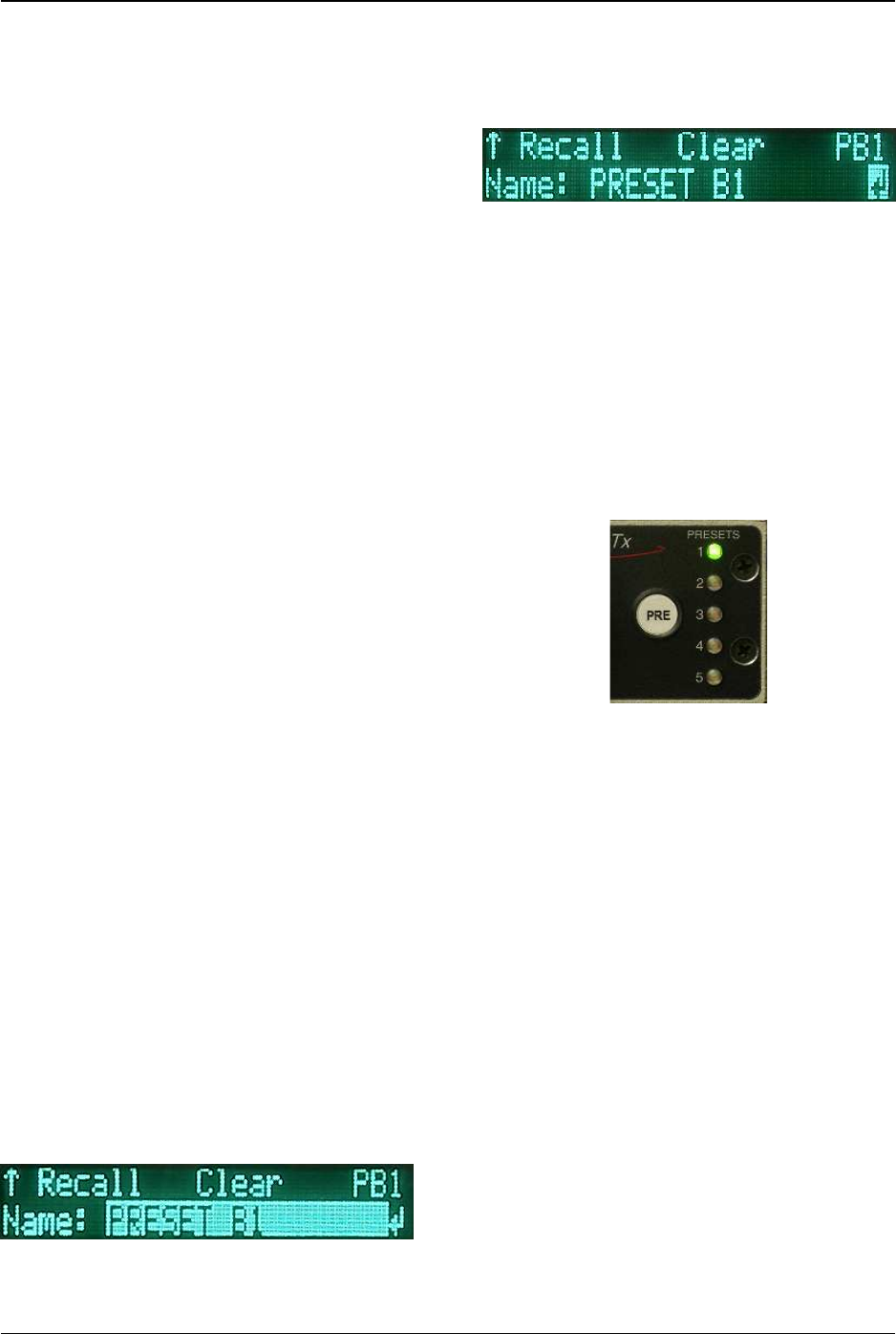
Revision 1.03
Operation 5-5
When a preset is saved, all system pa-
rameters are stored into memory with
the associated preset. These parame-
ters include:
• Modulation Parameters
• Input Type
• Power Mode
• Channel Number & Frequency
• Audio Settings
All presets represented by uppercase
letters have been programmed. All
presets represented by lowercase letters
have not been programmed.
Example:
• PA1 - has been programmed.
• pa1 - has not been programed.
Setting & Changing Preset Name
Each preset can be given a name up to
16 characters long. The name can
consist of alpha-numeric characters only
(characters A – Z & 1 – 9). The preset
must be saved before it can be assigned
a name.
To assign a preset name:
1. From any menu screen, toggle the
“PRE” Button to bring up the set
containing the desired preset.
2. Rotate the “Quick-Knob” to
highlight the preset to be named.
3. Press the “Quick-Knob” to select
the Preset.
4. Rotate the “Quick-Knob” until the
name area is hightlighted.
5. Press the “Quick-Knob” to begin
editing. (Refer to Section 5.1.1 for
Changing Characters.)
Highlighted Name Area
6. When finished, move the cursor
over the arrow at the bottom-right.
7. Press the “Quick-Knob” to select
the arrow. The name has now
been saved.
Recalling A Preset
Briefly press the desired Preset button to
recall settings.
When PA1-PA5 have been recalled, the
associated Preset LED will illuminate.
Preset 1 Active
NOTE: If the unit is enabled for Preset
Lock RF CHN, the frequency cannot be
changed by a preset and will remain the
current operating channel.
Clearing all Presets
Pressing and holding the “1” and “3”
buttons simultaneously brings up the
following dialog:
Clear All Presets?: Yes? No?
Caution: Selecting “YES” will clear all
presets in the radio.
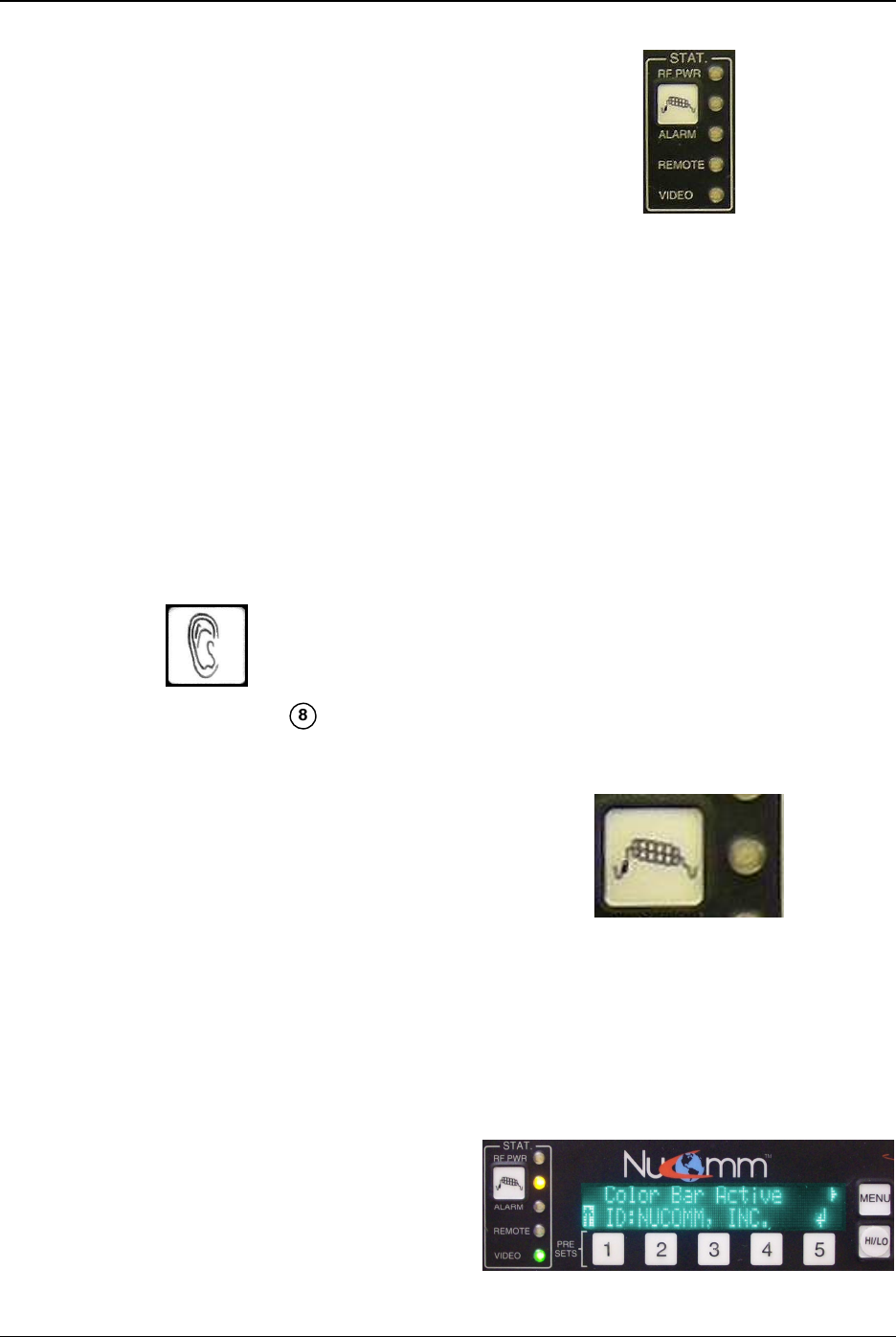
Revision 1.03
5-6 ChannelMaster TX7 Transmitter
TX MODE
The TX MODE button is used to select
from the following operating modes:
• NORMAL: Transmitter is active,
with or without an input signal.
• STANDBY:Transmitter is in
STANDBY until switched to
another mode. Frequency
synthesizer is locked on
frequency.
• VID STBY: Controls the
transmitter behaviour when a
signal is not detected on the
input port. The system can be
set to either go to Standby or
transmit the internally generated
test bars.
• VID STB l at this time.
AUDIO Quick Key
The AUDIO quick key provides a short-
cut to the audio settings. (Note: the Au-
dio button is not present on the optional
XLR front panel.)
When modulating digitally, the system
will display the Encoder's audio settings
as if you had selected the following
menu items: Menu>Encoder>Audio.
(Refer to Section 5.5; Encoder Menu
Selections.)
When modulating in analog, the system
displays the FM audio settings, as if the
following items were selected: Menu>
Modulation> Parameters> FM> Audio.
(Refer to Section 5.5; FM.)
5.4 Status Indicators & Test
Gen
The following show the unit's status:
RF (Green): RF present at output port.
Test Gen LED (Amber): Color Bars
are active.
Alarm (Red): Indicates an improper
setting or a module failure. The exact
reason for the alarm can be deter-
mined from the Alarm section of the
Main Menu.
Remote: Unit is under remote control.
Video (Green): Indicates that video is
present.
TEST GEN
This button toggles the internal color
bars “on” and “off,” and allows editing of
the 16 character ID, as well as selection
of the tone levels. TEST GEN may only
be selected when the input type is set to
COMPOSITE or SDI.
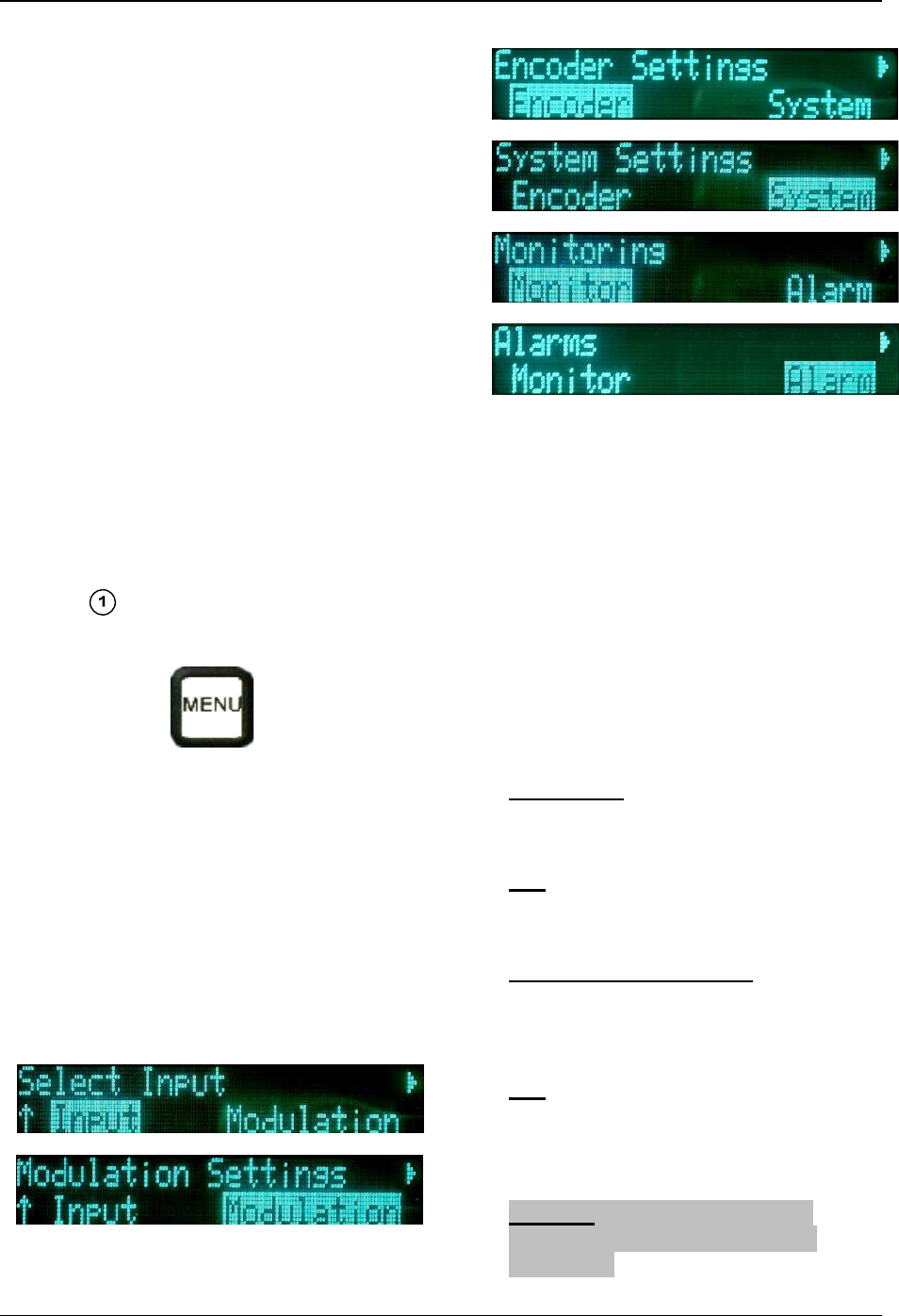
Revision 1.03
Operation 5-7
When TEST GEN is enabled, the LED
will light and the LCD will display the
screen shown above. The ID can be
edited from this screen.
To modify the TEST TONE levels, scroll
the wheel to the right twice and the
TONE LEVEL screen will appear. The
tone levels can be set from -26dBFS to
-10dBFS.
When the TEST TONE is “on,” the left
channel contains a continuous tone and
the right channel has a pulsing tone.
5.5 Main Menu Selections
The user can customize the Channel-
Master TX7 operation (rather than us-
ing the factory defaults) through the
Main Menu. After pressing the MENU
Button , the Main Menu Screen will
appear.
From the Upper Level Menu, the user
can select one of six sub-menus to ac-
cess. They are:
• Input Menu
• Modulation Settings Menu
• Encoder Settings Menu
• System Settings Menu
• Monitoring Menu
• Alarms
5.6 Input Menu Selections
The Input Menu selections are depend-
ent on whether the unit is set for Analog
or Digital modulation (Section 5.2).
Only one input can be made active at a
time. The Input Menu controls the ac-
tive input, regardless of any signals pre-
sent on the input connectors.
When digital modulation is selected,
the available input selections are:
Composite - The signal is converted
to digital via the MPEG Encoder and
routed to the digital modulator.
SDI - The signal routes through the
MPEG Encoder and then to the digital
modulator.
External 70 MHz Digital - This input
bypasses the encoder and modulator,
and routes to the heterodyne up-
converter.
ASI - Input bypasses the Encoder
and goes to the digital modulator.
(The ASI rate must be at or below the
maximum digital modulation rate.)
Firewire – The MPEG2 data is
extracted and sent to the digital
modulator.
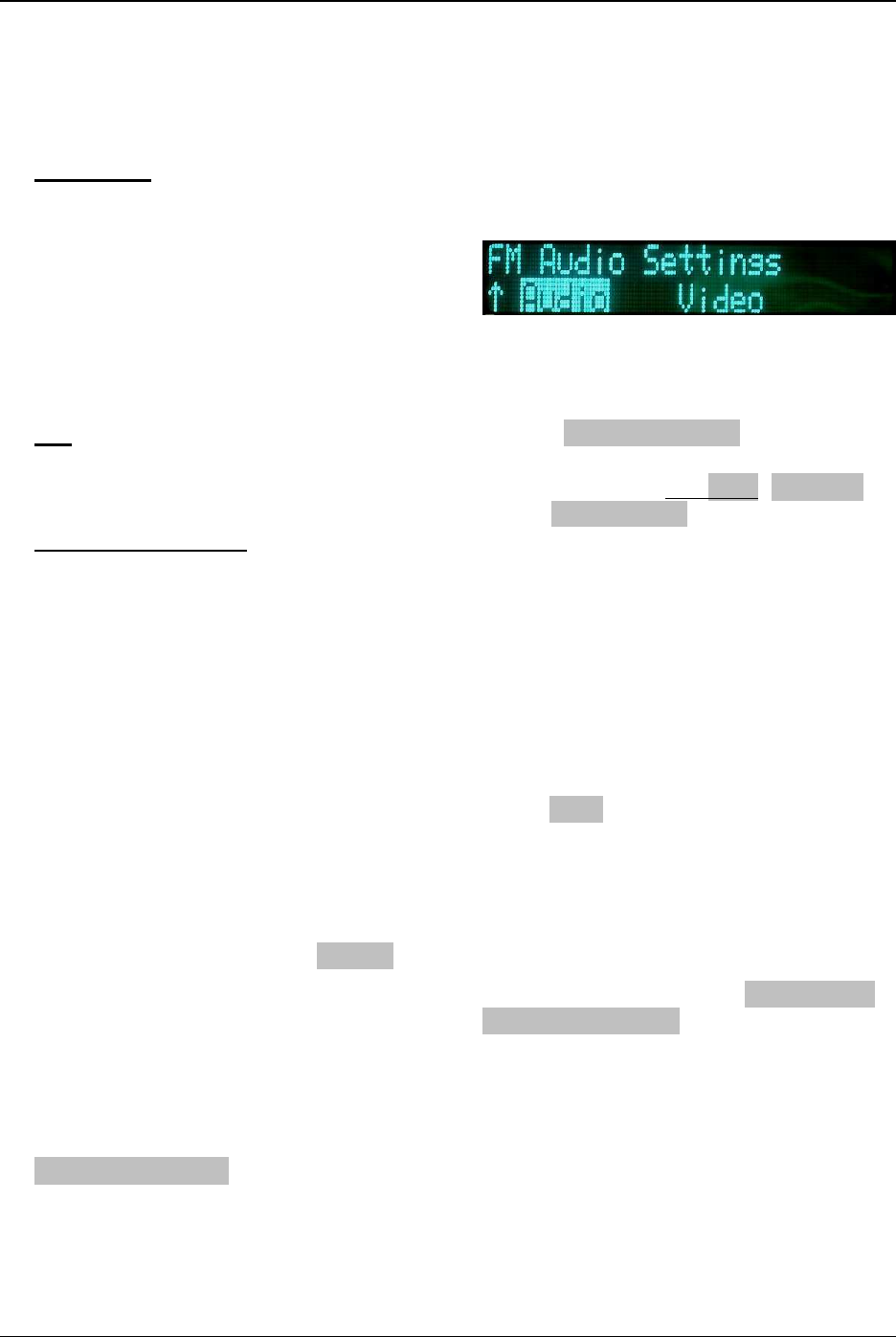
Revision 1.03
5-8 ChannelMaster TX7 Transmitter
When analog modulation is selected,
the available input selections are:
Composite - The composite signal is
routed through the internal low pass
filter (bandwidth ± 4.0 MHz NTSC,
± 5.6 MHz PAL typical) then sent to
the FM modulator.
Note: To input Baseband video, set
the video filter to “Bypass.” See sec.
5.7.1.
SDI - Internal circuits convert SDI
inputs to Composite. The signal is
then processed as Composite.
External 70 MHz FM - This input
bypasses the modulator, and routes
to the heterodyne up-converter.
5.7 Modulation Menu
Selections
The Modulation Menu establishes the
operating parameters for both Analog
and Digital modulation schemes. The
Modulation Menu has two sub-menus:
• Mode Select
• Parameter Setup
Mode Select is used strictly for select-
ing the type of Digital Modulation to be
utilized. Choices are COFDM, DVB-S,
and VSB.
Parameter Setup allows the user to
change or adjust the various parameters
affecting the different modulation types:
• FM
• COFDM
• DVB-S (Future)
• VSB
5.7.1 FM
For FM (i.e. Analog FM Modulation),
there are two sub-categories: Audio,
and Video.
AUDIO
Under the FM Audio sub-menu, the
user can choose between any one of
four Analog audio channels (SC1L,
SC1-R, SC2-L, & SC2-R) and change
any of the following:
• Input: Off, Line/Line, Line/Mic,
Line/Mic+PP, Tone, AES/EBU,
and Embedded
• Insertion: Adjusts from –40 dB to
–20 dB; (default –28 dB.)
• Gain: Adjusts from –6 dB to
+6 dB; (default 0.0 dB)
• Frequency: Adjusts sub-carrier
frequency. (Refer to table in Sec-
tion 5.7.1. Audio Sub-carrier
Frequencies.)
If Line/Line is selected, the unit accepts
balanced 600 Ω inputs at +8 dBm Ana-
log (–10 dBu Digital). At 1 kHz input,
headroom is +18 dBm Analog
(0 dBu Digital).
If AES is selected, the unit accepts digi-
tal AES audio on Audio 1 (and Audio 3
in a four audio unit). If only two audio
channels are configured, they will be the
first channel in Group 1.
If Embedded is selected, the audio data
embedded in the incoming SDI stream
will be used. This selection will only be
available when SDI input is selected.
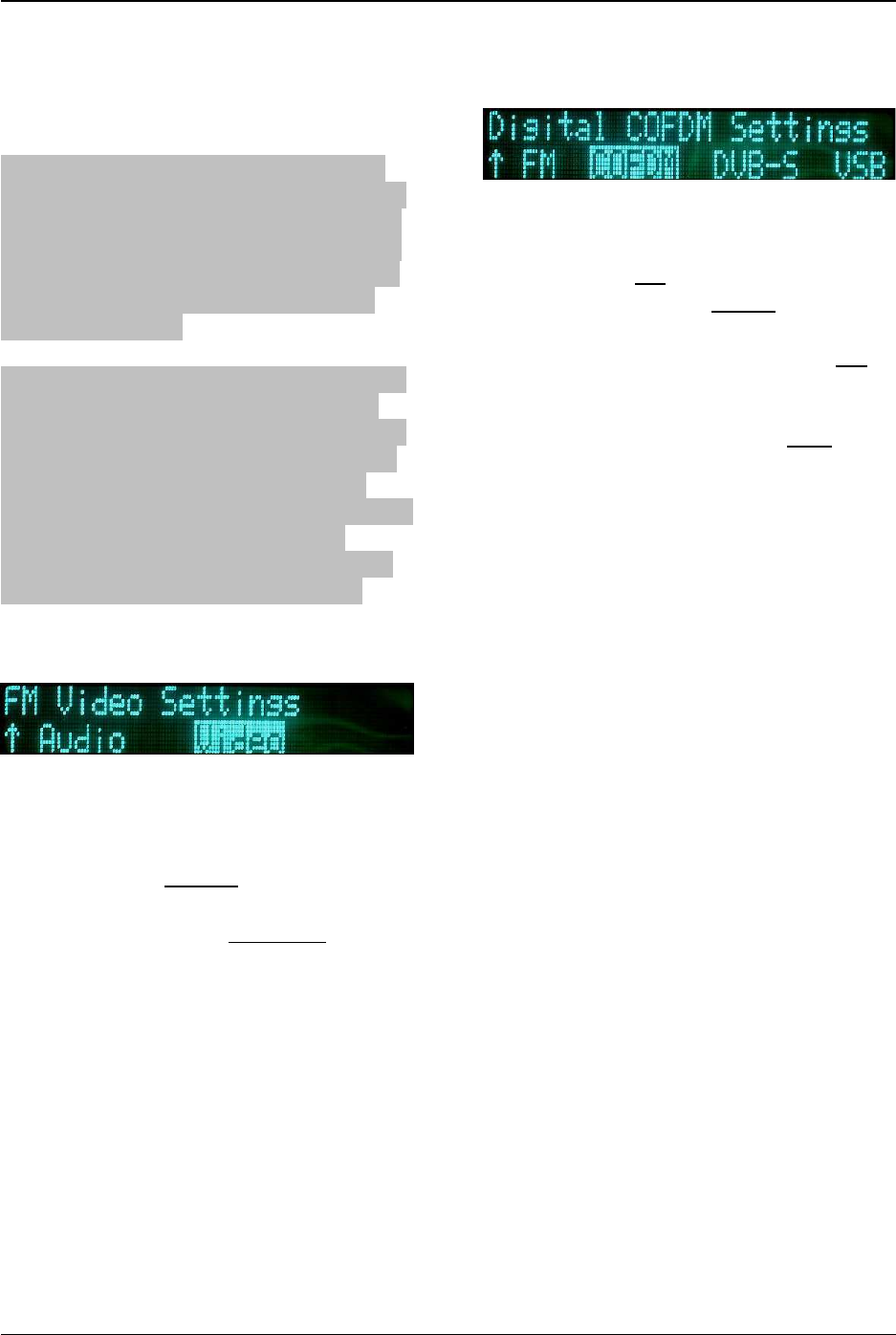
Revision 1.03
Operation 5-9
A 1 kHz Tone can be activated. The
tone is steady on the left channel, and
intermittent on the right channel.
When Line/Mic is selected, the unit is
set to accept a line input on the left con-
nector, and input from a microphone on
the right connector. The microphone in-
put range is -4dB to +41dB. This option
is only available on models with front
panel XLR inputs.
When Line/Mic+PP is selected, the unit
is set to accept a line input on the left
connector, and input from a microphone
on the right connector. Phantom power
is output on pins 2 and 3 of the right
connector to power the microphone. The
microphone input range is -4dB to
+41dB. This option is only available on
models with front panel XLR inputs.
VIDEO
Under the FM Video sub-menu, the
user can change any one of four selec-
tions. They are:
• Inverse: Normal, Inverse
• Emphasis: Emphasis, Flat
• Filter: Bypass, 3.90 MHz, 4.50
MHz, 4.75 MHz, 5.60 MHz. (In
PAL mode only 5.60 MHz and
Bypass are available.) The filter
setting allows you to groom the
incoming video signal bandwidth.
Setting the filter to bypass allows
for input of Baseband video.
• Deviation Bandwidth: (Display
Only)
5.7.2 COFDM
For the COFDM (Digital) sub-menu, the
following parameters can be changed:
• Power: On, Off
• Constellation: QPSK, 16QAM,
64QAM
• Code Rate
(error correction)
:1/2,
2/3, 3/4, 5/6, 7/8
• Guard Interval
(guard spacing -
delay between intervals)
: 1/32, 1/16,
1/8, 1/4.
• Bandwidth: 6 MHz, 7 MHz,
8 MHz
Note: Adjusting these settings modifies
the data rate.
COFDM Guidelines
The COFDM Data Rate is determined
by manipulating Guard Interval, Code
Rate, Bandwidth and Constellation, per
the COFDM Data Rate tables in Section
5.7.
As a rule of thumb, select the COFDM
parameters in this order:
1. Use the lowest data rate required
to pass the necessary data.
2. Use the maximum Bandwidth al-
lowed by your spectrum man-
ager(s).
3. Choose the minimum Constella-
tion (i.e. Modulation System) set-
ting that will allow the data rate
required. For example, don’t use
16QAM if enough data can be
transmitted using QPSK.
4. Adjust the GI (Guard Interval)
and CR (Code Rate).
(a) The GI, or "safety bits", help
allow COFDM to operate in mul-
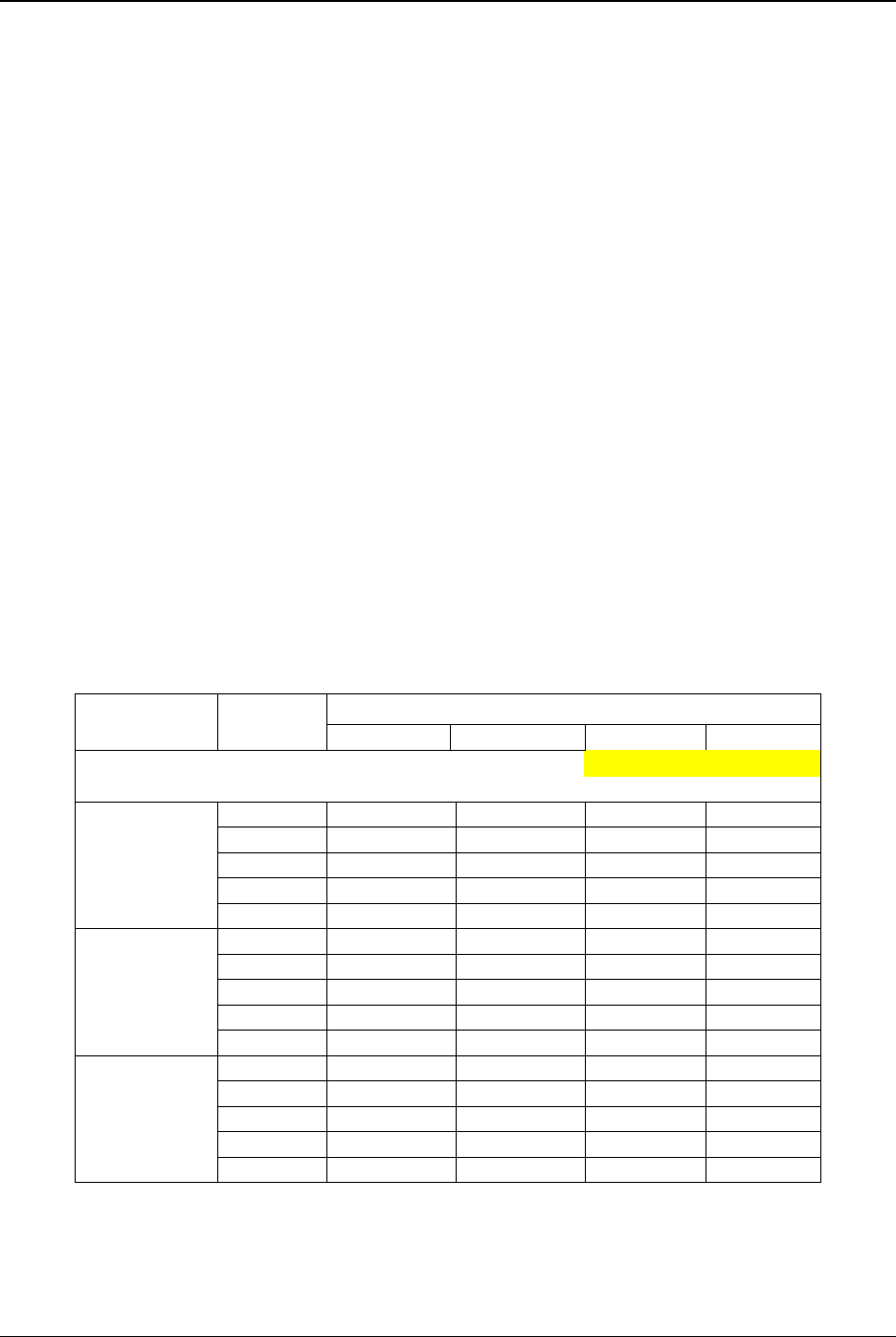
Revision 1.03
5-10 ChannelMaster TX7 Transmitter
tipath environments (around
buildings, across water, etc) by
increasing the time delay be-
tween data segments. Increasing
the GI (1/4 is the maximum set-
ting) increases link robustness
but reduces the overall data rate,
as less time is made available for
payload transmission. Con-
versely, moving the GI towards
1/32 (the minimum) decreases
link robustness but allocates
more bits to payload.
(b) The CR controls how much
error correction overhead is in-
cluded in the data stream. To
compensate for a poor link, mov-
ing the CR towards 1/2 (maxi-
mum error correction)
increases link robustness as bits
are re-allocated from payload to
error correction. Moving the CR
towards 7/8 (minimum error cor-
rection) allocates bits from error
correction to payload.
COFDM Data Rate
Tables 5-1 through 5-3 show the data
rates which can be achieved by modify-
ing the COFDM parameters.
Note: When inputting ASI signals, the
data rate should be set to approximately
1-2 kbps above the ASI input rate.
Table 5-1: ChannelMaster 8 MHz B/W Data Rates
Guard Interval
Modulation
System
Code
Rate
1/32 1/16 1/8 1/4
IF = 9.142857 MHz Flo = 60.857143 MHz
BW = 8 MHz
Clk=36.571429 Mbit/s Data Rate (Mbit/s)
1/2 6.032086 5.854671 5.529412 4.976471
2/3 8.042781 7.806228 7.372549 6.635294
QPSK 3/4 9.048128 8.782007 8.294118 7.464706
5/6 10.053476 9.757785 9.215686 8.294118
7/8 10.55615 10.245675 9.676471 8.708824
1/2 12.064172 11.709342 11.058824 9.952942
2/3 16.085562 15.612456 14.745098 13.270588
16-QAM 3/4 18.096256 17.564014 16.588236 14.929412
5/6 20.106952 19.51557 18.431372 16.588236
7/8 21.1123 20.49135 19.352942 17.417648
1/2 18.096258 17.564013 16.588236 14.929413
2/3 24.128343 23.418684 22.117647 19.905882
64-QAM 3/4 27.144384 26.346021 24.882354 22.394118
5/6 30.160428 29.273355 27.647058 24.882354
7/8 31.66845 30.737025 29.029413 26.126472

Revision 1.03
Operation 5-11
Table 5-2: ChannelMaster 7 MHz B/W Data Rates
Guard Interval
Modulation
System
Code
Rate
1/32 1/16 1/8 1/4
IF = 7.999999875 MHz Flo = 62.000000125 MHz
BW = 7 MHz
Clk=32.0000 Mbit/s Data Rate (Mbit/s)
1/2 5.27807525 5.12283713
4.8382355 4.35441213
2/3 7.037433375
6.8304495 6.45098038
5.80588225
QPSK 3/4 7.917112 7.68425613
7.25735325
6.53161775
5/6 8.7967915 8.53806188
8.06372525
7.25735325
7/8 9.23663125 8.96496563
8.46691213
7.620221
1/2 10.5561505 10.2456743
9.676471 8.70882425
2/3 14.07486675
13.660899 12.9019608
11.6117645
16-QAM 3/4 15.834224 15.3685123
14.5147065
13.0632355
5/6 17.593583 17.0761238
16.1274505
14.5147065
7/8 18.4732625 17.9299313
16.9338243
15.240442
1/2 15.83422575
15.3685114
14.5147065
13.0632364
2/3 21.11230013
20.4913485
19.3529411
17.4176468
64-QAM 3/4 23.751336 23.0527684
21.7720598
19.5948533
5/6 26.3903745 25.6141856
24.1911758
21.7720598
7/8 27.70989375
26.8948969
25.4007364
22.860663
Table 5-3: ChannelMaster 6 MHz B/W Data Rates
Guard Interval
Modulation
System
Code
Rate
1/32 1/16 1/8 1/4
IF = 6.85714275 MHz Flo = 63.14285725 MHz
BW = 6 MHz
Clk=27.428571 Mbit/s Data Rate (Mbit/s)
1/2 4.5240645 4.48248248
4.2334561 3.81011061
2/3 6.03208575 5.854671 5.5294118 4.9764705
QPSK 3/4 6.786096 6.58650525
6.2205885 5.5985295
5/6 7.540107 7.31833875
6.9117645 6.2205885
7/8 7.9171125 7.68425625
7.2573533 6.531618
1/2 9.048129 8.7820065 8.294118 7.4647065
2/3 12.0641715 11.709342 11.058824 9.952941
16-QAM 3/4 13.572192 13.1730105
12.441177 11.197059
5/6 15.080214 14.6366775
13.823529 12.441177
7/8 15.834225 15.3685125
14.514707 13.063236
1/2 13.5721935 13.1730098
12.441177 11.1970598
2/3 18.0962573 17.564013 16.588235 14.9294115
64-QAM 3/4 20.358288 19.7595158
18.661766 16.7955885
5/6 22.620321 21.9550163
20.735294 18.6617655
7/8 23.7513375 23.0527688
21.77206 19.594854
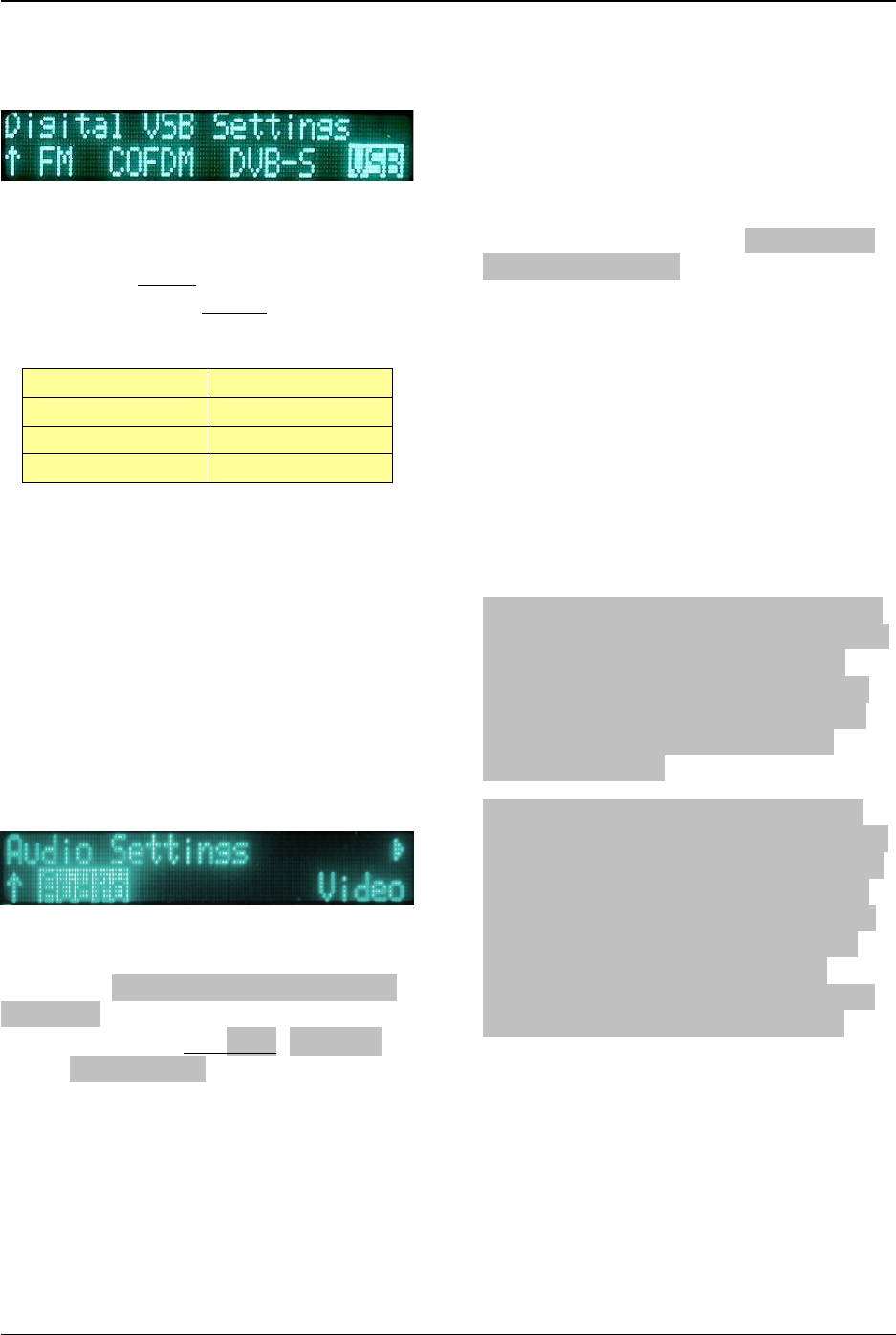
Revision 1.03
5-12 ChannelMaster TX7 Transmitter
5.7.3 VSB
The following parameters can be
changed using the VSB sub-menu:
• Type: 2VSB, 8VSB, 8TVSB
• Bandwidth: 6 MHz
Table 5-4: VSB Data Rates at 6MHz
VSB
Data Rate (Mbit/s)
2VSB 9.696329
8TVSB* 19.392658
8VSB 29.088987
*The ATSC standard is 8TVSB at 6MHz.
5.8 Encoder Menu Selections
The Encoder Menu sets the MPEG 2
parameters, and has four sub-menus:
• Audio
• Video
• Service
• Mux
5.8.1 AUDIO
Under the Audio sub-menu, the user
can modify parameters for Digital Audio
Channel 1 and Digital Audio Channel 2
(if active).
• Input: Off, Line/Line, Line/Mic,
Line/Mic+PP, Tone, AES/EBU,
and Embedded
• Sample Rate: (Per Display)
• Level (L): Adjusts left-side input
level from –6 dB to +6 dB; (de-
fault 0.0 dB)
• Level (R): Adjusts right-side input
level from –6 dB to +6 dB; (de-
fault 0.0 dB)
The digital audio gain adjustment allows
for ±6 dB of gain, and can be used to
compensate for variance in line and mi-
crophone input levels.
If AES is selected, the unit accepts digi-
tal AES audio on Audio 1 (and Audio 3
in a four audio unit) and sends it to the
MPEG encoder. If only two audio chan-
nels are configured, they will be the first
channel in Group 1.
If Embedded is selected, the audio
channels embedded in the incoming SDI
stream will be used.
A 1 kHz Tone can be activated. The
tone is steady on the left channel, and
intermittent on the right channel.
If Line/Mic is selected, the unit is set to
accept a line input on the left connector,
and input from a microphone on the
right connector. The microphone input
range is -4dB to +41dB. This option is
only available on models with front
panel XLR inputs.
If Line/Mic+PP is selected, the unit is
set to accept a line input on the left con-
nector, and input from a microphone on
the right connector. Phantom power is
output on pins 2 and 3 of the right con-
nector to power the microphone. The
microphone input range is -4dB to
+41dB. This option is only available on
models with front panel XLR inputs.
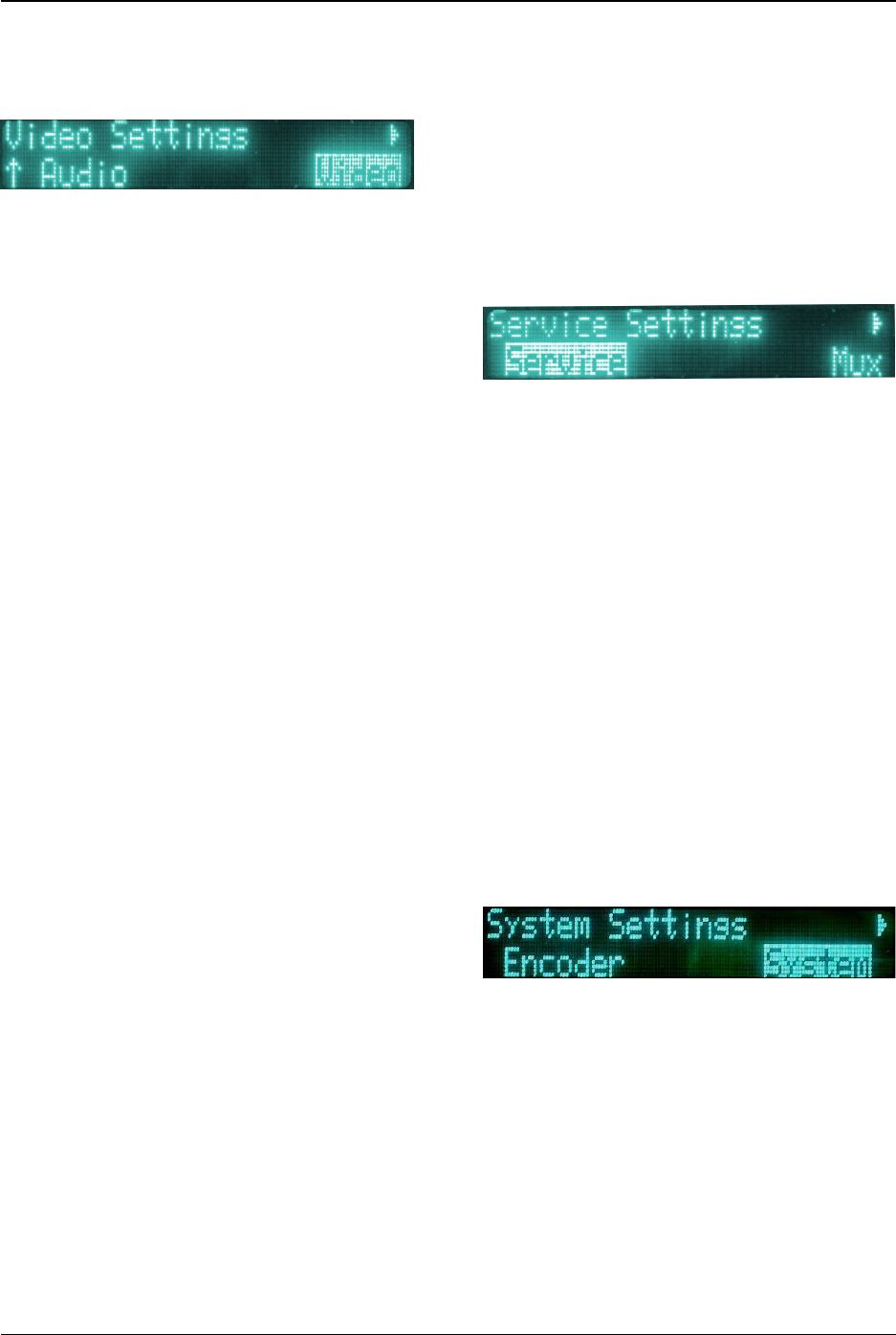
Revision 1.03
Operation 5-13
5.8.2 VIDEO
Under the Video sub-menu, the user
can select any one of ten video settings,
plus adjust the GOP setting.
The video input type selections are:
• 0: NTSC: 720x480(4:2:0)11
The following require >10mbps
• 1: NTSC: 720x525(4:2:2)
The following require >19mbps
• 2: 1080/59.94i:MP@HL
• 3: 1080/59.94i:MP@H14L
• 4: 720/59.94p:MP@HL
• 5: PAL:720x576(4:2:0)11
• 6: PAL:720x625(4:2:2)
• 7: 1080/50i:MP@HL
• 8: 1080/50i:MP@H14L
• 9: 720/50p: MP@HL
Using the GOP setting, the user can
specify the type and amount of frames
and the sequence used. The available
selections for this setting are:
0: Super Low Delay – very fast en-
coding with low latency (the time it
takes
a
data packet to move across a
network connection
).
1: IP–15 Frame – encoding utilizing
Intra and Prediction frames, with a se-
quence of 15 frames.
2: IP–30 Frame – encoding utilizing
Intra and Prediction frames, with a se-
quence of 30 frames.
3: IPB–15 Frame – (default) encod-
ing utilizing Intra, Prediction, and Bi-
directional frames, with a sequence of
15 frames.
4: IPB–30 Frame – encoding utilizing
Intra, Prediction, and Bi-directional
frames, with a sequence of 30 frames.
5: IPBB–16 Frame – the slowest en-
coding utilizing Intra, Prediction, and
Bi-directional frames, with a sequence
of 16 frames, but with double bi-
directional frames. It has the highest
type of encoding quality.
5.8.3 SERVICE
The Service sub-menu addresses how
MPEG-2 data packets are identified dur-
ing transmission. The following values
can be set by the user:
• Service Name: (16 characters)
• Service Provider: (16 charac-
ters)
• PCR PID: (hexadecimal value)
• Video PID: (hexadecimal value)
• Audio 1 PID: (hexadecimal
value)
• Audio 2 PID: (hexadecimal
value)
(Refer to Section 5.1.1: Changing
Characters.)
5.9 System Menu Selections
The System Menu establishes the gen-
eral operating parameters for the Chan-
nelMaster TX7. The System Menu has
seven sub-menus:
• Options
• Remote
• Version
• Restore
• Frequency
• Factory
• BAS
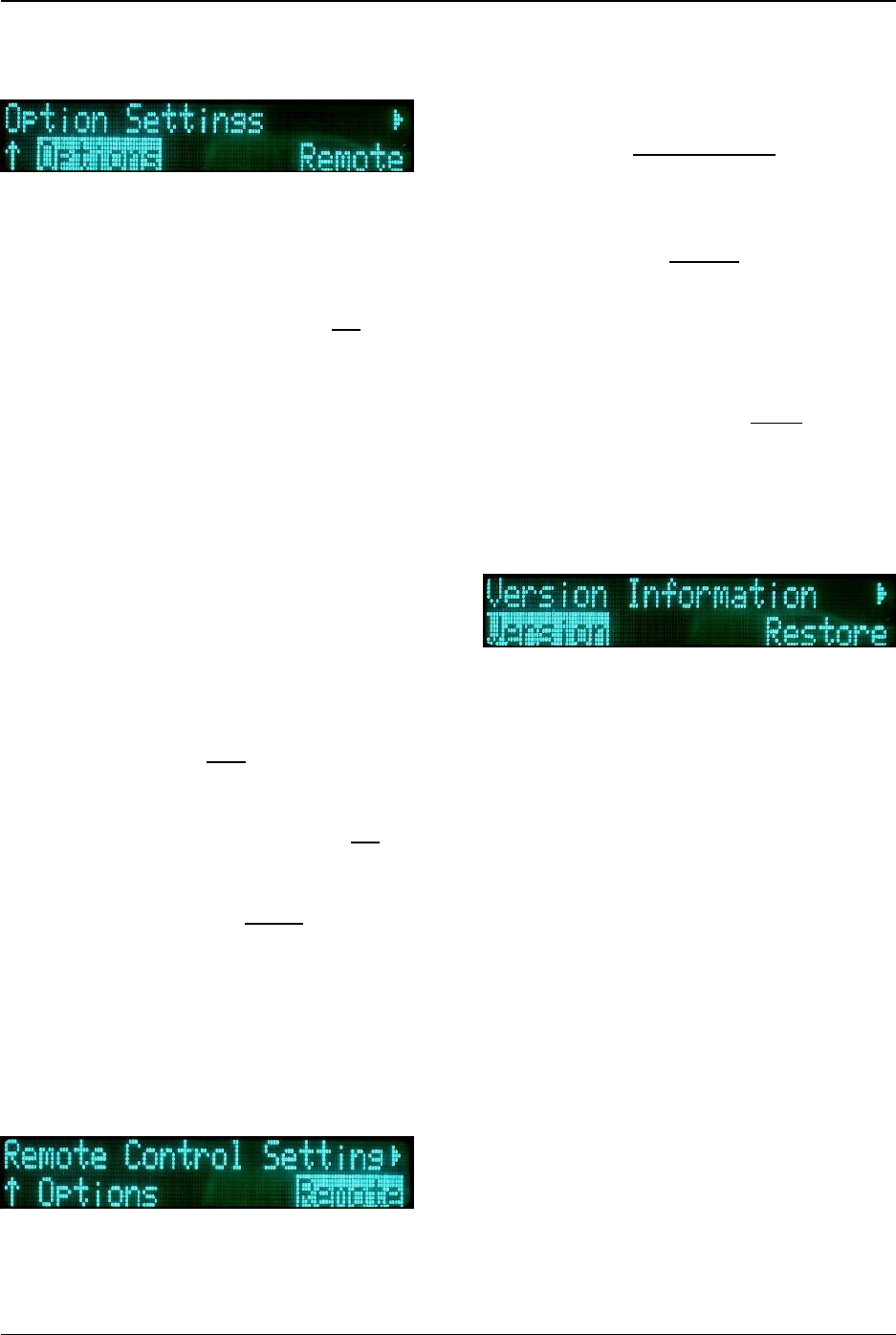
Revision 1.03
5-14 ChannelMaster TX7 Transmitter
5.9.1 OPTIONS
With the Option sub-menu, the user can
set the various miscellaneous
parameters utilized by the system. The
parameters for this sub-menu are:
• Frequency Direct: (Yes, No) -
If “Yes”, the user can change the
frequency from the default
screen, via the Quick Knob. If
“No”, the frequency can only be
changed via the frequency menu.
• Start in: Controls the startup
mode of the unit.
o NORM - RF Transmitter on
o STBY – Standby
o VIDSTB - Video Standby
o LAST - Starts in same mode
as when previously shutdown.
• Save Preset - allows the user to
enable (Yes) or disable (No) the
saving of Presets.
• BAS Menu: (Yes, No) - The sys-
tem will display (Yes) or hide (No)
the BAS options menu.
• Preset Lock RF CH: (Yes, No) -
If “Yes”, the channel may not be
changed by a preset.
• Video Present: (Stdby, Bars) -
should the video signal be lost,
this parameter allows the user to
choose between the TX7 going
into Standby Mode or displaying
Color Bars.
5.9.2 REMOTE
With the Remote sub-menu, the user
can set the various parameters utilized
by the system for distance remote con-
trol communications. The parameters
for this sub-menu are:
• Mode: (Remote/Local, Local) -
allows the unit to be toggled be-
tween Remote & Local control,
and Local (only) control.
• Interface: (RS232, RS485) - se-
lects between the two types of
serial interface communication.
• Address: (hexadecimal value) -
sets the remote address of the
ChannelMaster TX7.
• Baud Rate: (2400, 9600, 19200,
38400, 57600, 115200) - sets the
speed of the serial connection.
5.9.3 VERSION
With the Version sub-menu, the user
can view general system information:
• Serial Number
• Model Number
• Front Panel Revision
• Configuration Data
• Frequency Plan Number
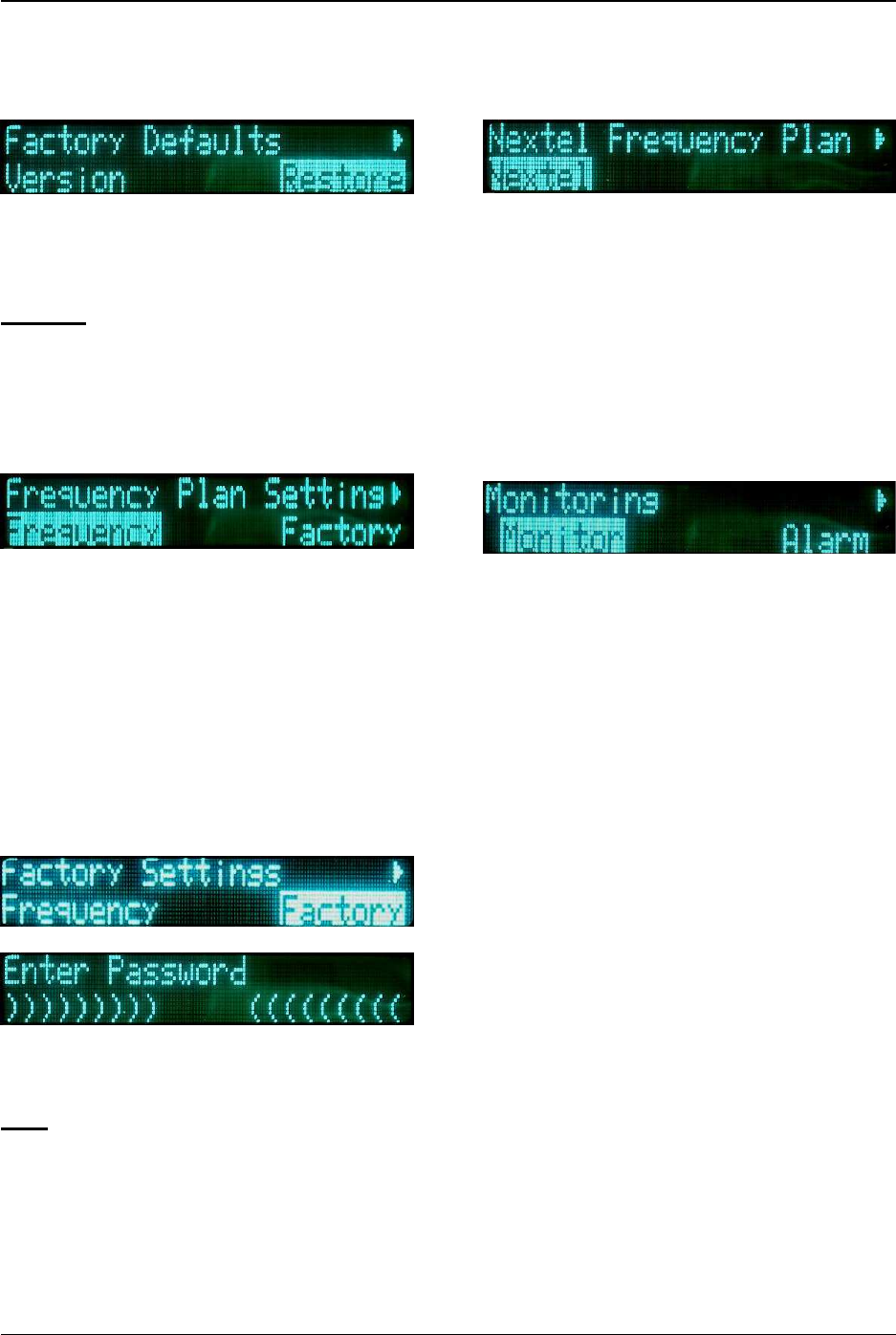
Revision 1.03
Operation 5-15
5.9.4 RESTORE
The Restore option allows the user to
restore all factory defaults to the TX7.
Caution, all previously stored
changes will be erased from memory,
including Presets.
5.9.5 FREQUENCY
The Frequency option allows an ex-
perienced user to modify the frequency
plan utilized by the ChannelMaster TX7
using the front panel LCD. Extreme
caution should be used, since
changes will affect the RF function of
the unit.
5.9.6 FACTORY
The Factory Settings are to be used
by Nucomm authorized personnel
only! Any unauthorized tampering
could make the unit unstable or unus-
able.
5.9.7 BAS
For the BAS (formerly “NEXTEL”) sub-
menu, see Section 5.7: BAS Reloca-
tion Settings.
5.10 Monitoring Menu
Selections
5.10.1 MONITOR
The Monitor option allows the user to
monitor operational conditions of several
components while the unit is in use.
These include:
• PSU
• Temperature
• Modulator
• Upconverter
• Front Panel
NOTE: For PSU values, all voltages are
set to alarm at a condition of
± 10%.
Alarms are reported when errors occur
during the operation of the ChannelMas-
ter TX7. The alarm may be the result of
a detected broken communications link
or an improper input (etc.), and not the
fault of the unit itself. Regardless of the
problem, the Alarm LED will illuminate,
and the LCD will flash a text message
stating the alarm problem.

Revision 1.03
5-16 ChannelMaster TX7 Transmitter
5.10.2 ALARM
Working in conjunction with the Alarms
function, the Alarm History List allows
the user to view any active alarm(s) cur-
rently affecting the system. When the
alarm problem is resolved, the alarm will
disappear from the listing.
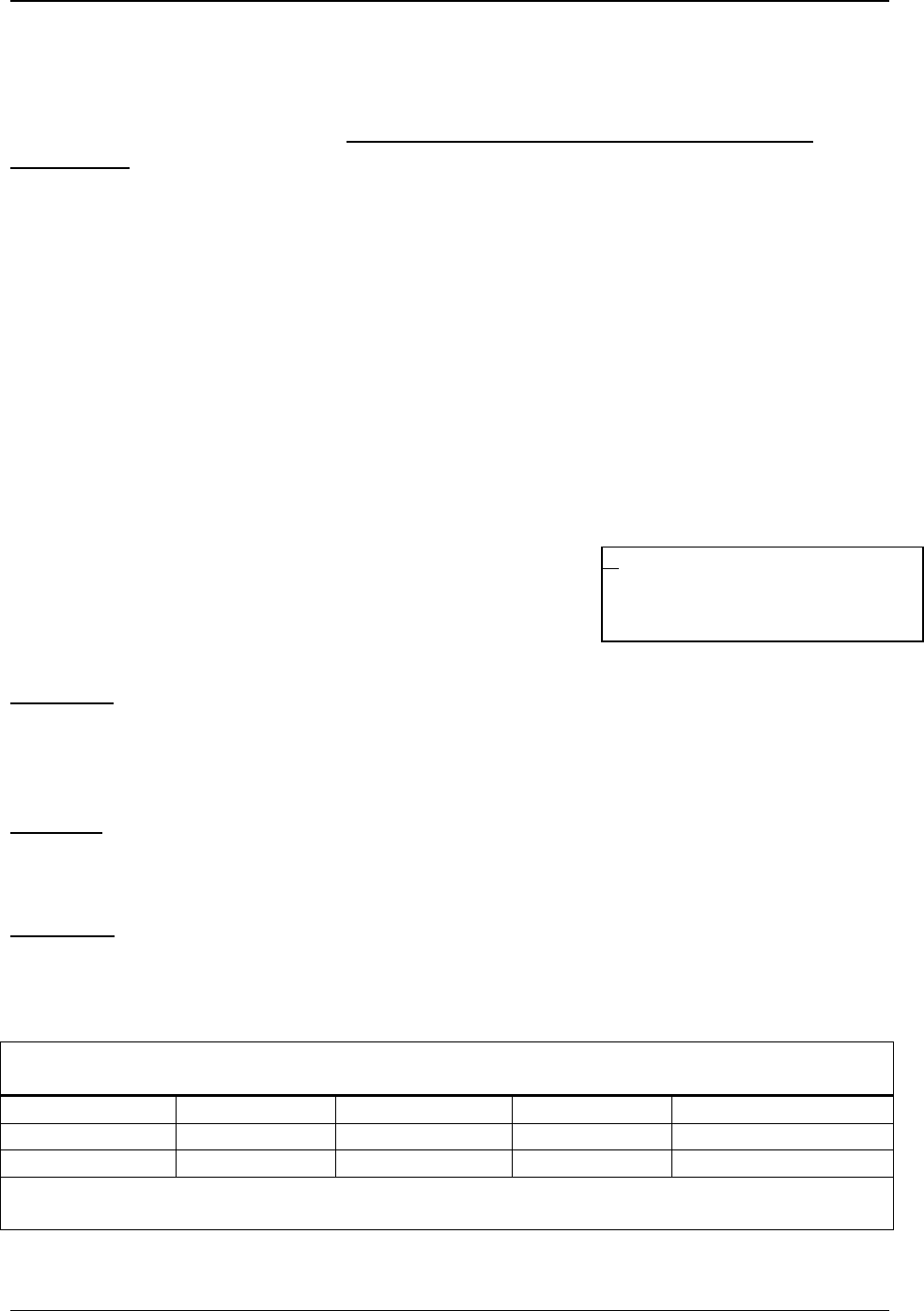
Revision 1.03
Operation 5-17
5.11 BAS Relocation Settings
For our US clients, the ChannelMaster is designed so that, when properly config-
ured per the following guidelines, you will only need to change one setting on
one screen when it’s time to switch over to the “post-relocation” 2 GHz band
plan.
To preset the unit to allow a “one setting” switchover, there are two groups of set-
tings that must be made in advance: “AUDIO SUB-CARRIER FREQUENCY” and
“CHANNEL BANDWIDTH & BAND PLAN”. These are described below.
5.11.1 Audio Sub-Carrier Frequency
In this section, you set your “pre-relocation” and “post-relocation” Audio Sub-
Carrier (ASC) frequencies, so that when you make the switchover they will be
ready to go.
Start the ASC set-up procedure by making the following menu selections:
MENU>MODULATION>PARAMETER SETUP>FM>AUDIO
This brings up a screen similar to the one at right, with
the settings and selections as described below.
All ASC’s are modified in the same fashion. ASC#1 is
used as the example.
2(17)/7/13
This setting controls the frequency for the selected Sub-Carrier when op-
erating in the “pre-relocation” 2 GHz band (USA), as well as for all the
other frequency bands (i.e. 7 GHz or 13 GHz). The possible range for this
setting is 4.83 MHz to 8.5 MHz. (Refer to Section 5.2.1 - Changing Oper-
ating Frequency.)
2(12) 1-7 This setting controls the frequency for the selected Sub-Carrier when op-
erating in the “post-relocation” 2 GHz band (USA) on channels 1 through
7. The possible range for this setting is 4.83 MHz to 5.8 MHz. (Refer to
Section 5.2.1 - Changing Operating Frequency.)
2(12) 8-10
This setting controls the frequency for the selected Sub-Carrier when op-
erating in the “post-relocation” 2 GHz band (USA) on channels 8 through
10. The possible range for this setting is 4.83 MHz to
8.5 MHz. (Refer to Section 5.2.1 - Changing Operating Frequency.)
Nucomm’s Default Audio Sub-carrier Frequencies
Band-plan ASC1 ASC2 ASC3* ASC4*
2(17)/7/13 4.83 MHz 6.20 MHz 6.80 MHz 7.50 MHz
2(12) 1-7 4.83 MHz 5.80 MHz 6.80 MHz 7.50 MHz
2(12) 8-10 4.83 MHz 6.20 MHz 6.80 MHz 7.50 MHz
*NOTE: Due to bandwidth limitations, only two ASC’s can be active on the “post-
relocation” 2 GHz band-plan (US), regardless of how the unit is hardware configured.
SC1 Insertion:
(-20 to -40dBc)
2(17)/7/13: 4.83 MHz
2(12) 1-7: 4.83 MHz
2(12) 8
-
1
0
:
4.83 MHz

Revision 1.03
5-18
ChannelMaster TX7 Transmitter
2GHz Freq Plan:
2G(17), 2G(12)
BW(2G(17)/7/13): 4MHz, 3MHz
BW(2G(12)8-10): 4MHz, 3MHz
5.11.2 Channel Bandwidth and Band Plan
In this section, you can set your “pre-relocation” and “post-relocation” Video
Bandwidth Deviation, so that when you make the switchover they will be
ready to go.
Start by making the following menu selections: MENU>SYSTEM>BAS.
(Note: If the BAS screen is not visible then it must be enabled by selecting
MENU>SYSTEM>OPTIONS>BAS MENU=YES.)
This brings up the screen at right, with the
settings and selections as described below:
2GHz Freq Plan This setting controls the 2 GHz Frequency Plan, which will be
used by the radio. Select the 17 MHz “pre-relocation” band-plan
by choosing “2G(17)”, or the 12 MHz “post-relocation” band-plan
by choosing “2G(12)”.
BW(2G(17)(7/13) This setting controls your Video Deviation bandwidth when oper-
ating in the “pre-relocation” 2 GHz band (USA), as well as for all
the other frequency bands (i.e. 7 GHz or 13 GHz). The possible
selections are 3 MHz or 4 MHz.
BW(2G(12) 8-10) This setting controls the Video Deviation bandwidth when operat-
ing in the “post-relocation” 2 GHz band (USA) on channels 8
through 10. The possible selections are 3 MHz or 4 MHz.
NOTE: Due to bandwidth limitations of the “post-relocation” 2 GHz band-plan, in
“2G(12)” mode, the Video Deviation bandwidth of 2 GHz channels 1 through 7 is
locked at 3 MHz.
5.11.3 Switchover to “Post-relocation” Settings
For our US clients, when your DMA switchover date arrives, assuming you have
already set the unit per the preceding guidelines, you will only need to take the
following steps to put the radio on the new “post-relocation” settings:
Step #1: Navigate to the following menu:
MENU>SYSTEM>BAS
Step #2: Change your “2 GHz Freq Plan” setting from “2G(17)” to “2G(12)”
Step #3: Done!
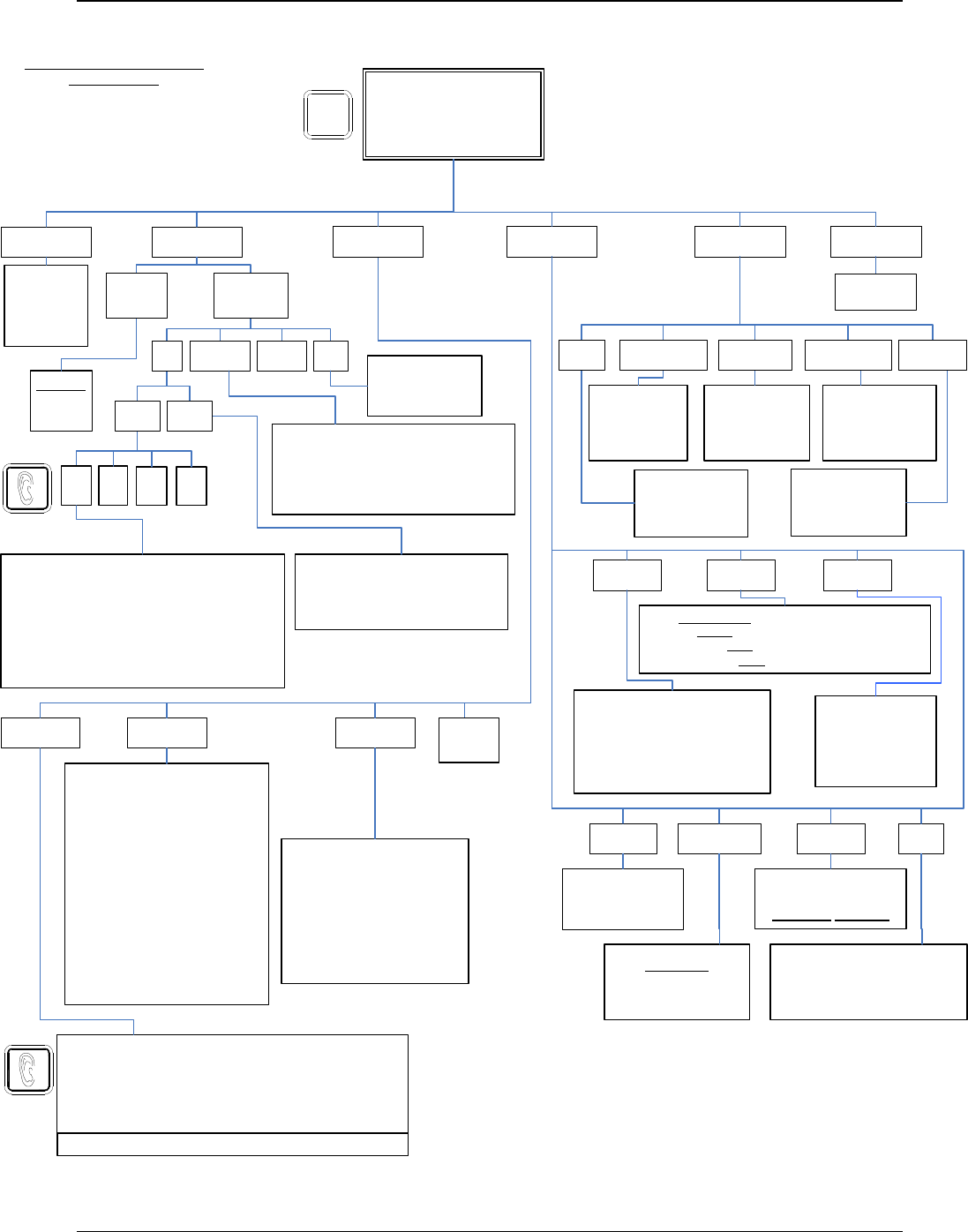
Revision 1.03
Operation 5-19
ChannelMaster TX7
Main Menu
Composite7
SDI
70MHz
ASI1
COFDM
DVB-S
VSB
Power: On, Off
Constellation:QPSK, 16QAM, 64QAM
Code Rate: 1/2, 2/3, 3/4, 5/6, 7/8
Guard Interval: 1/4, 1/8, 1/16, 1/32
Bandwidth: 6MHz, 7MHz, 8MHz
Audio1: LINE/LINE, LINE/MIC, LINE/MIC+PP, AES/EBU,
Embedded2, Tone, Off
Bit Rate: 128K, 256K,384K6
Level(L): 0dB (-6 to +6) (default: 0dB)5
Level(R): 0dB (-6 to +6) (default: 0dB)5
Input Type:
0: NTSC: 720x480(4:2:0)8
The following require >10mbps
1: NTSC: 720x525(4:2:2)
The following require >19mbps
2: 1080/59.94i: MP@HL
3: 1080/59.94i: MP@H14L
4: 720/59.94p: MP@HL
5: PAL: 720x576(4:2:0)8
6: PAL: 720x625(4:2:2)
7: 1080/50i: MP@HL
8: 1080/50i: MP@H14L
9: 720/50p: MP@HL
GOP: 0-5
Service Name: user text
Service Provider: user text
PCR PID: user selectable
Video PID: user selectable
Audio1 PID: user selectable
Audio2 PID: user selectable
Service Rate: Auto/Fixed
(bps)
Frequency Direct: YES, NO
Start in: YES, NO
Save Pre-Set: YES, NO
BAS Menu: YES, NO
Preset Lock RF CH: YES, NO
Video Present: STDBY, Bars
Mode: Remote/Local, Local Only
Interface: RS232, RS485
Address: (Hex) 0x01 – 0xFF
Baud Rate: 2400, 9600, 19200, 38400, 57600, 115200
CAUTION!
Allows the user to
Modify the Band Plan.
Serial Number
Model Number
Front Panel Rev
Config Data #
Frequency Plan #
ONLY FOR FACTORY
AUTHORIZED USE!
(Password Required)
2GHz Freq Plan: 2G(17),2G(12)
BW(2G(17)/7/13): 4MHz, 3MHz
BW(2G(12)8-10): 4MHz, 3MHz
Software Version
Monitor +48v3,
+12v & +5v levels
Temperature of
Control Unit,
and RF Head3
Software Version
Software Date
Current Rate
Maximum Rate
Monitor
+10v, +5v
& Loop levels
Software Version
Monitor +48v,
+12v & +5v levels
Input: OFF, LINE/LINE, LINE/MIC, LINE/
MIC+PP, TONE, AES/EBU, Embedded2
Insertion: (dB) (default: -28dB)
Gain: (dB) (default: 0dB)
Freq (2(17)/7/13): (MHz)4
Freq (2(12) 1-7): (MHz)4
Freq (2(12) 8-10): (MHz)4
Inverse: Normal, Inverse
Emphasis: Emphasis, Flat
Filter: Bypass, 3.90 – 5.60
Deviation Bandwidth: (display only)
SC1
(L)
SC1
(R)
MENU
Underlining denotes a Factory
Default setting.
SC2
(L)
SC2
(R)
Certain menu items may not be
available on a given system due to
the many customizable features.
Type: 2VSB,
8VSB, 8TVSB
Bandwidth: 6MHz
Monitor Alarm
BASFactoryFrequencyRestore
VersionRemoteOptions
Restore
Factory Defaults?
YES, NO
System
Input Modulation
ServiceVideoAudio
Encoder
RF Head3
UpconverterMod / EncTemperaturePSU
View Active
Alarms
VSBDVB/SCOFDM
VideoAudio
FM
Mode
Select
Parameter
Setup
1Only available with Digital Modulation
2Only available with SDI input
3TX7T only
4Factory defaults: 4.83, 6.2, 6.8, 7.5MHz
5Only available with Analog Modulation
6:Bit rate forced to 384k in GOP 0 mode.
7:Disabled in HD mode.
8: The video bit rate will be limited to 15mpbs.
Audio2: (same as above if installed.)
Mux
(Not Used)
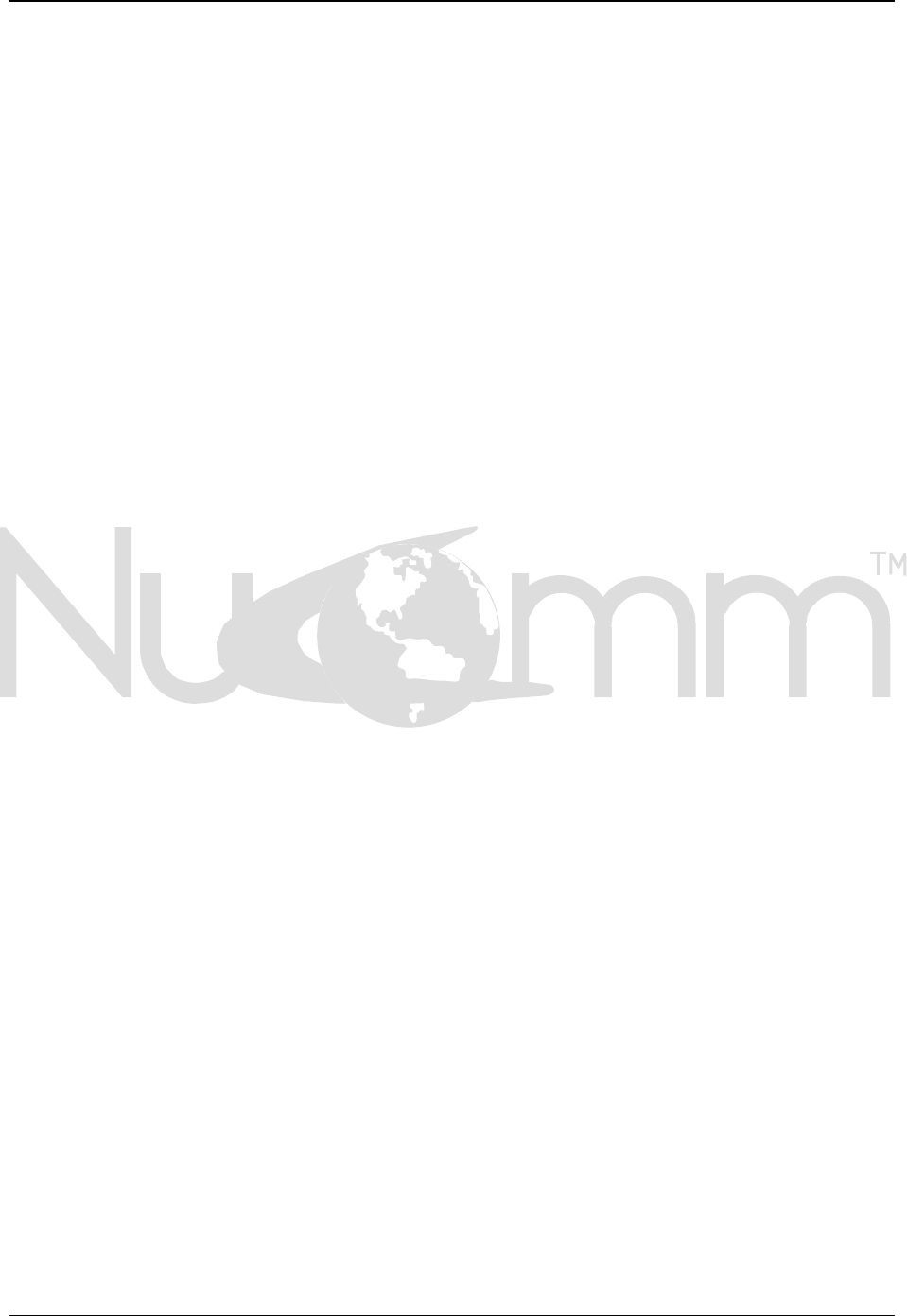
Revision 1.03
5-20
ChannelMaster TX7 Transmitter
RF Extreme, LLC – A Vitec Group Company
101 Bilby Road
Hackettstown, NJ 07840
Tel: 908-852-3700 Fax: 908-813-0399
www.RFExtreme.com